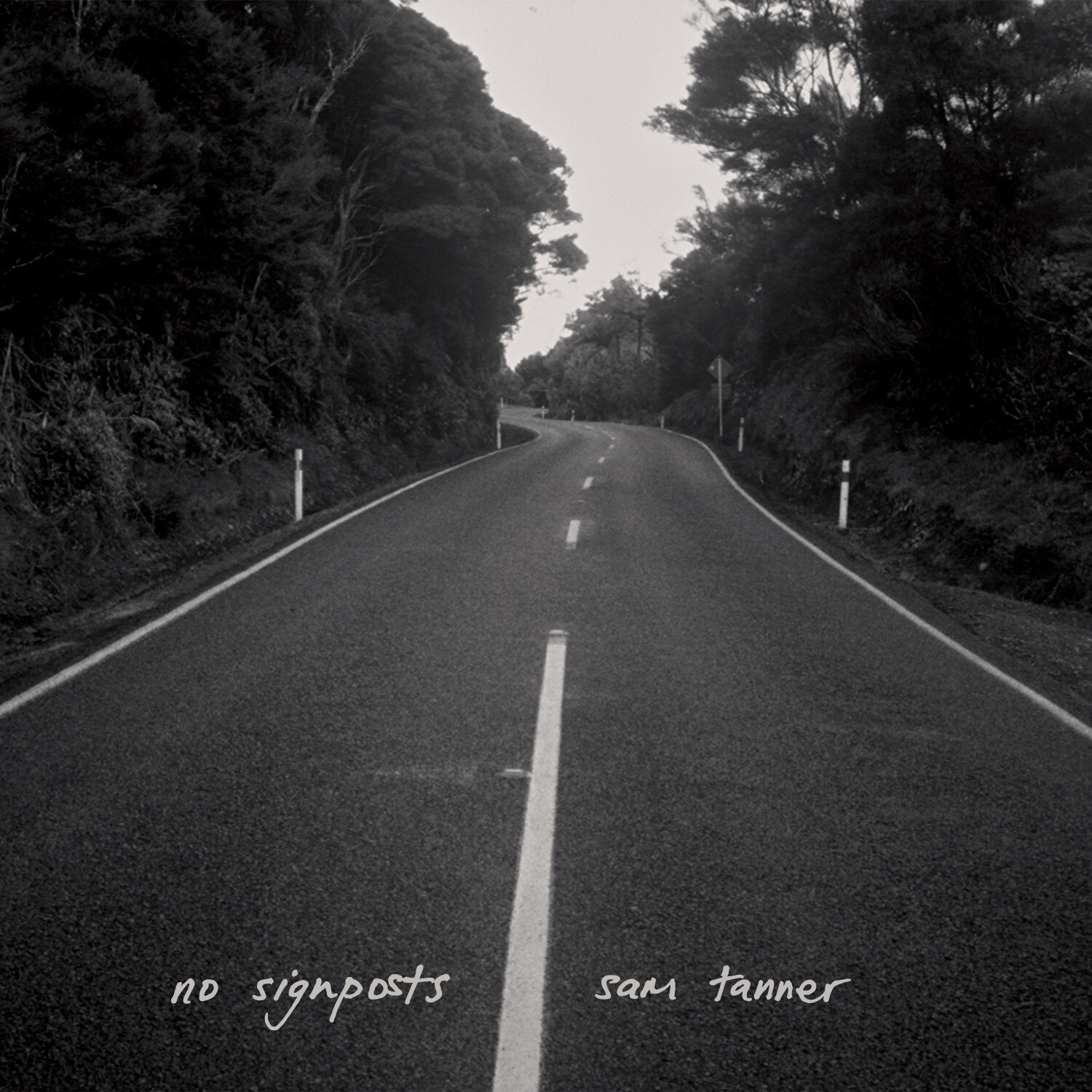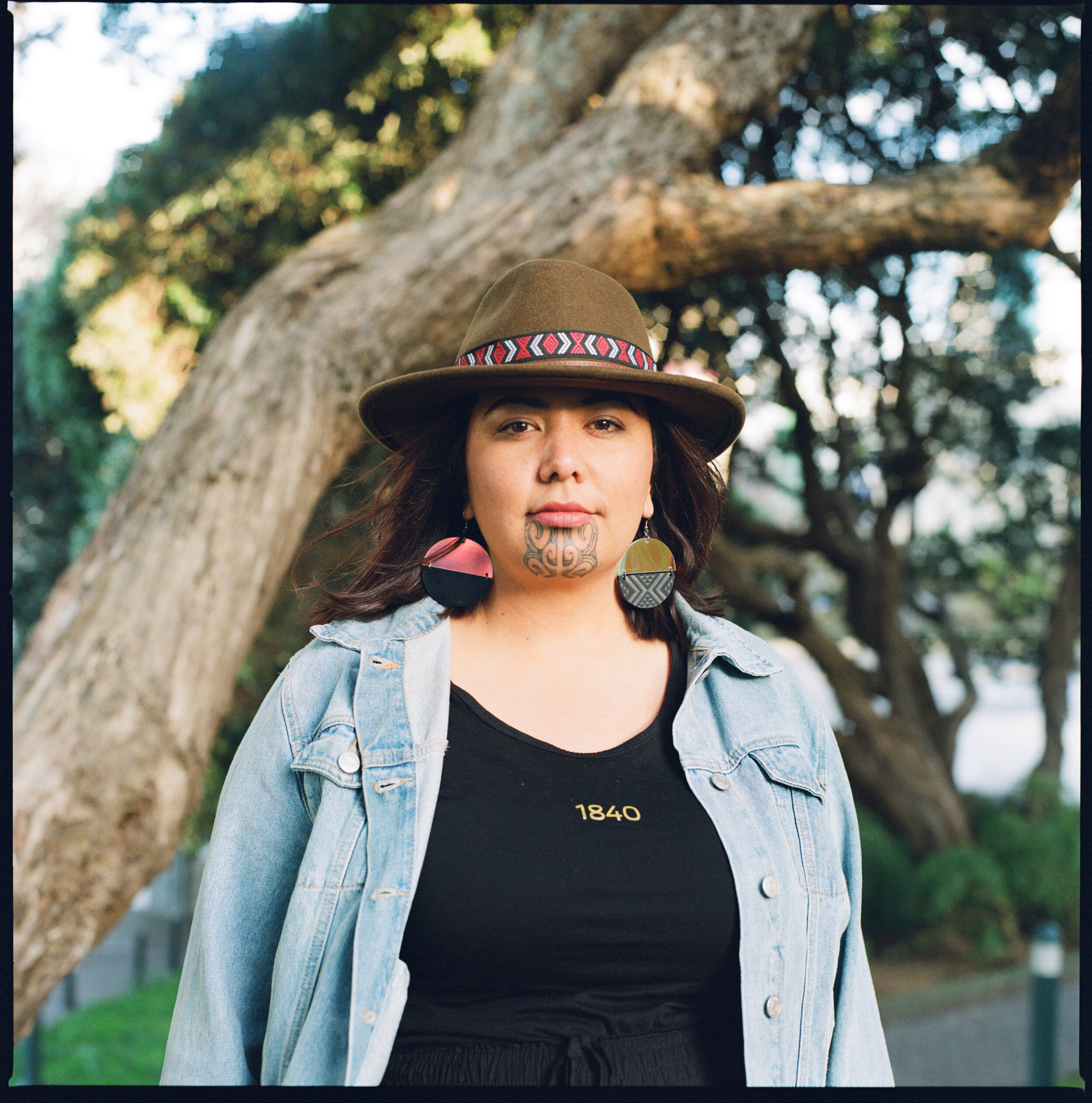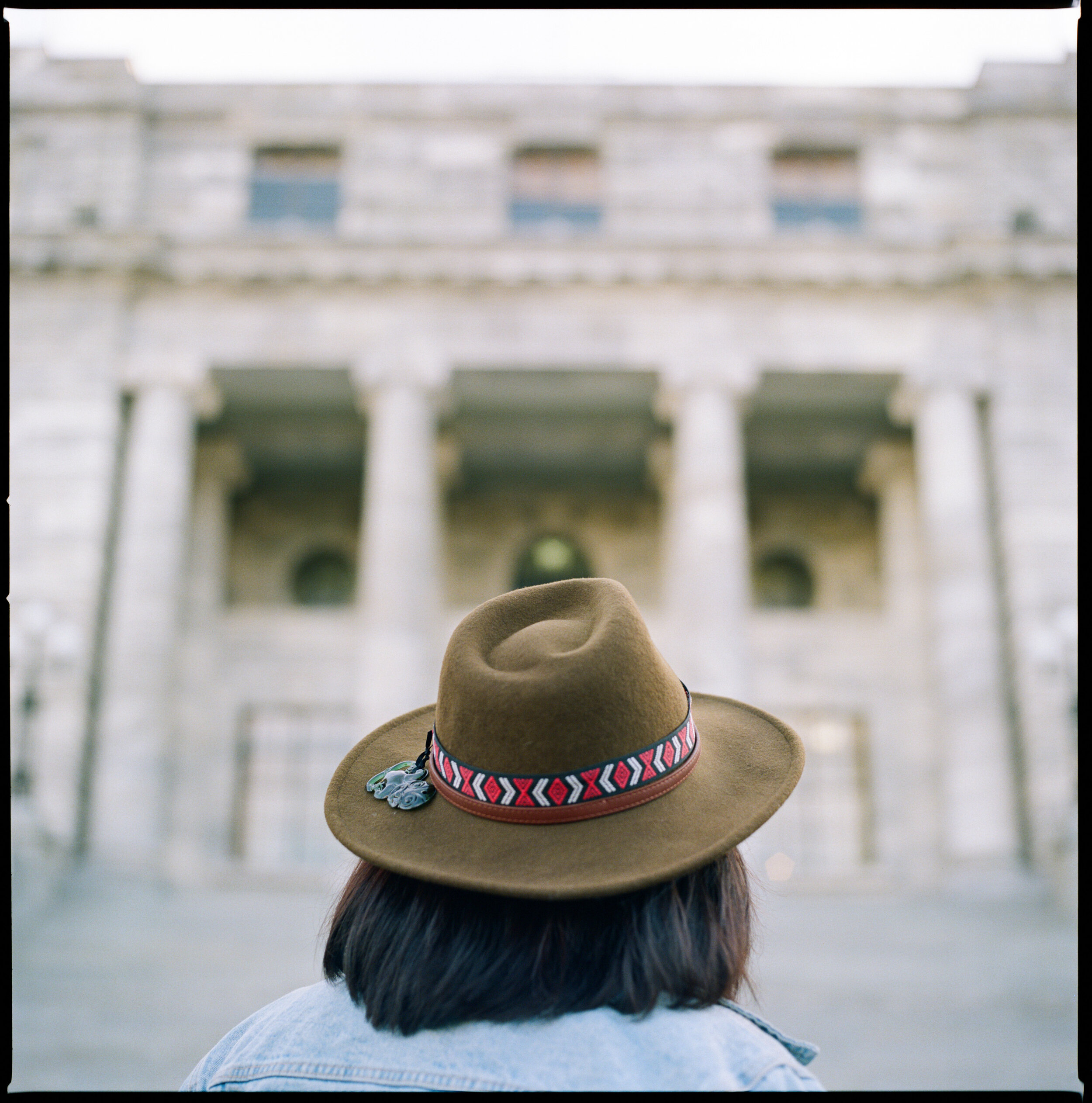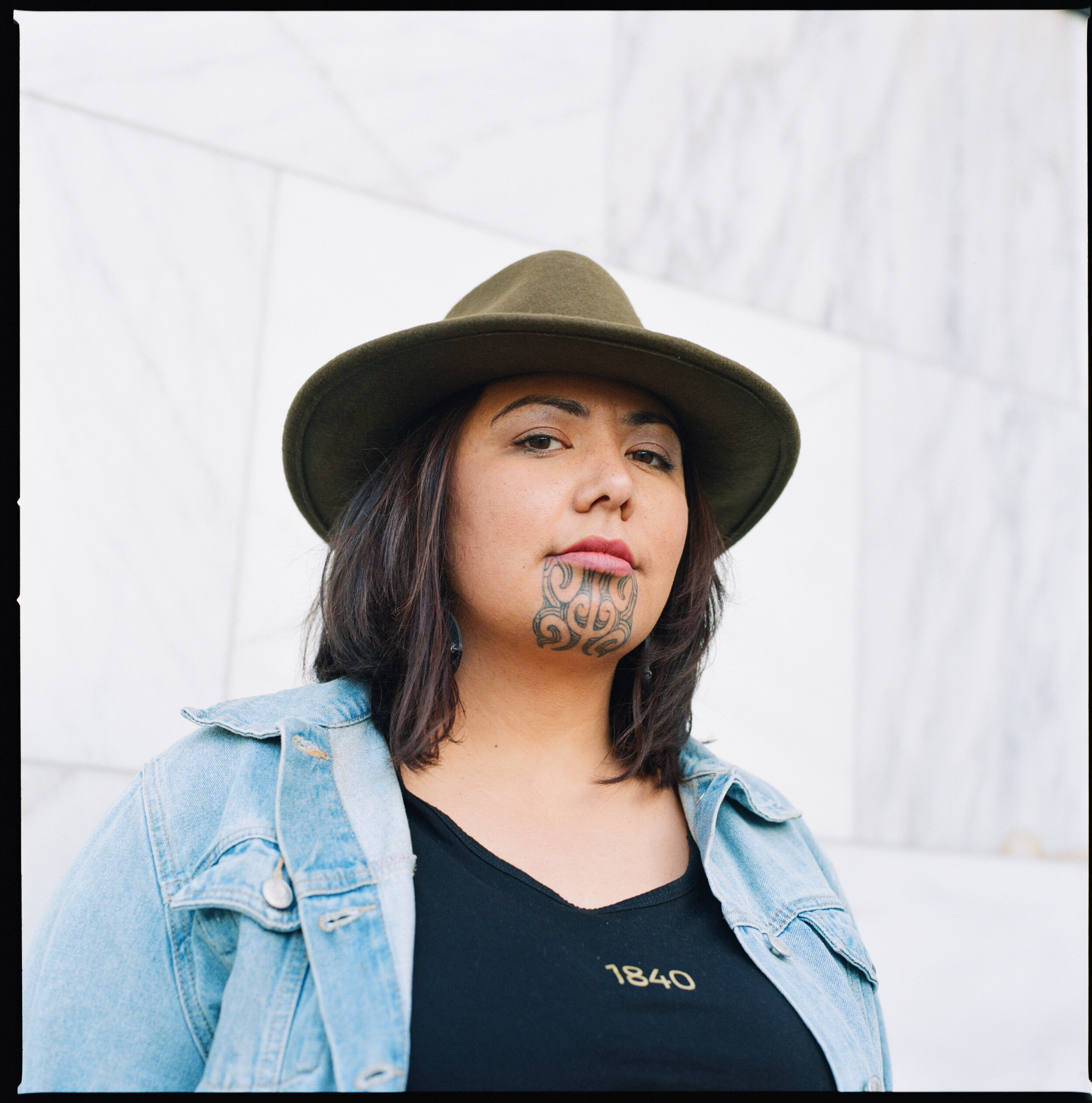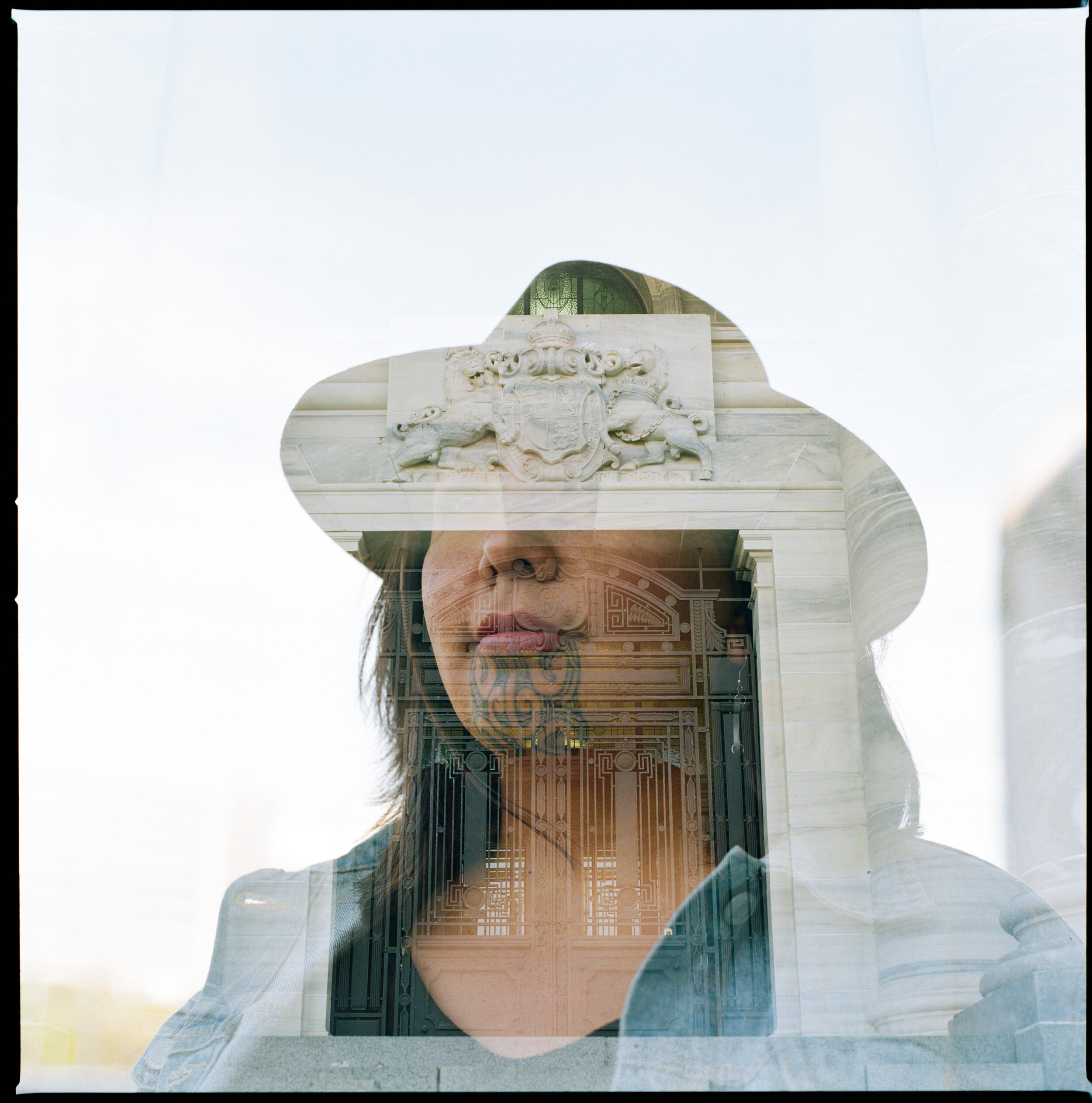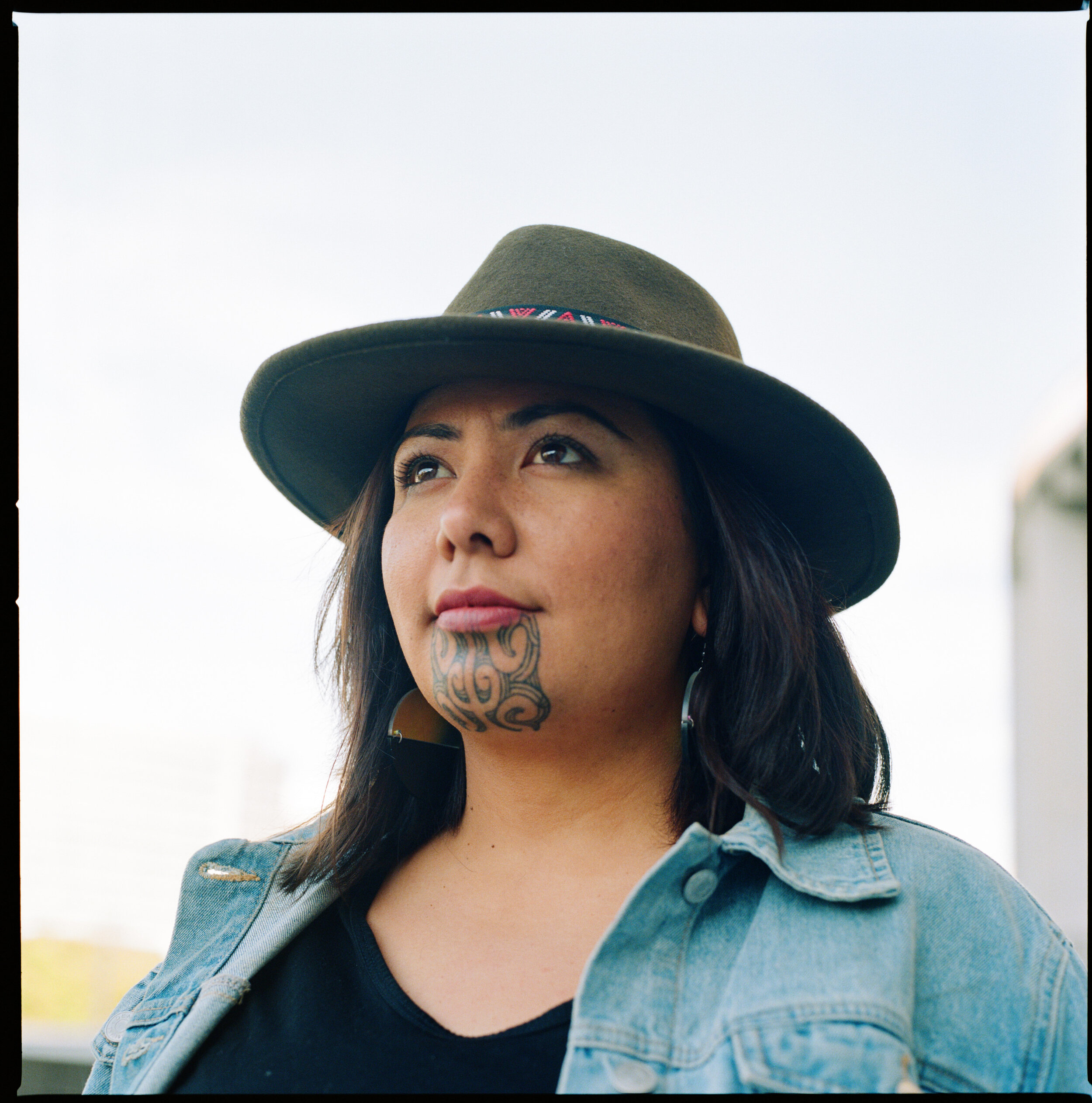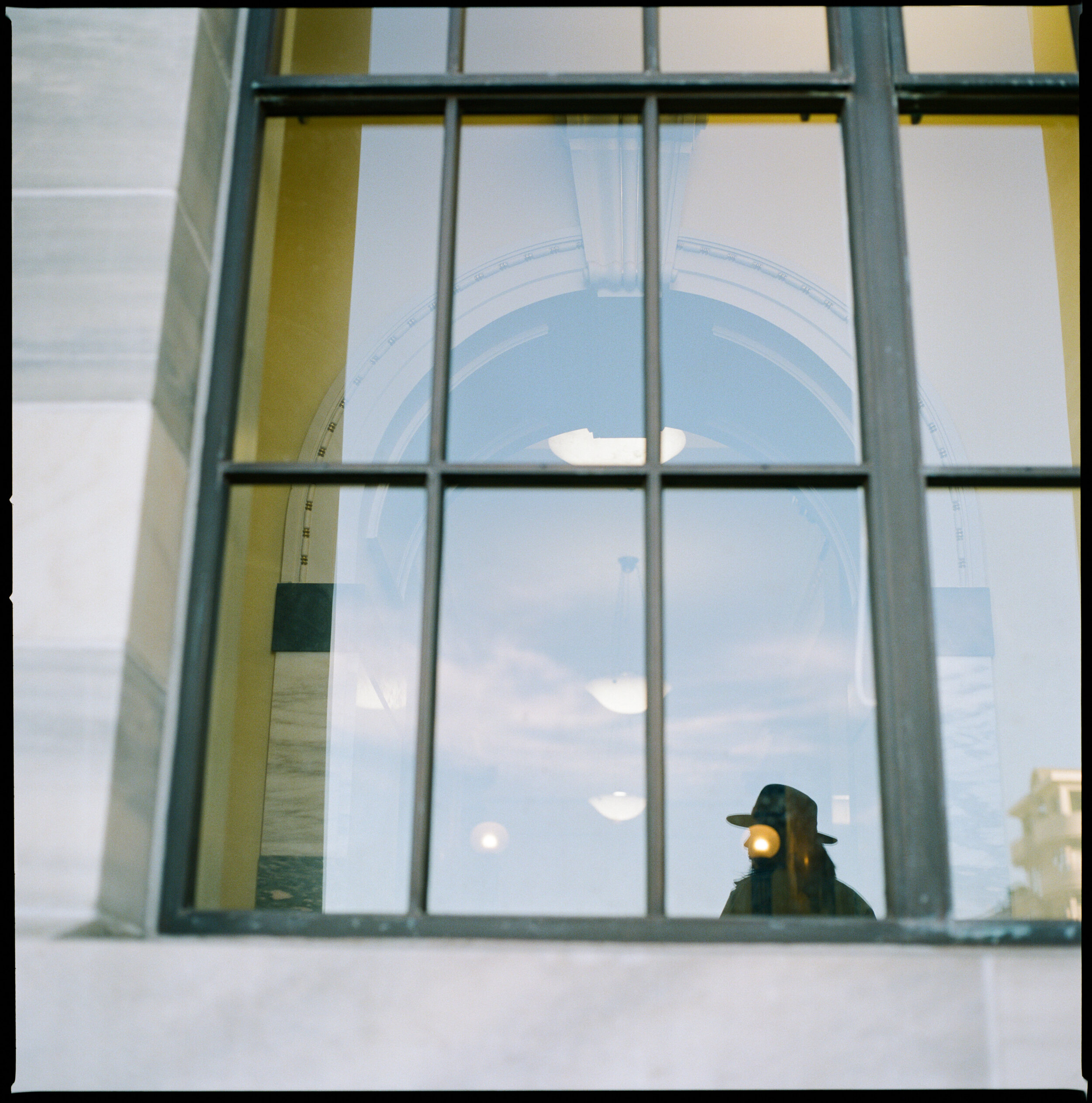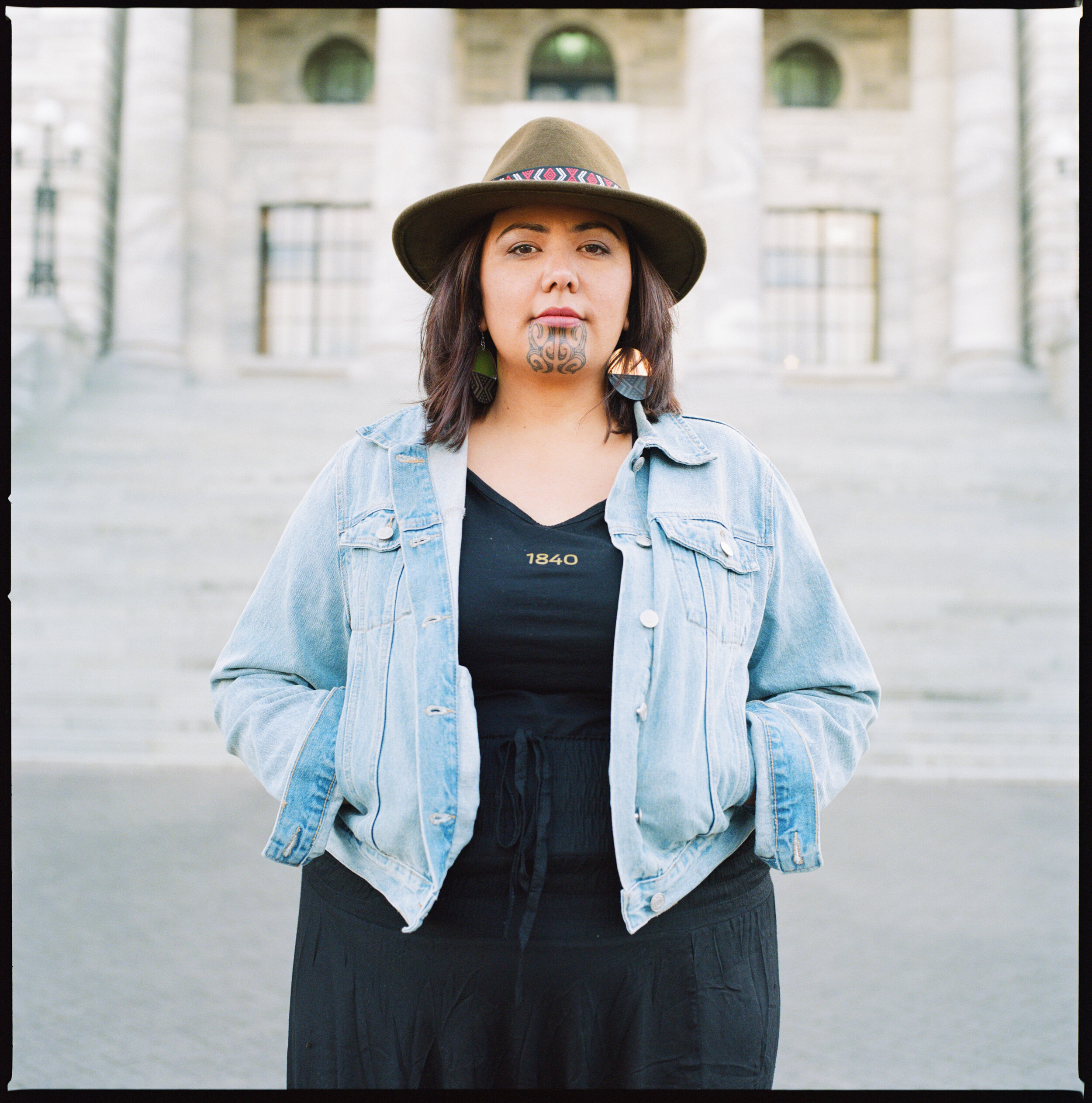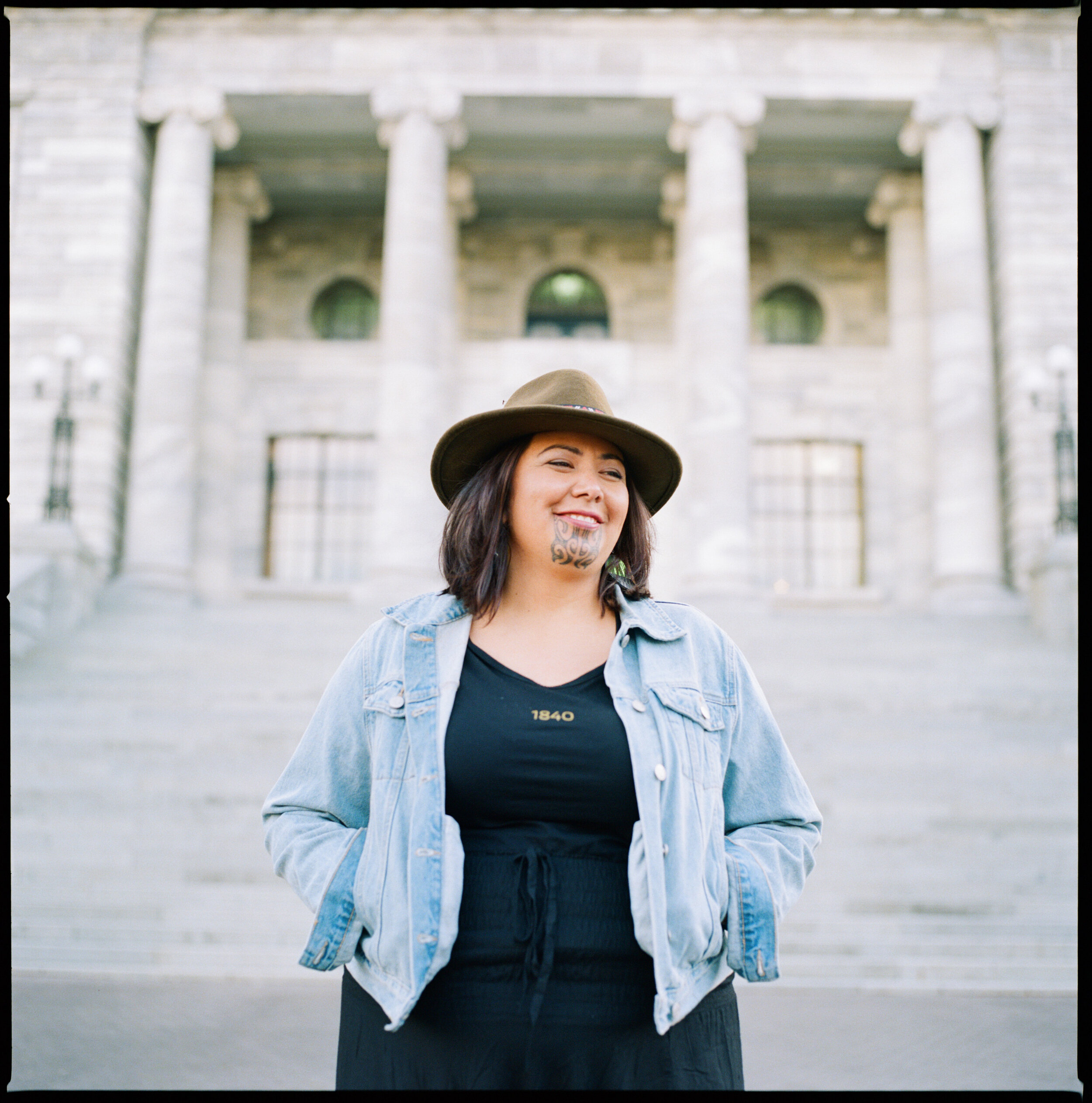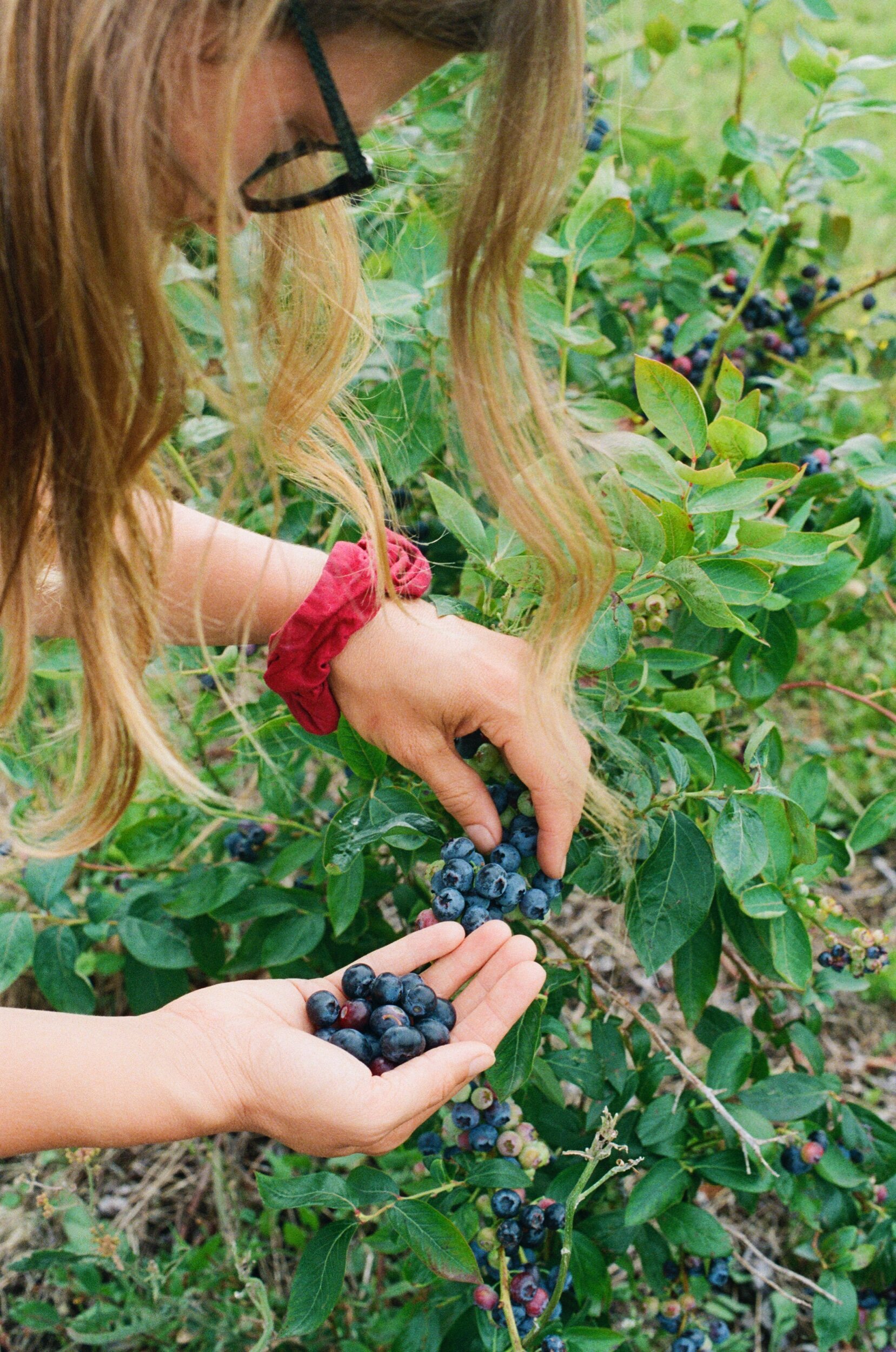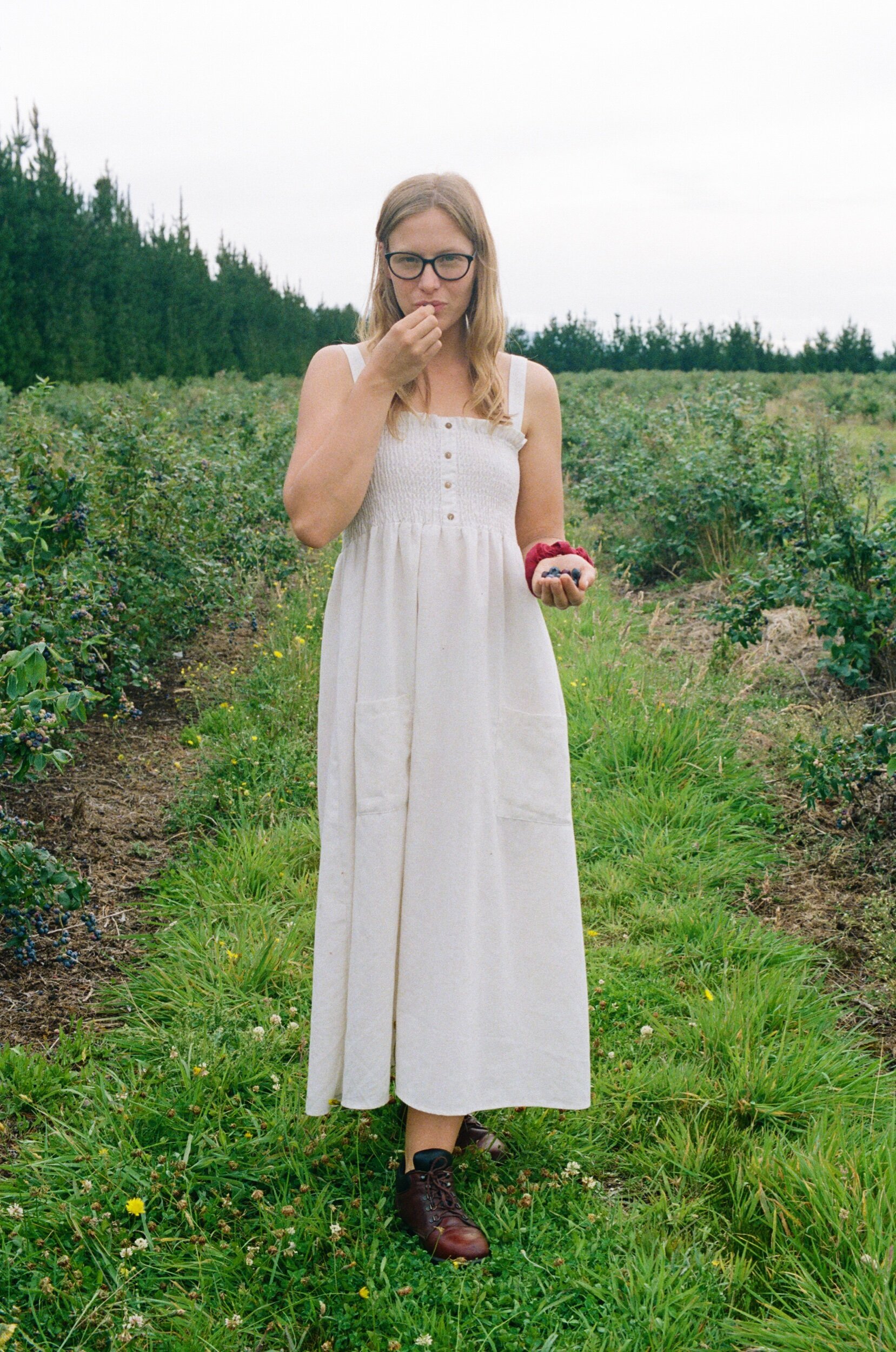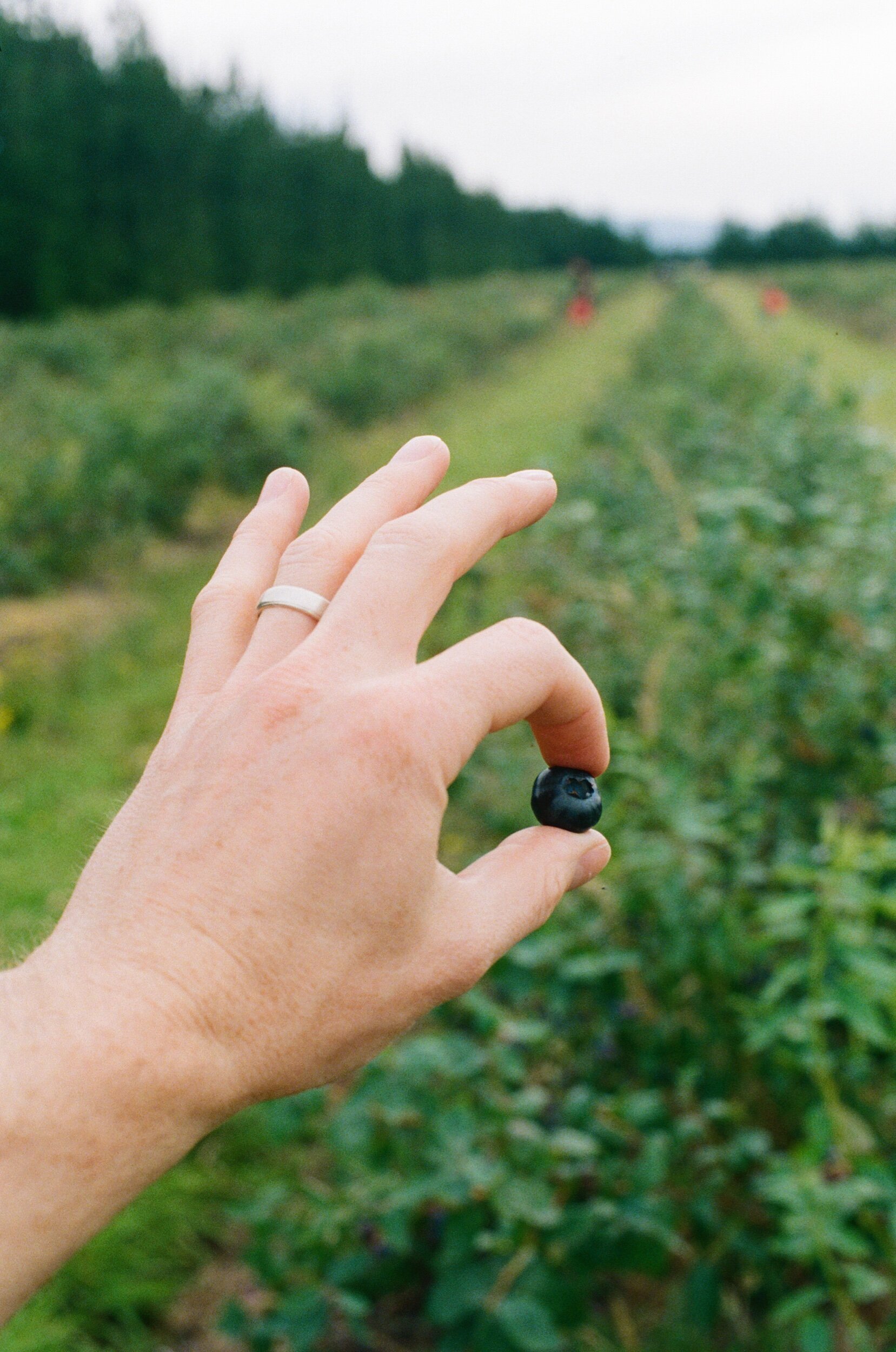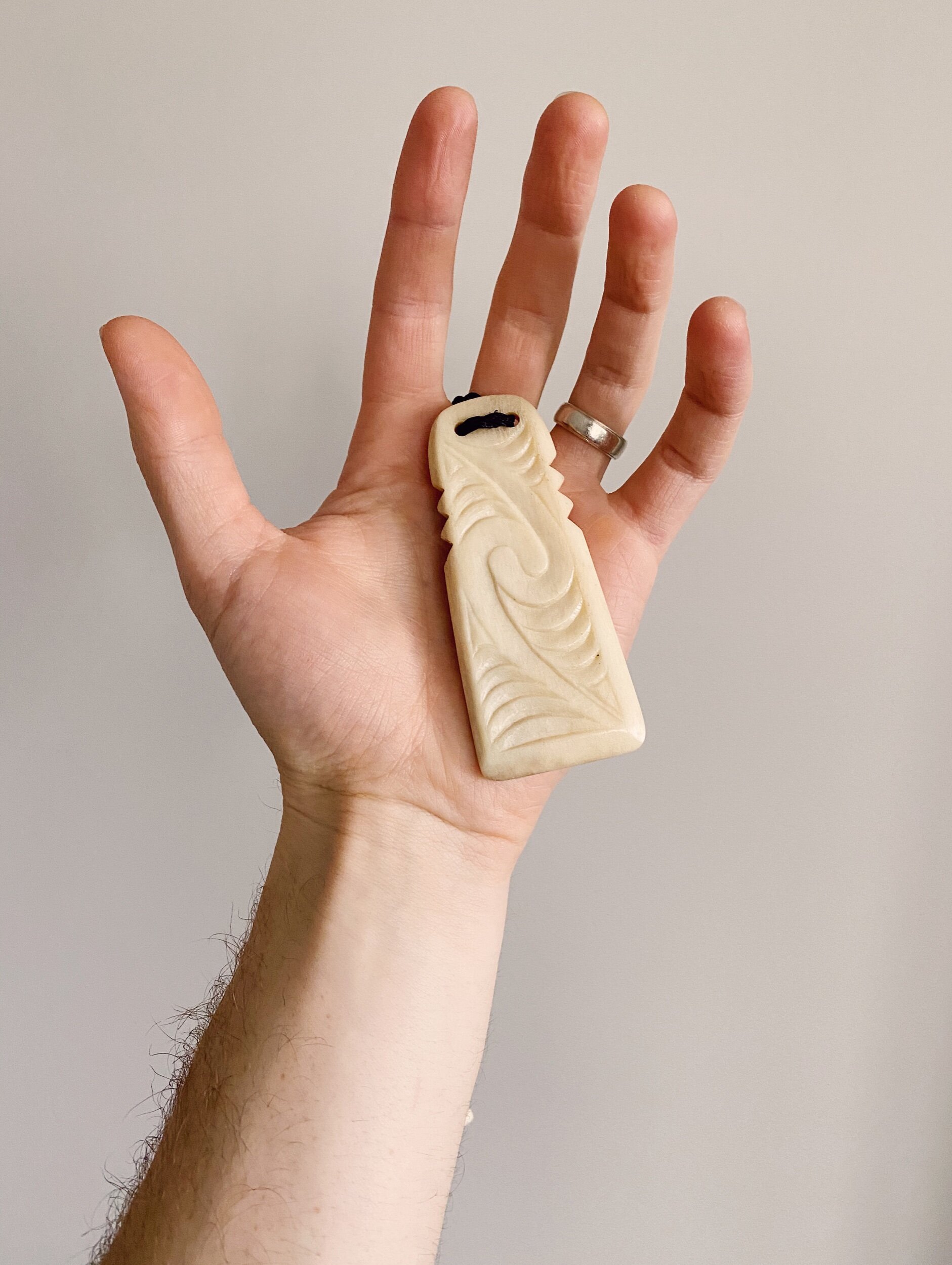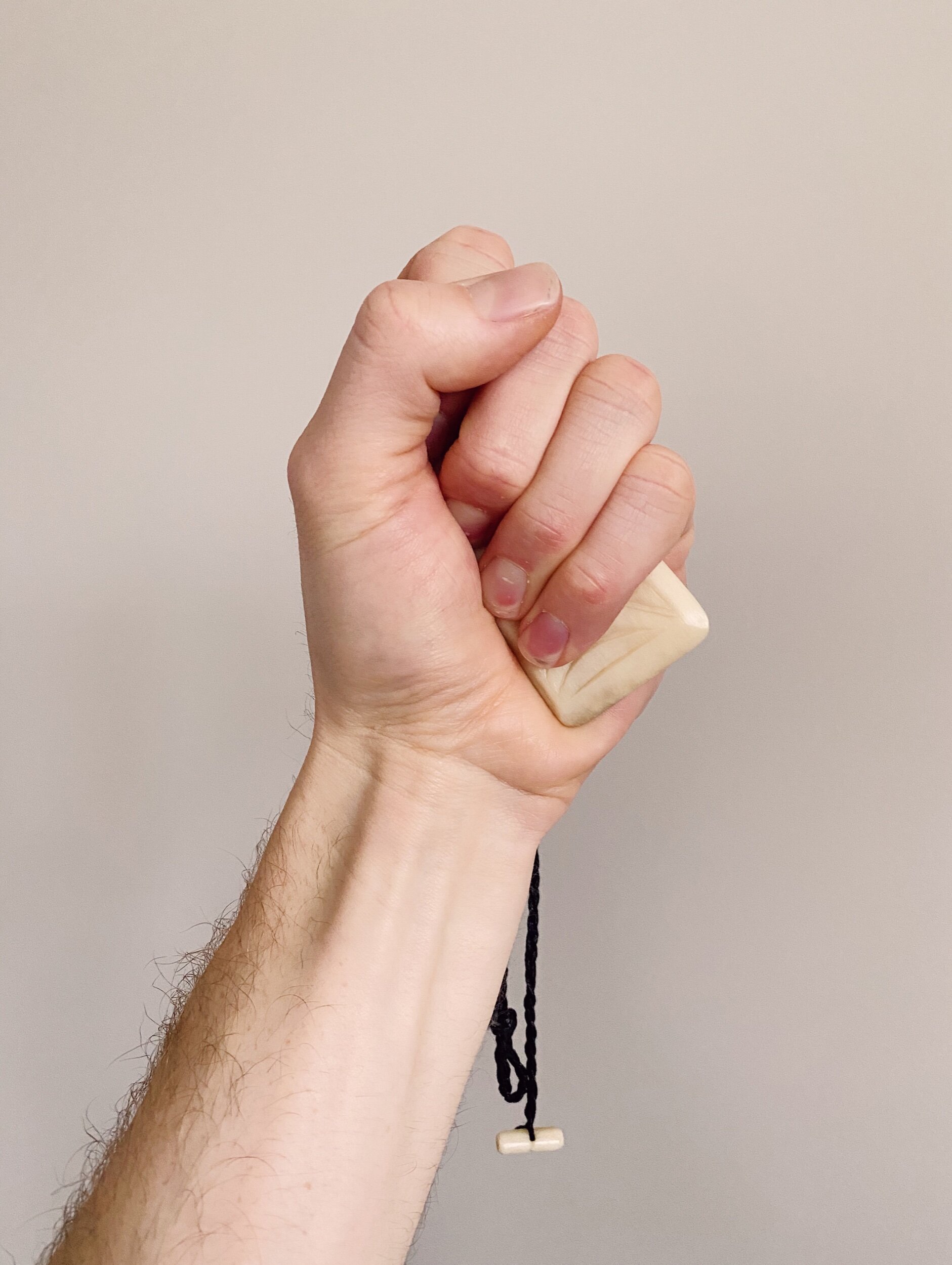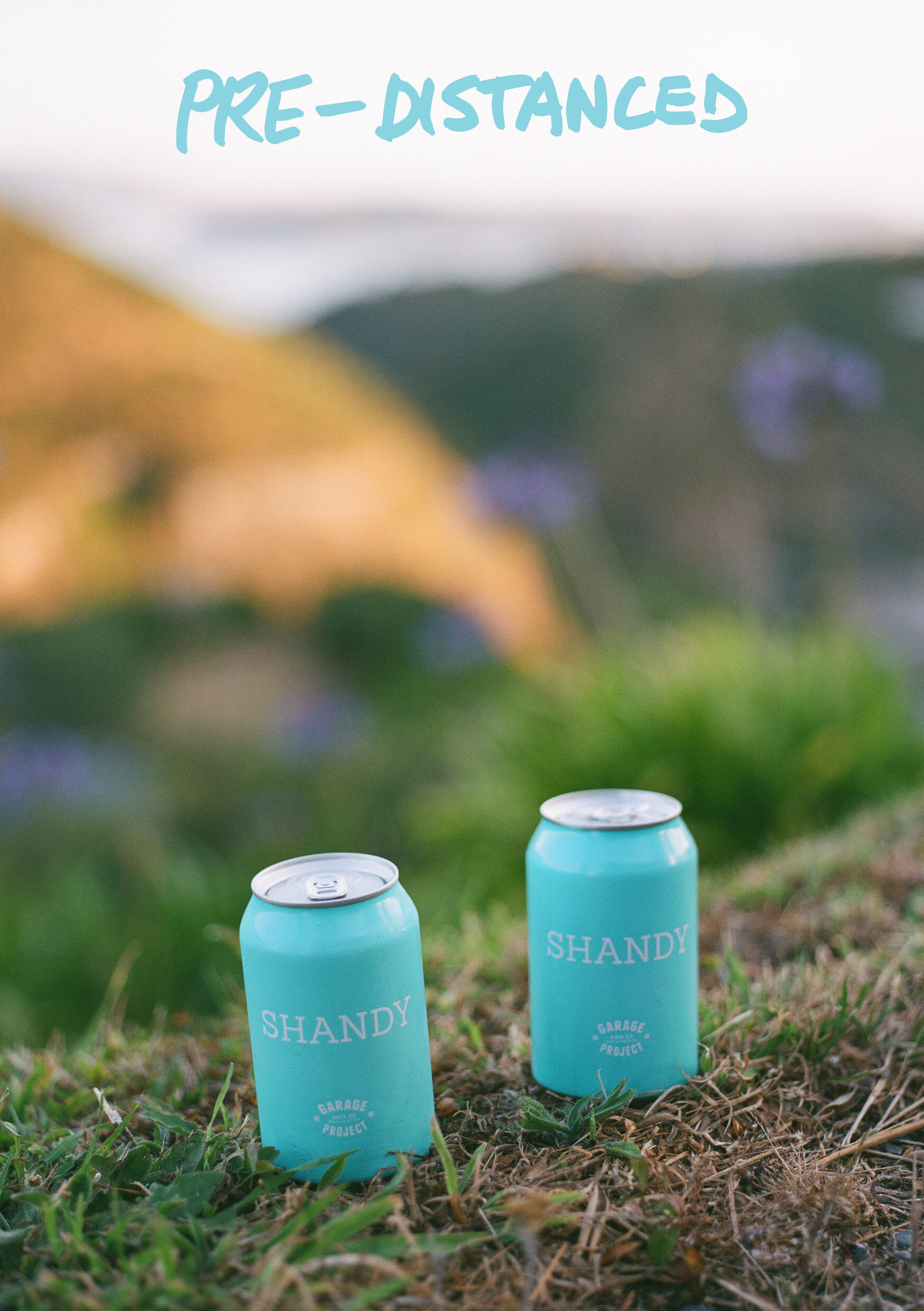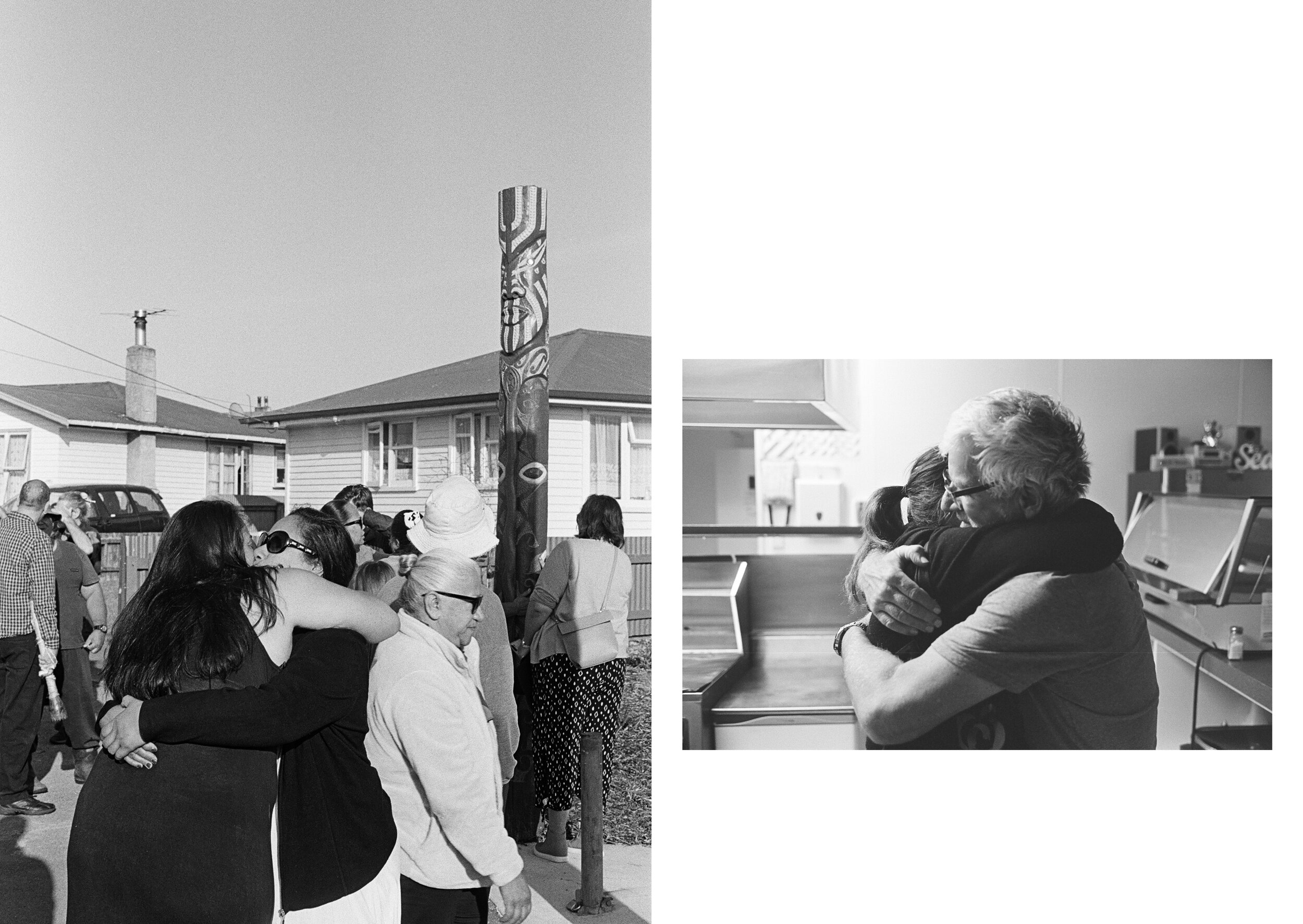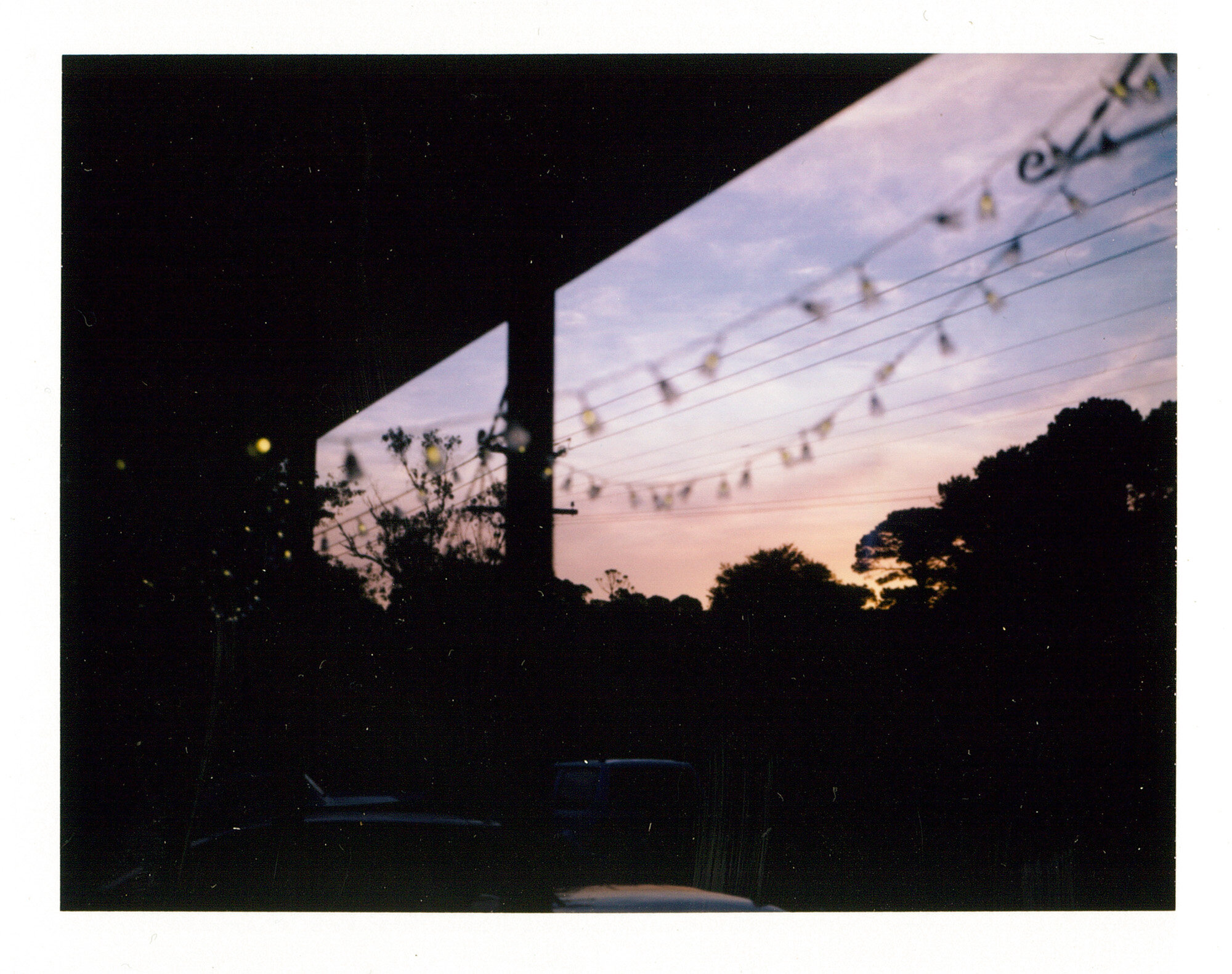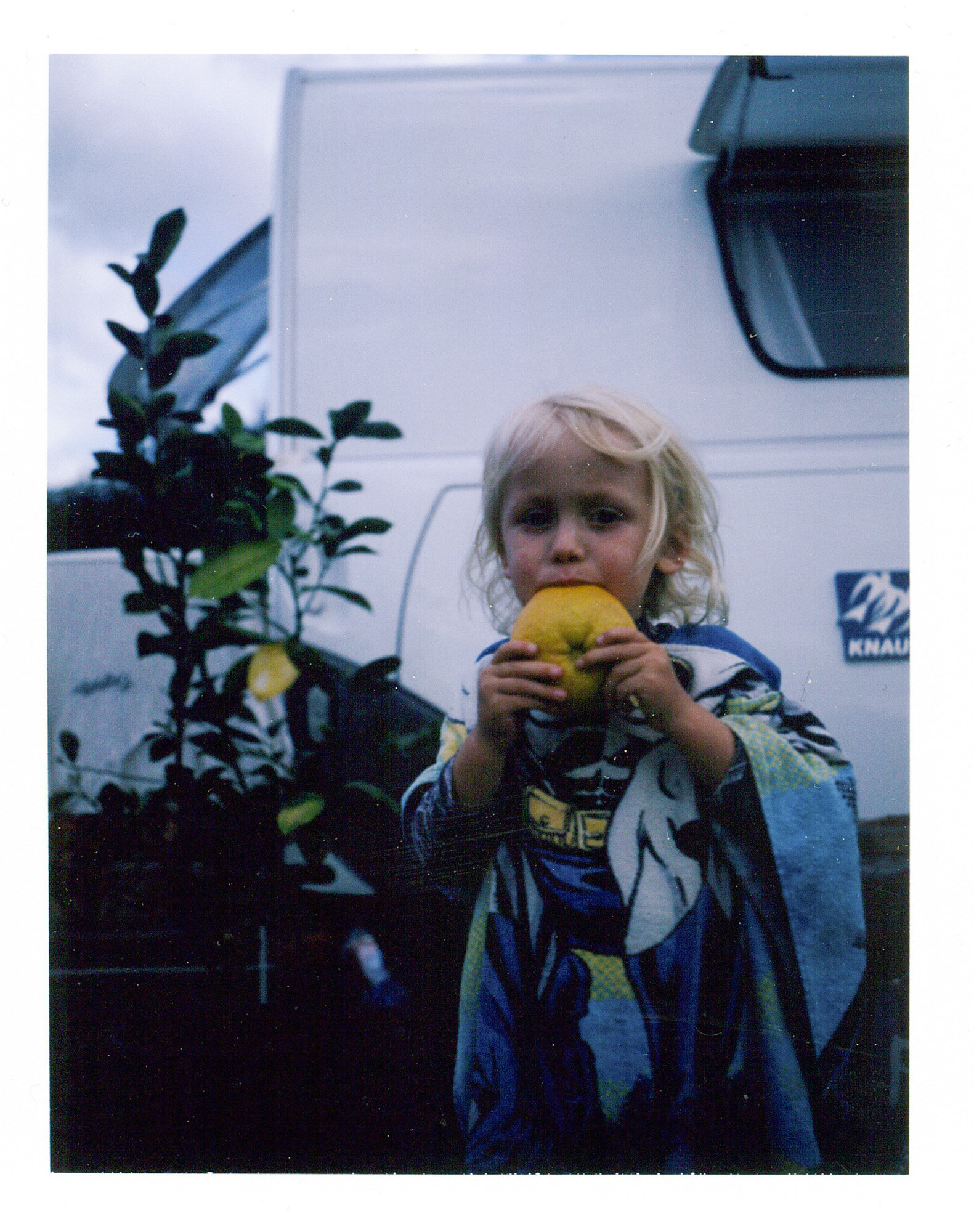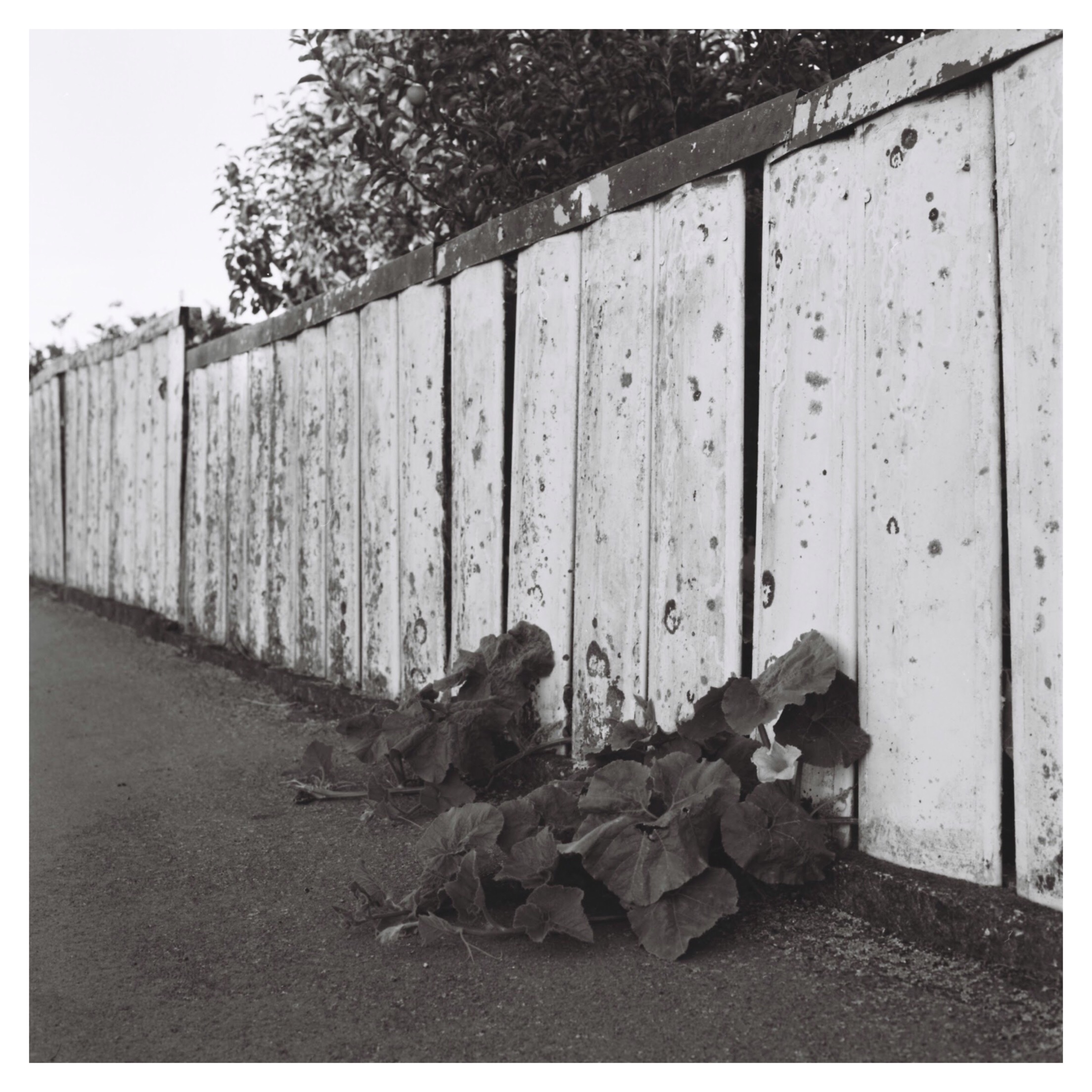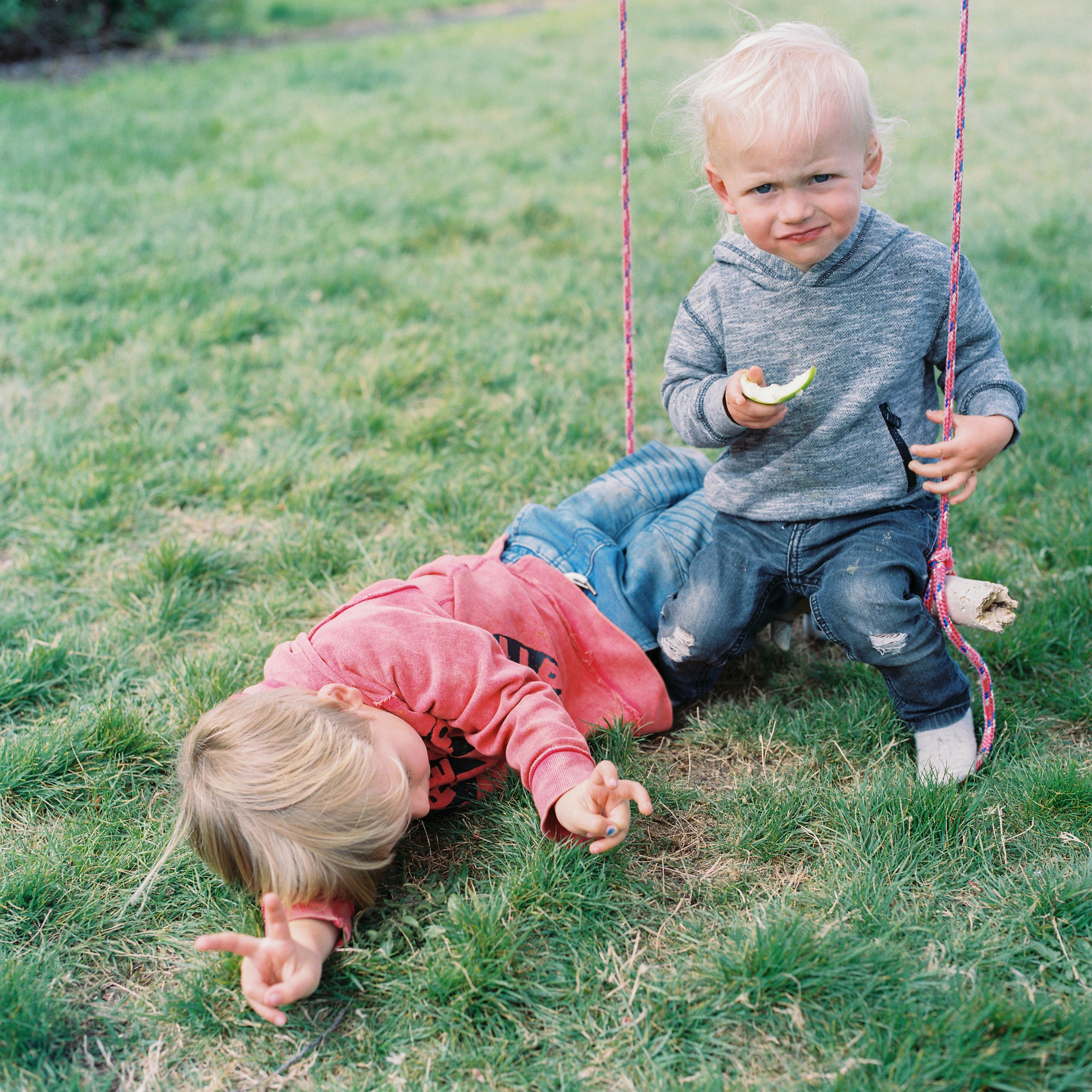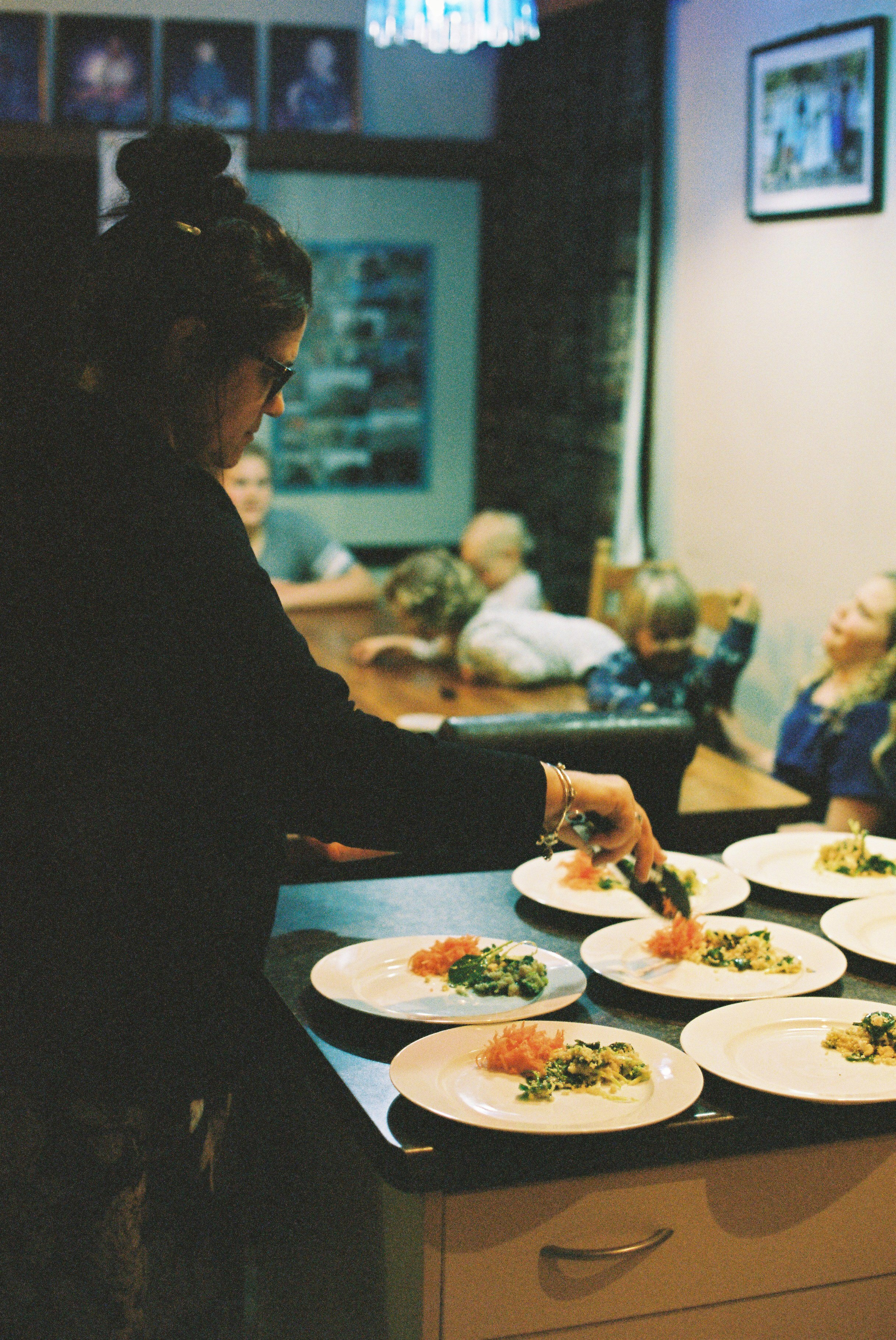No Signposts EP: losing faith
Winter 2015: I was sitting up late into the night, alone in my friend Ben’s recording studio, pouring out my heart with my guitar and my songwriting book.
At the time Lily and I were firmly embedded in the christian world. We’d been involved in churches for years, studied at a christian performing arts school, got married super young, and I was the worship pastor at church. I had already begun to think for myself about certain issues, one of them being LGBTQ rights, and had been sharing openly about the things I was listening to and feeling strongly about. The resulting reactions from christians (both to my face and behind my back) as I grew, explored, and shared, began to erode my sense of safety within the church. After sticking it out for far too long, it became clear that we needed to leave.
It was a very lonely time, and for a few years it felt like the only people who understood what I was going through were strangers on the internet. I dove heavily into studying the history of christianity, philosophical critiques of it through the ages, other expressions… It started to become clear that much of christianity was closer to the religion and empire that murdered Jesus than it was to his life and teachings. If the way of Jesus was to question religious corruption, control, oppression, it’s relationship with power, and to stand with those who were suffering under it - to the point where they killed him for it - then maybe I had to be ok with not belonging inside of religion too.
Christ seemed more compelling and moving than ever, but for the same reasons I was well and truly losing my faith in the western church and the core message of christianity (atonement).
These songs were birthed from this season. Losing faith; finding curiousity, openness, growth.
I lost a lot, grieved a lot, processed a lot. Still unpacking things. I found new friends, new authors and teachers, a new way to live and move through the world.
I lost my faith, and found something better.
Five years later, winter 2020, I finally felt I understood my journey enough to give these deeply personal songs the life they deserved. My friend Jordan and I completely filled the back of the family wagon with musical instruments and recording gear, and roadtripped to the shores of Lake Taupō for an appropiately moody, wet, weekend; recording by the fire with bottomless arcoroc mugs of port. I shot photos over the trip to accompany the project, which you can see on the website nosignposts.nz, where the project can be experienced in it’s entirety.
Maybe I should get these songs and stories on the road sometime?
Rukuwai: Moko Kauae
Rukuwai shares about her journey to getting her moko kauae, her experience with Christianity as a Māori, and the reclamation of Māori culture in Aotearoa.
Lily and I recently had the privilege of catching up and taking photos with Rukuwai Tipene-Allen. Rukuwai shared about her journey to getting her moko kauae, her experience with Christianity as a Māori, and the reclamation of Māori culture in Aotearoa.
We recorded our chat on the grass in Waitangi Park with the intention of pulling excerpts to go with the photos, but when listening back I realised it had to be her voice telling this story. Hit play below and listen while you check out the photos. Just a heads up for those who might have kids listening that there is some coarse language.
Rukuwai on Instagram - @rukuwaiallen
Hasselblad 500c/m / Portra 800 / Dev+scan by The Black & White Box
All Creation Keeps Creating
“Consider the ravens: They do not sow or reap, they have no storeroom or barn; yet God feeds them. And how much more valuable you are than birds!”.
“Consider the ravens: They do not sow or reap, they have no storeroom or barn; yet God feeds them. And how much more valuable you are than birds!”.
I’ve realised recently that Mother Earth, Papatūānuku, never stops giving.
I’ve been observing and admiring how nature always “finds a way”. A tree is chopped down, and months later a small shoot rises up from the edge of the flat stump, reaching for the spring sun. A tiny seed is pressed into soil, and given a little water it sprouts and grows into food in a number of weeks. Trees grow out of the side of a rock on a steep hillside. Branches and trunks bend and twist towards the light in whatever space is given to them.
She never stops living, she never stops giving.
But the verse says “God feeds them” - if that is true then why are people still going hungry? Where is God today? This is a question I struggle with and I wanted to offer a thought, alongside these photos I took while thinking about it.
If life is always springing up then there is no shortage of it’s potential to feed and bring life to all - it is humans who have created the systems that either strangle it from producing or withhold what is produced. I like to envision the “kingdom” being talked about in scripture by the analogy of a garden. If life is constantly springing up - if nature is working to heal and restore, then we simply need to work with it instead of against it. We can carefully tend to this garden to release it’s potential for life and beauty.
Today I’m seeing this verse and the surrounding verses as a call to relinquish our mindset of scarcity and individualism, and embrace one of generosity and cooperation. “For where your treasure is, there your heart will be also.” Us humans are part of this garden too, and we should tend to our own hearts to see what might need to be trimmed back. We should tend to the systems we have created that deny the rights and dignity of other humans and other living beings in this garden.
Jesus constantly talked about the kingdom being now. I believe it is our duty to participate in the coming of that kingdom, just like he did - a kingdom that might just look something like a flourishing garden.
Then Jesus said to his disciples: “Therefore I tell you, do not worry about your life, what you will eat; or about your body, what you will wear. For life is more than food, and the body more than clothes. Consider the ravens: They do not sow or reap, they have no storeroom or barn; yet God feeds them. And how much more valuable you are than birds! Who of you by worrying can add a single hour to your life? Since you cannot do this very little thing, why do you worry about the rest?
“Consider how the wild flowers grow. They do not labor or spin. Yet I tell you, not even Solomon in all his splendor was dressed like one of these. If that is how God clothes the grass of the field, which is here today, and tomorrow is thrown into the fire, how much more will he clothe you—you of little faith! And do not set your heart on what you will eat or drink; do not worry about it. For the pagan world runs after all such things, and your Father knows that you need them. But seek his kingdom, and these things will be given to you as well.
“Do not be afraid, little flock, for your Father has been pleased to give you the kingdom. Sell your possessions and give to the poor. Provide purses for yourselves that will not wear out, a treasure in heaven that will never fail, where no thief comes near and no moth destroys. For where your treasure is, there your heart will be also.
- Luke 12
Racism & Decolonisation in Aotearoa
It’s time to listen.
Last updated with additional resources 09/07/2020
There’s been a heap of talk on social media around the Black Lives Matter movement and racism in general, which has been stimulating discussions here in Aotearoa as well. In light of this, and conversations I have been having, I just wanted to pull together some of the resources I have found helpful on my journey as a person of white privilege who calls Aotearoa home. I wrote in my reflection on Ihumātao that privilege comes with responsibility. I believe that part of this responsibility is seeking out the true history of this country.
It’s time to listen.
This is in no way an extensive list, but I hope it provides a starting point for people who want to understand the ongoing struggle in our country. Let me know in the comments if you have other resources to share.
Te Tiriti o Waitangi in a Future Constitution - Removing the Shackles of Colonisation (lecture by Margaret Mutu)
Huia Come Home (book)
Take Action via:
I confront my white privilege, I confront my racism. I commit to deconstructing racist systems, the systemic evils that exist (“powers and principalities” as Jesus put it). I commit to listening to voices of those oppressed and harmed by systemic and individual racism. I commit to learning more. I commit to teaching my kids. I wear my taonga with a necessarily-heavy heart as a reminder that this work is what I must do, as someone who benefits from the colour of my skin and the historic and ongoing suffering of those who are different.
And I am sorry, my Māori/Pasifika/POC friends... I know as I’ve stepped into this space I have made mistakes and fallen short, but I can’t just say and do nothing. I post this not to pat myself on the back but as a public declaration of my commitment.
UPDATES
I will continue to keep this page updated with resources on racism below as I find them.
Resources on Race and Social Justice
-Direct quote from a newsletter from the Centre for Action and Contemplation-
The topic of race and social justice is very important to the work we do at the CAC. These resources have influenced the thinking of our staff and teachers, and we encourage you to look through them, see what resonates with you, and to incorporate those sources to continue into your understanding of this issue. We've broken them up into categories so that you can choose the medium which is best for you.
Articles
Worship of a False God - An Interview with Bryan Massingale by Regina Munch (Commonweal Magazine)
Open Letter to a Friend Waking Up to Racism by Ángel Flores Fontánez, SJ (The Jesuit Post)
A Letter to my White Male Friend of a Certain Age by Dax Devlon-Ross (Third Settlements)
Smithsonian's 158 Resources to Understand Racism in America by Meilan Solly (Smithsonian Magazine)
Books
Race and the Cosmos by Barbara Holmes
The New Jim Crow: Mass Incarceration in the Age of Colorblindness by Michelle Alexander
White Fragility: Why It's So Hard For White People To Talk About Racism by Robin DiAngelo
Just Mercy: A Story of Justice and Redemption by Bryan Stevenson
Pedagogy of the Oppressed by Paolo Freire
Between the World and Me by Ta-Nehisi Coates
The Fire Next Time by James Baldwin
Film
Podcasts
Pre-Distanced: Free Digital Zine
I’ve been really feeling the distance from others over these past few weeks of our COVID-19 “lockdown”, and part of my way of processing that has been to relive recent memories from before these physically distanced times.
I’ve been really feeling the distance from others over these past few weeks of our COVID-19 “lockdown”, and part of my way of processing that has been to relive recent memories from before these physically distanced times. So here’s a smattering of “pre-distanced” photos, a brief sort of “love letter” to closeness and warmth. I’ve compiled them into a book layout - partially as an exercise, but also because I’m interested to explore other meaningful ways to connect with you out there in the expanse of the internet. There are two ways to view:
View the slides below (best viewed on a computer due to the 2-page spread - click to expand the first slide and then tap through).
Grab a free copy of the PDF by emailing me and telling me how you’ve been feeling during this time, and what you’ve been doing to “cope” as best you can?
Sending peace and love to you all, aroha nui,
-Sam
My Polaroid Land Camera from Antarctica
Everyone loves a good back story, right? My Polaroid Land 250 appears to have some kind of story. I’m not sure of all the details but a little sticker and a few clicks on Google gave my imagination enough to “zone out” on…
Everyone loves a good back story, right? My Polaroid Land 250 appears to have some kind of story. I’m not sure of all the details but a little sticker and a few clicks on Google gave my imagination enough to “zone out” on, The Secret Life of Walter Mitty styles. The story probably isn’t that dramatic but I thought the little camera deserved a write-up anyway, alongside some of the gorgeous photos (these were shot at the same time as the Ektachrome 100 blog post).
The Camera
You can see a whole video about the camera and how it works here: The Best Polaroid Land Camera. I got super inspired about instant film one day, took a gamble on Trade Me and got mine for about $25. It came with the cover, manual, and even the old “cold clip” for keeping the film warm while it develops before you peel. The battery holder still had an ancient 4.5V battery in it so it was all corroded and the camera didn’t fire. I removed the holder, cleaned out the compartment and managed to successfully solder in a 3x AAA battery holder out of one of the unused kids torches.
It was at this time that I noticed this little sticker on the cover (see below). I looked up the “Department of Scientific and Industrial Research” on Wikipedia which informed me that the Antarctic Division of the DSIR was what became “Antarctica New Zealand” in 1996 <- click/tap that link to read the full history of the organisation.
“Antarctica New Zealand is an Institute set up by the Government of New Zealand in 1996 to manage its interests in Antarctica and the Ross Sea. As well as providing logistics support to a large scientific program, it also runs bases such as Scott Base.”
Obviously, my mind went straight to imagining the camera on epic expeditions to Scott Base and the South Pole. The reality is, I have no idea what the Antarctic Division of the DSIR did with Polaroid cameras, if they even used them in Antarctica, or when they would have owned this one. The Land 250 was only produced from 1967 until 1969 (when it was replaced by the 350) so that gives us a rough window to start with. Maybe following this blog post I will see if I can dig up more information on the use of these cameras?
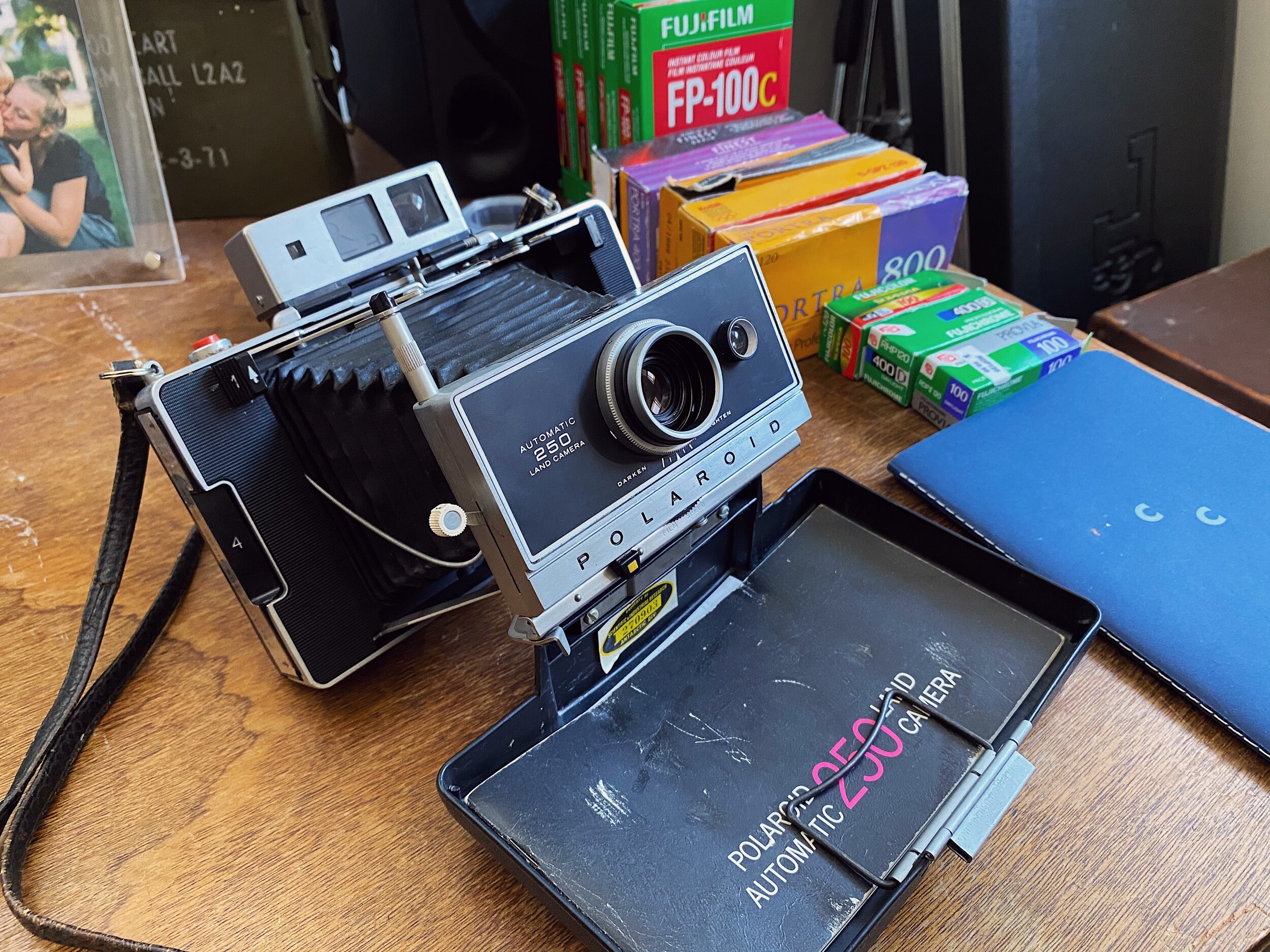
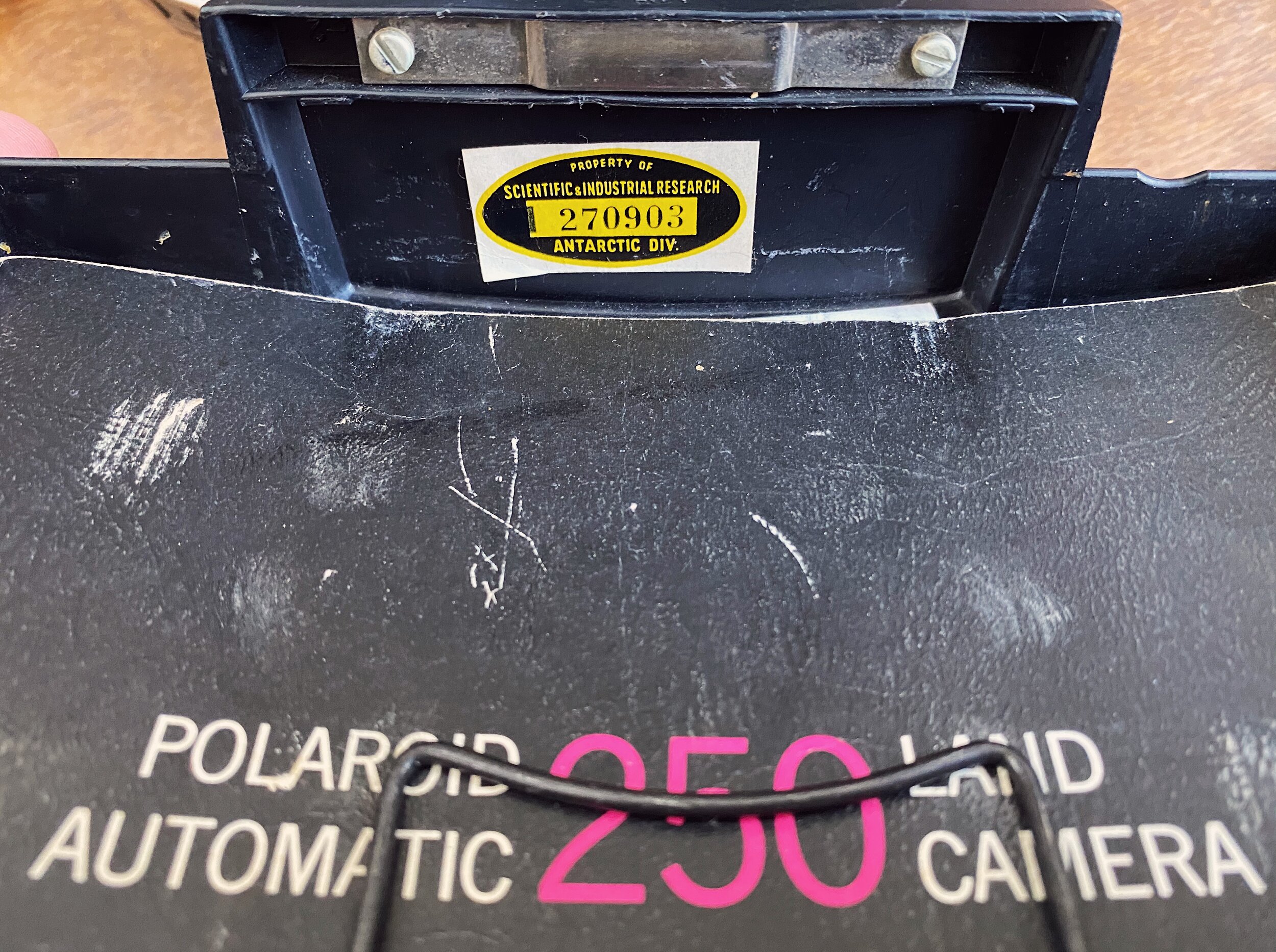
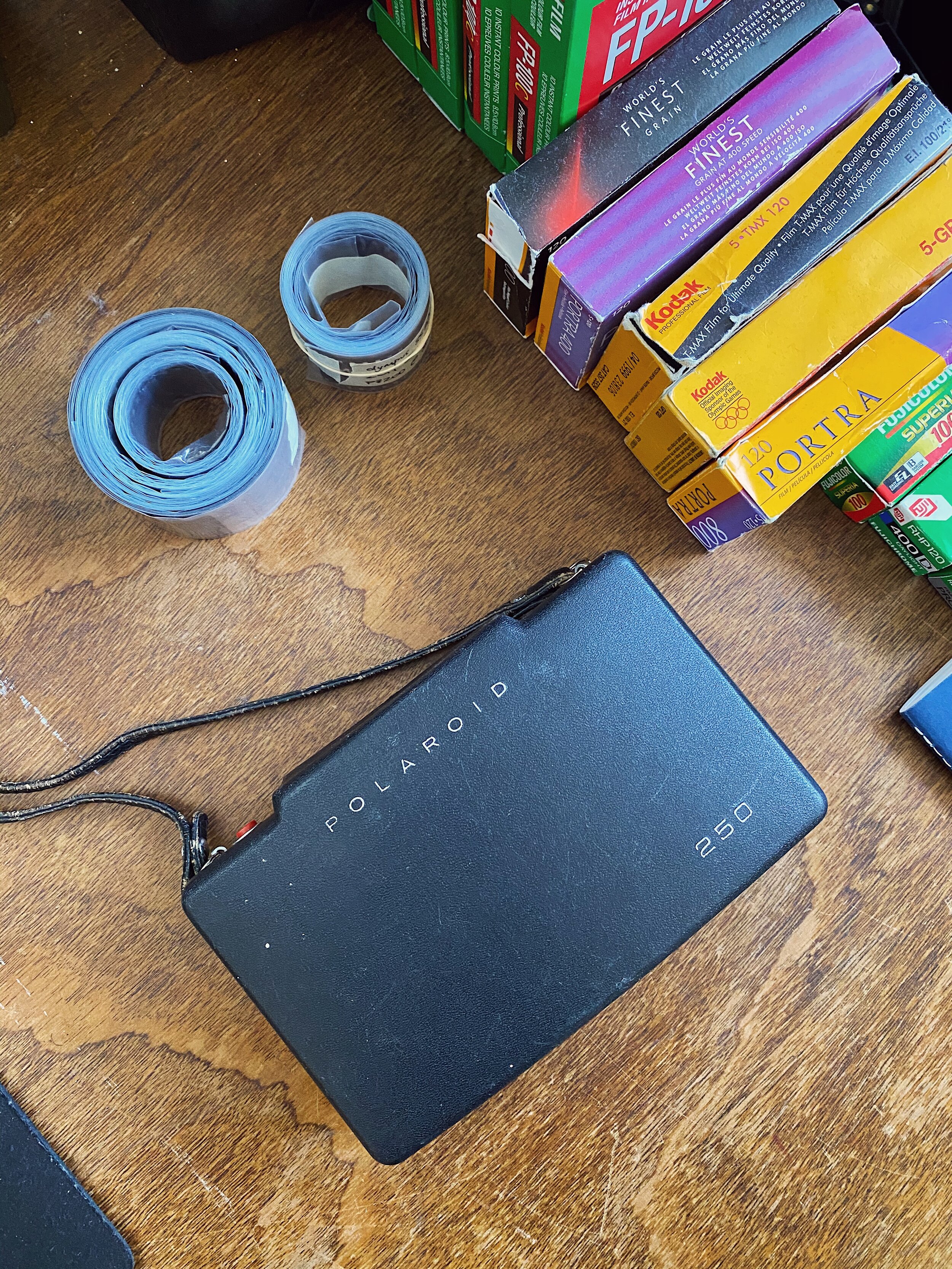
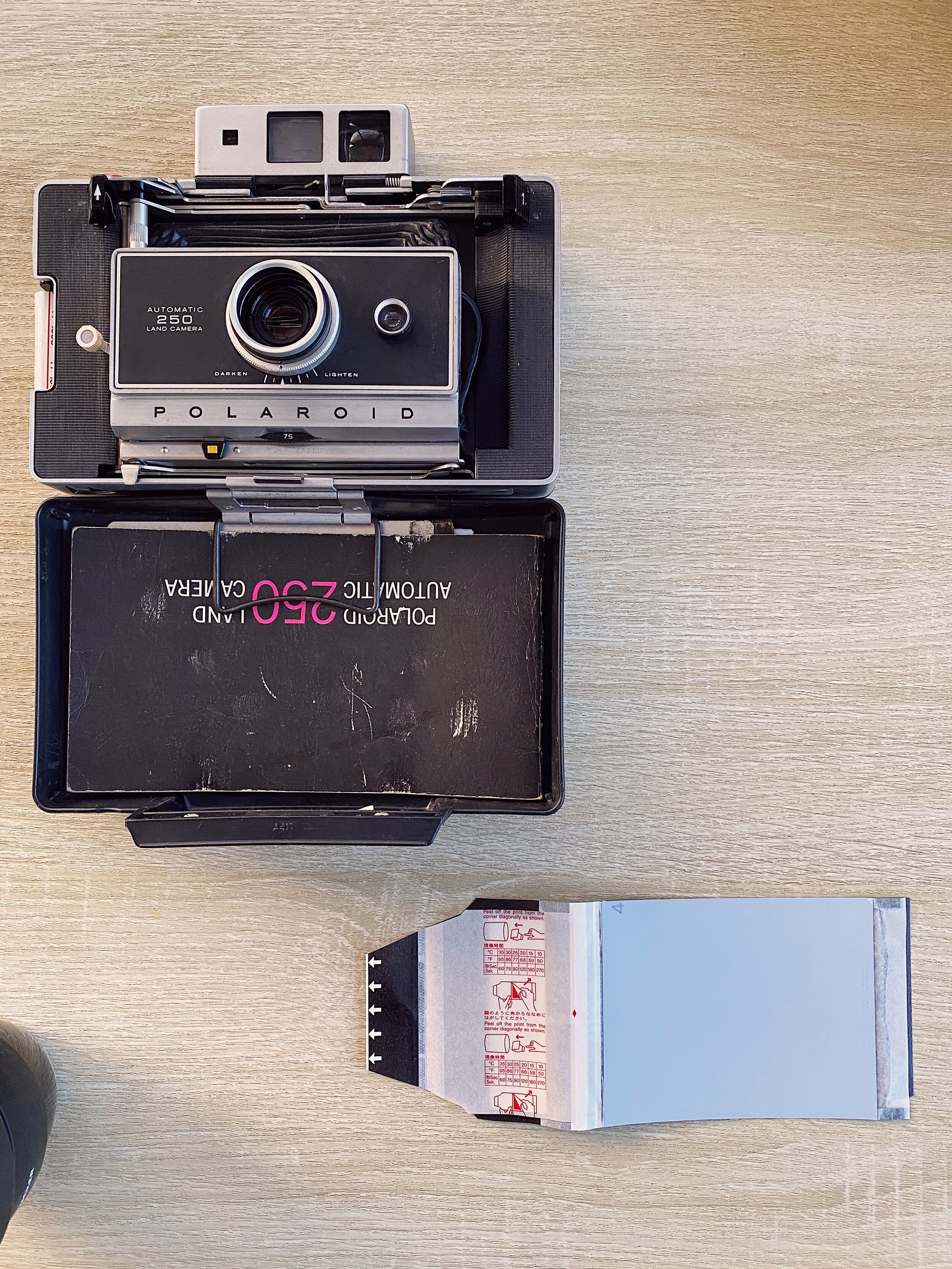
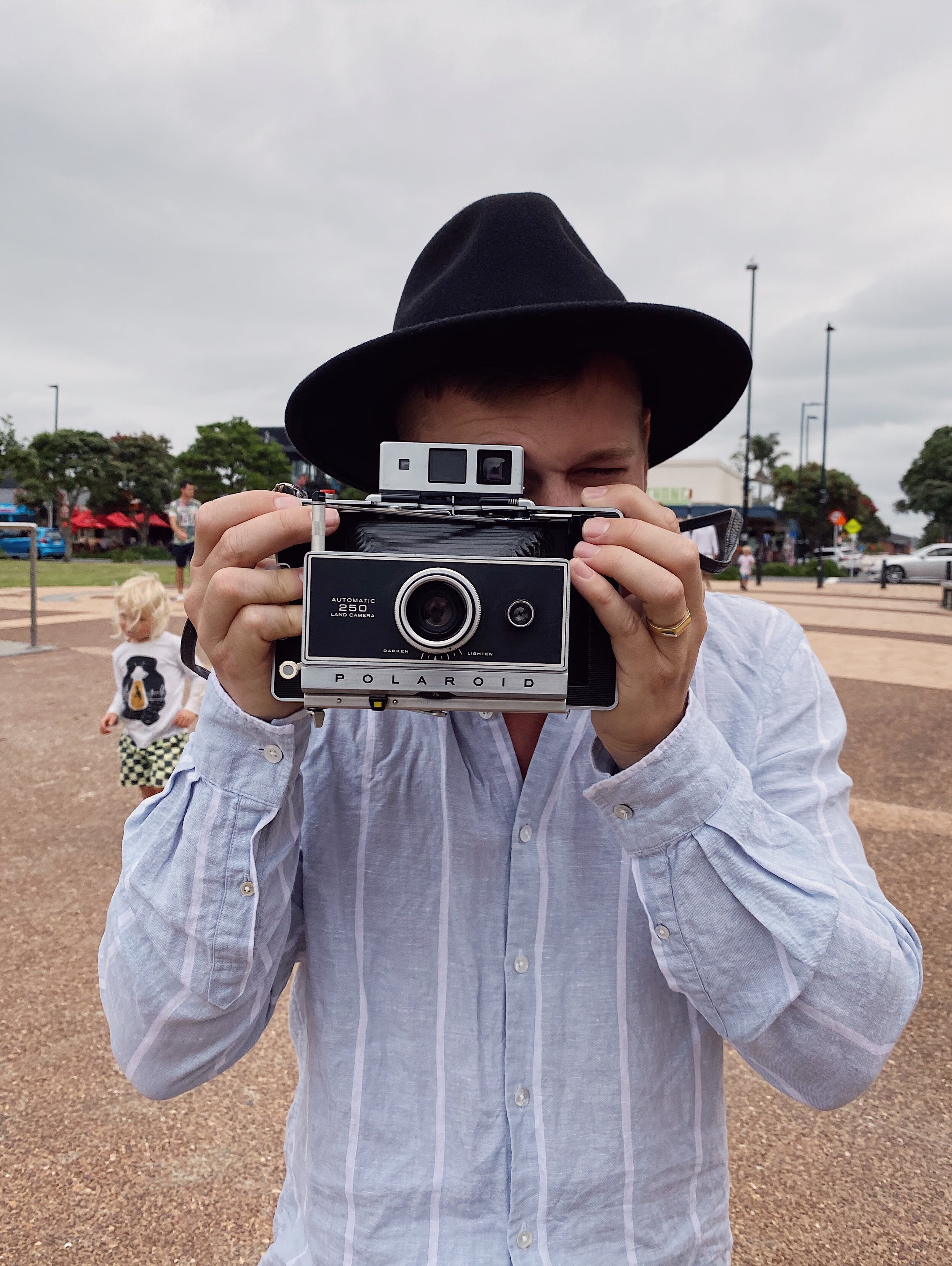
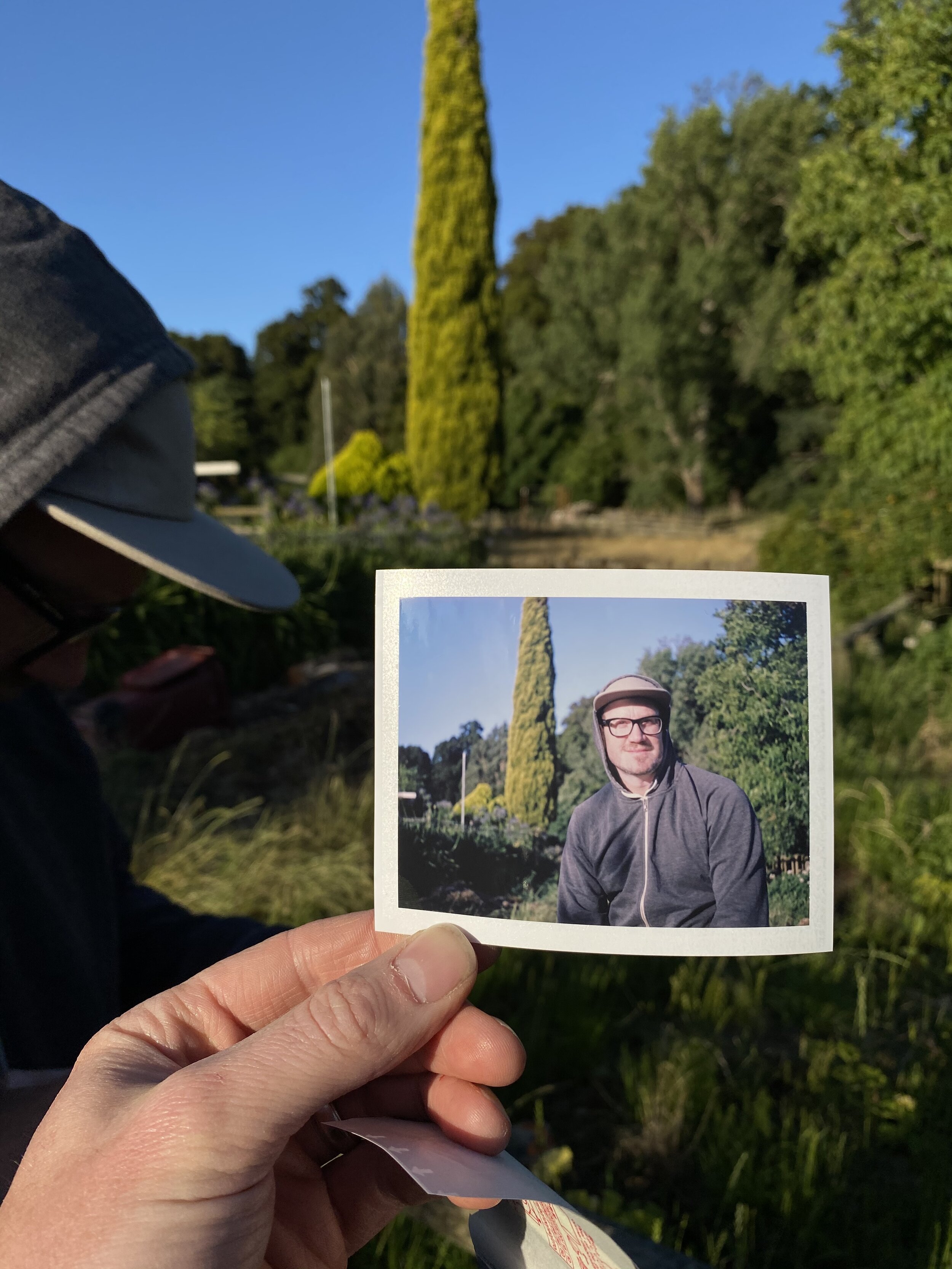
The Film
This camera uses the now (very sadly) discontinued Fujifilm FP100C. None of the major film producing companies manufacture film for these cameras anymore (not even Polaroid), though SuperSense have created a new type of peel-apart packfilm called One Instant to at least give people something to shoot through their otherwise-defunct cameras. It is a beautiful film and I’m sad that it isn’t available anymore. I have one pack left! It is a super magical process, take a look at this quick video of my subjects peeling their own photos!
The Scanned Photos
Part of my joy in shooting this camera was being able to let people walk away with a physical photo in their hand. This means I don’t have the portraits I shot for our friends and family like the ones you see in the video (I did keep the negatives when practical) but what I do have left is a little stack of summer keepsakes that we can flip through! These big and beautiful Polaroids were a very special way to document our summer trip, along with the Ektachrome positive film. With both of these mediums my kids will not need any technology to relive these memories in the future - only light to illuminate them, hands to hold them, and eyes to look at them.
You can see our scanned Polaroid “keepsakes” in the order they were taken below.
Let me know your thoughts about Polaroids, positive film, or documenting special moments in the comments.
-Sam
Stars & Stillness
Recently I got out under the stars with my good friend Larryn (Shadow & Shade). He helped me guess some settings on my Hasselblad; we had chippies, ginger beer, and good chats; and in the dead of the night we sat in deep, reverent silence while looking up at the stars.
Recently I got out under the stars with my good friend Larryn (Shadow & Shade). He helped me guess some settings on my Hasselblad; we had chippies, ginger beer, and good chats; and in the dead of the night we sat in deep, reverent silence while looking up at the stars. I thought about how I am so hyper-connected as I walk through my life, and how even though I am aware of that, it seems so difficult to make time to actually dis-connect from all of that information and stimuli. It was so refreshing. I sat down and wrote some reflections in the weeks following, and this poem came out of those words.
shot by me: Hasselblad 500cm on Ektar 100 film
I am still, completely still,
the world spins on.
I am still, slowly fading.
The night rises, like the blanket I pull over my chest,
as I stare up into the invisible vortex of stars.
She is still, she is always moving.
Am I a passenger, or an observer?
As I feel the extent of my small-ness under her majesty,
The distance and close-ness of it all,
The symphony of stars - dying and birthing to another time signature than this,
I take a breath, and participate in the divine.
I am still.
go check out Larryn’s incredible work: www.shadowandshade.co.nz // @shadowandshadenz
dev+scan: The Black & White Box
Ektachrome 100: Metering & Family Memories
Sooo anyone who saw our Cam & Sam video on YouTube knows that I under and over exposed most of my first roll of Ektachrome. I was pretty disappointed with the results, and over the following months I kept seeing these gorgeous images people were making with this beautiful new film stock! Salt in the wound.
Sooo anyone who saw our Cam & Sam video on YouTube knows that I under and over exposed most of my first roll of Ektachrome. I was pretty disappointed with the results, and over the following months I kept seeing these gorgeous images people were making with this beautiful new film stock! Salt in the wound. Also, I had exposed my blunder to the ruthless world of YouTube, so the need for redemption was real.
Positive Film vs. Negative Film
Slide film is a whole other beast when it comes to film photography! With negative film you have a lot of room for over-exposure as you are simply increasing the reaction between light and the emulsion - basically giving the shadows in your image more detail. With slide film it is easy to over-expose your photo and wash out the highlights. You can read more of the technical stuff and pros and cons here. For me personally, the things that make slide film appealing are not only the gorgeous, accurate colour rendition and contrast (when shot correctly) but also the fact that anybody can pick up the developed film, even once my body has passed away, and see the moments that I captured. That’s what was in my mind as I shot these rolls of my family.
Woah, one solid IPA deep and I’m getting all sentimental here.
Metering Techniques
I shot these two rolls on the same trip, same subject matter, one at a time, but using different cameras and metering techniques. It was a bit of an experiment. I’ll outline both methods here chronologically alongside some examples.
Roll 1 - Smartphone Metering App
Shot on my Minolta XE-1 with the 45mm f/2 lens. I used the Lumu app for iPhone (without the attachment), set to 100 ISO. I metered for the overall scene (pointing the metering camera at the scene I was going to photograph), and at certain times metered for the highlights (pointing the metering camera at the brightest part of the scene).
A bunch of these were shot at the beach and I love the way the colours of the water came out. Super realistic.
For the following sunset shot I metered for the sky, to retain those sunset colours. I basically just held the meter so I could only see sky (to avoid the shadow areas affecting the meter reading).

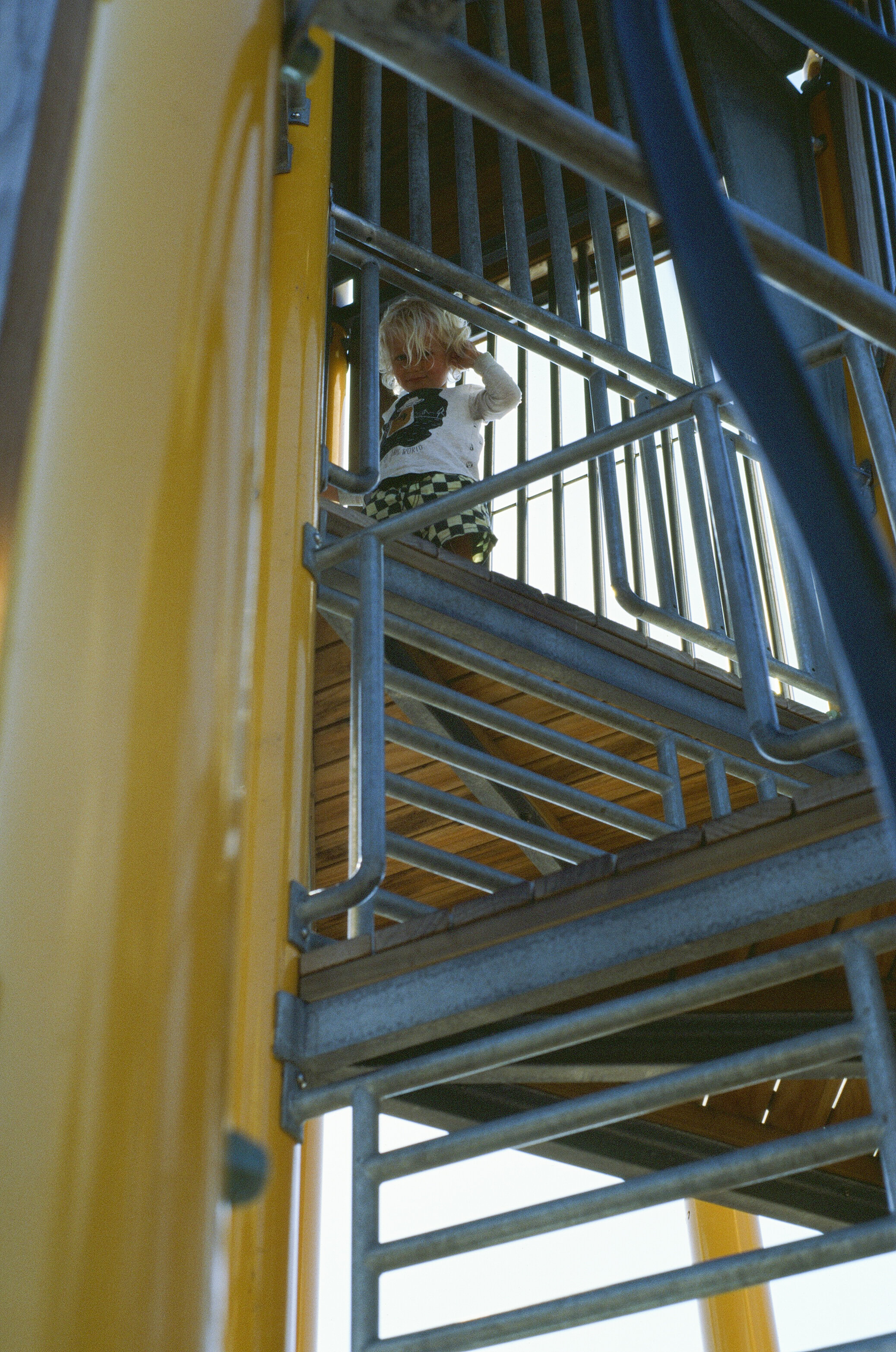

Roll 2 - In-Camera Meter
Shot on my trusty Olympus XA which uses aperture-priority only. Choose the aperture and the camera chooses the shutter speed. I set the meter to 125 ISO (1/3 stop under 100 ISO).
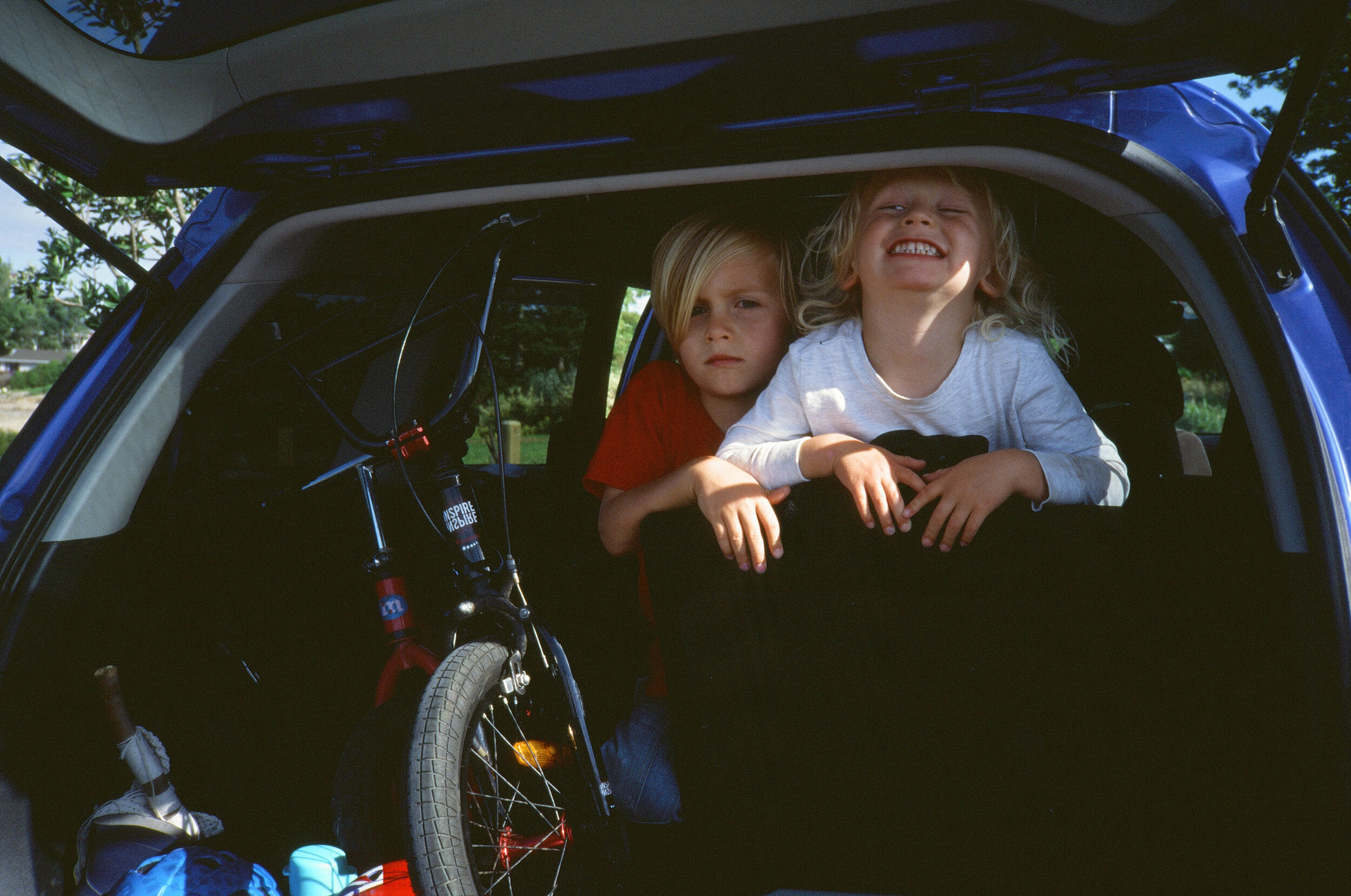
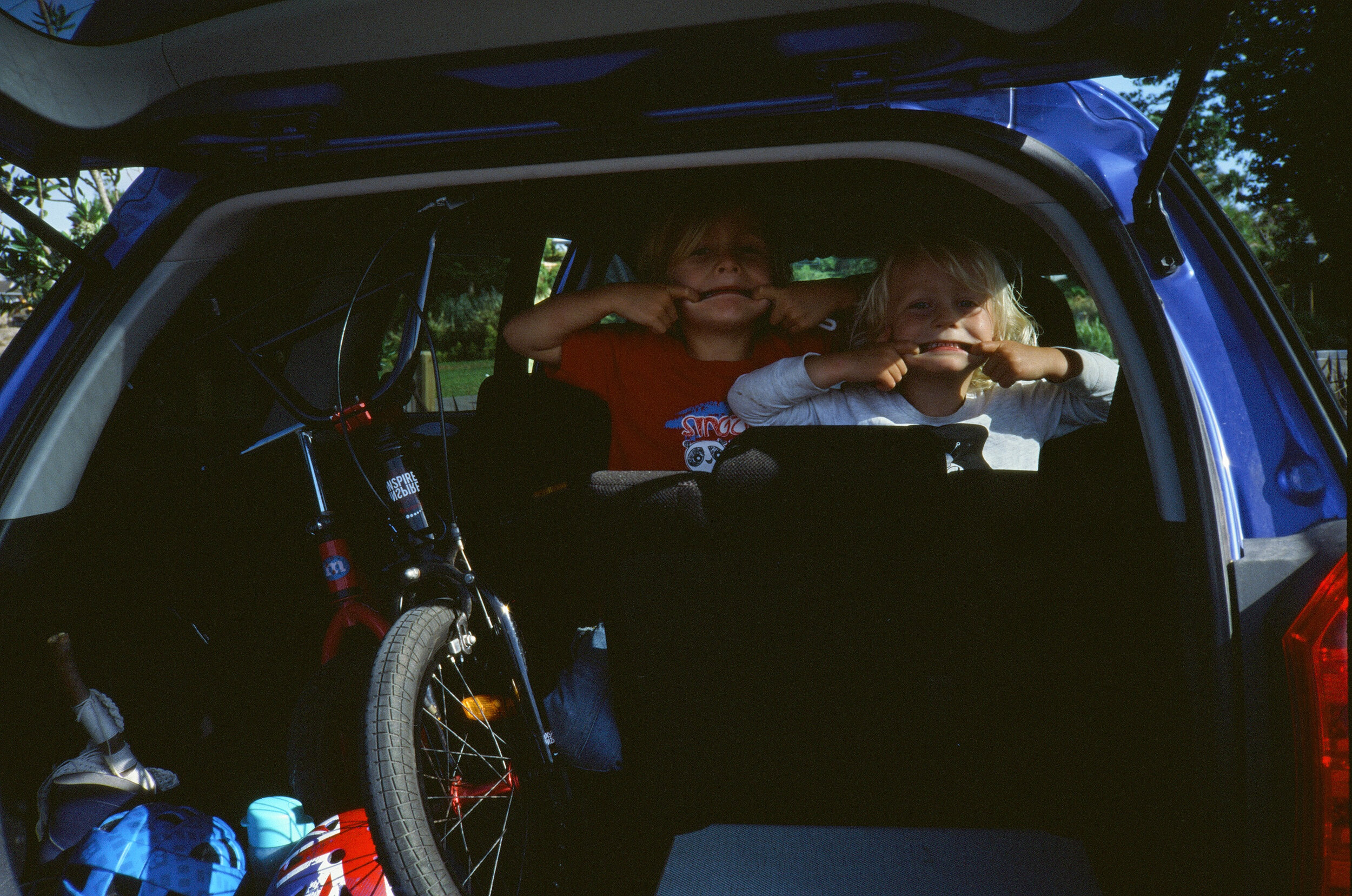
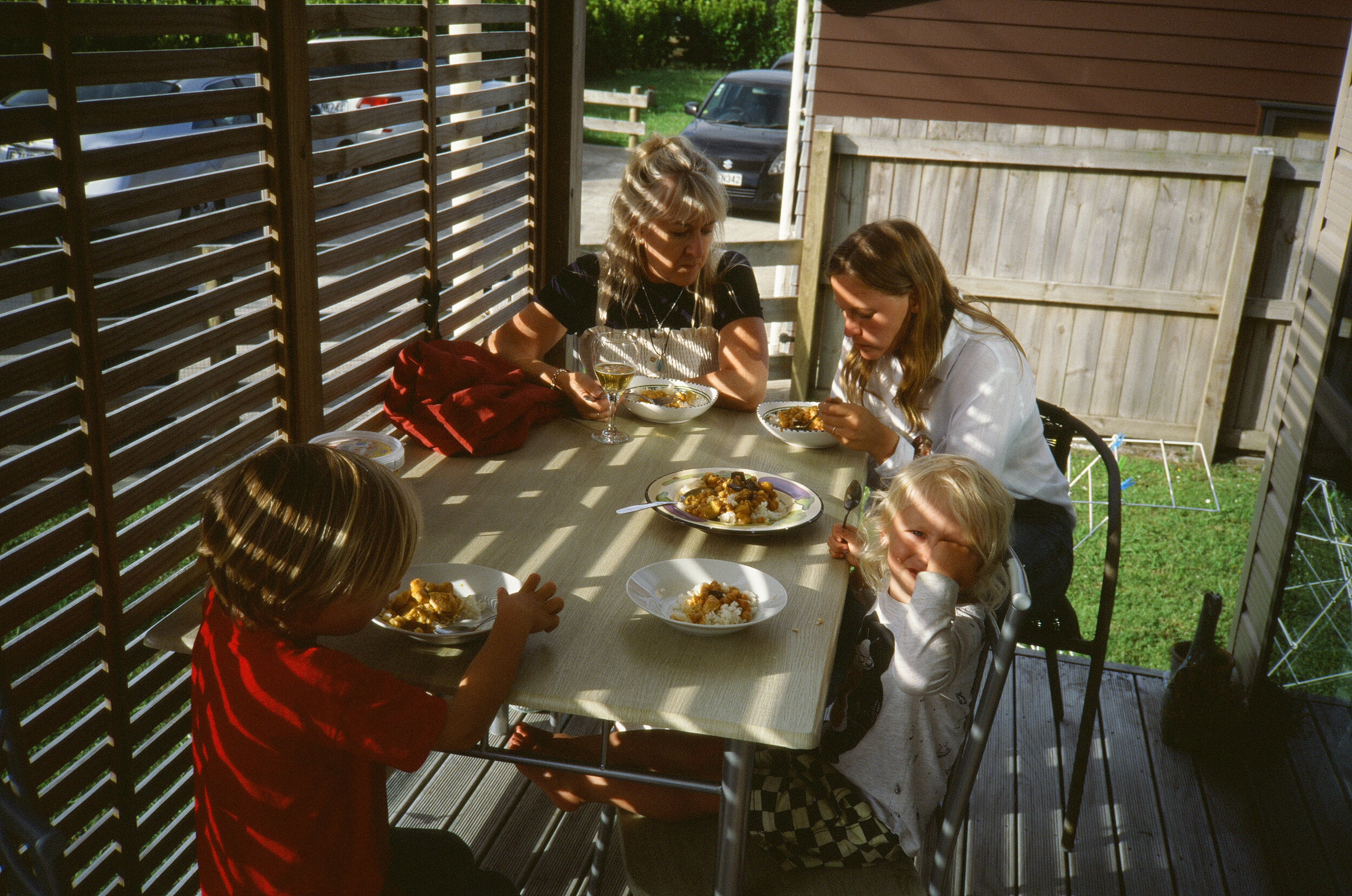
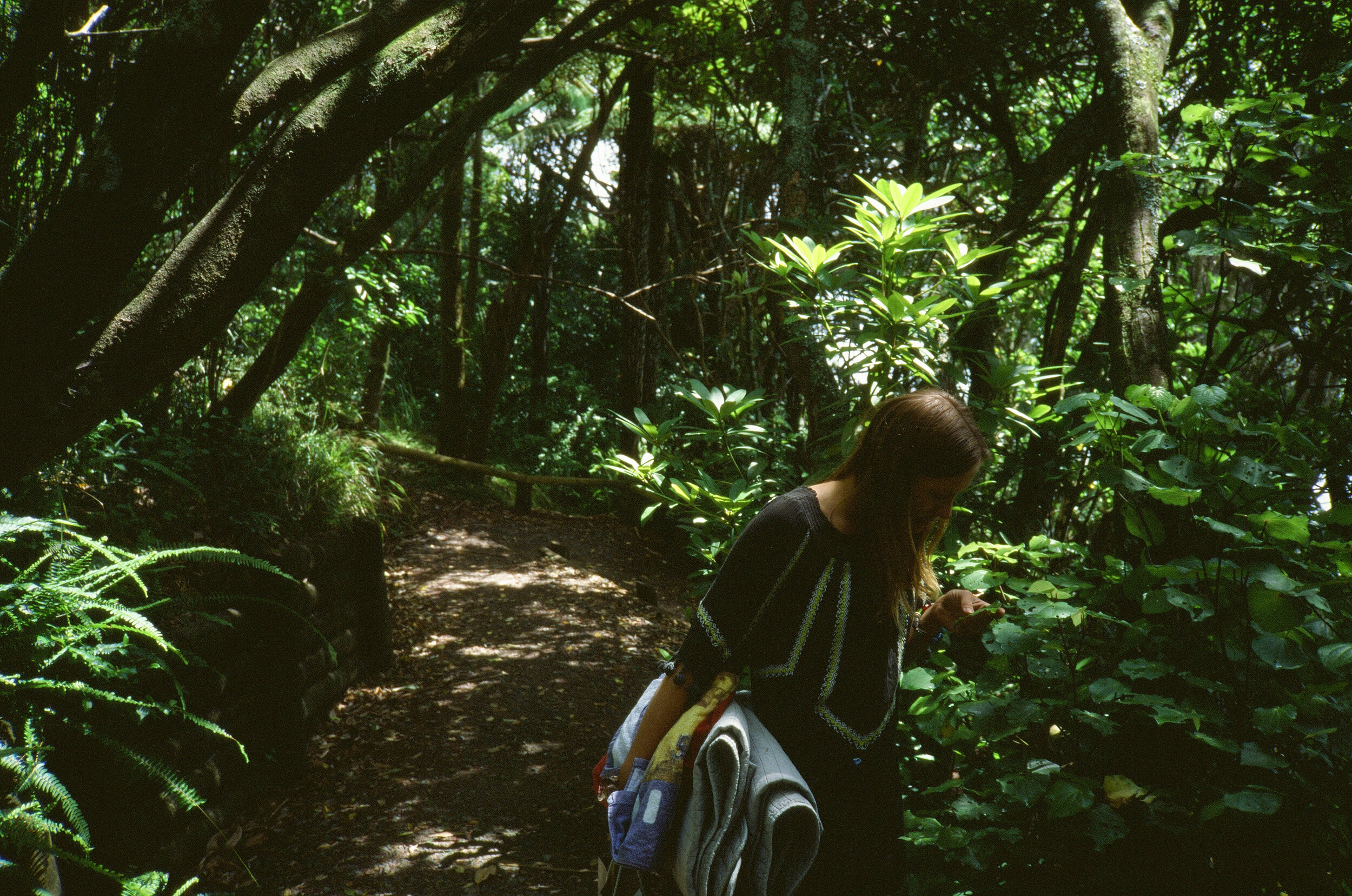
In this shot, the meter has technically done a good job of exposing for a value in-between the shadows and the highlights. I would’ve liked to have kept the blue colour of the water, so in the future for a shot like this I would set the ISO to 200 (to trick the meter into under-exposing).
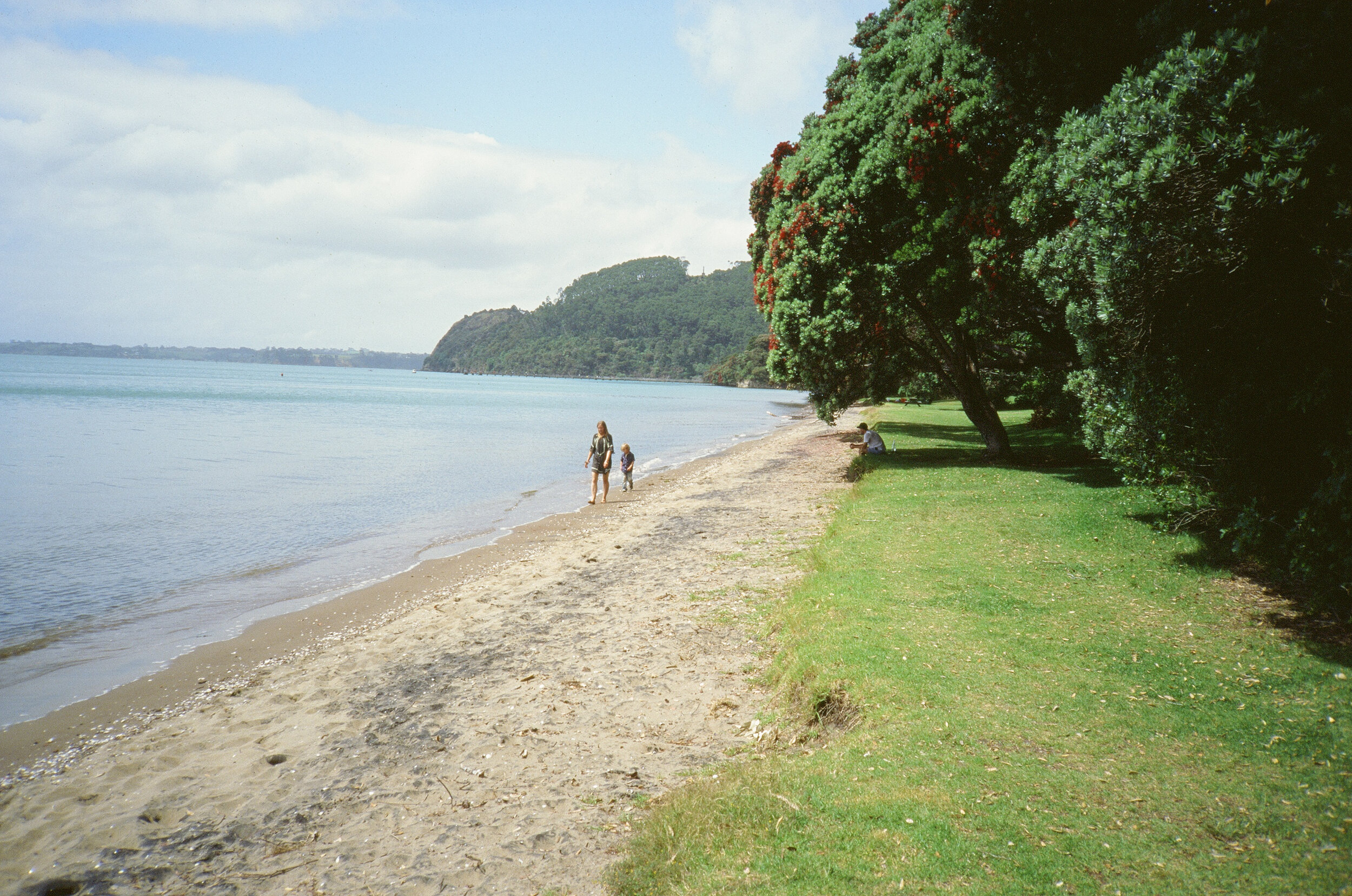
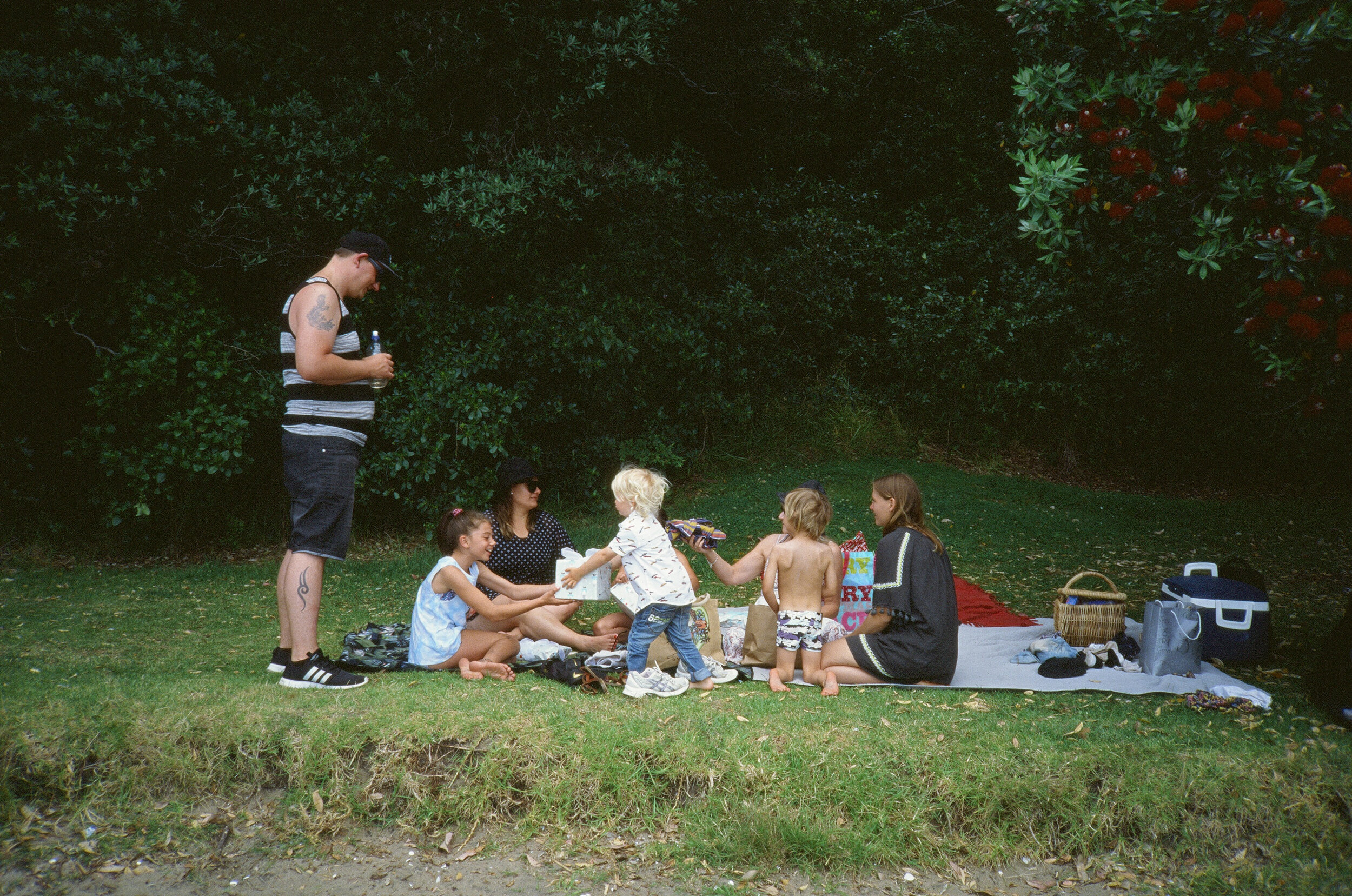
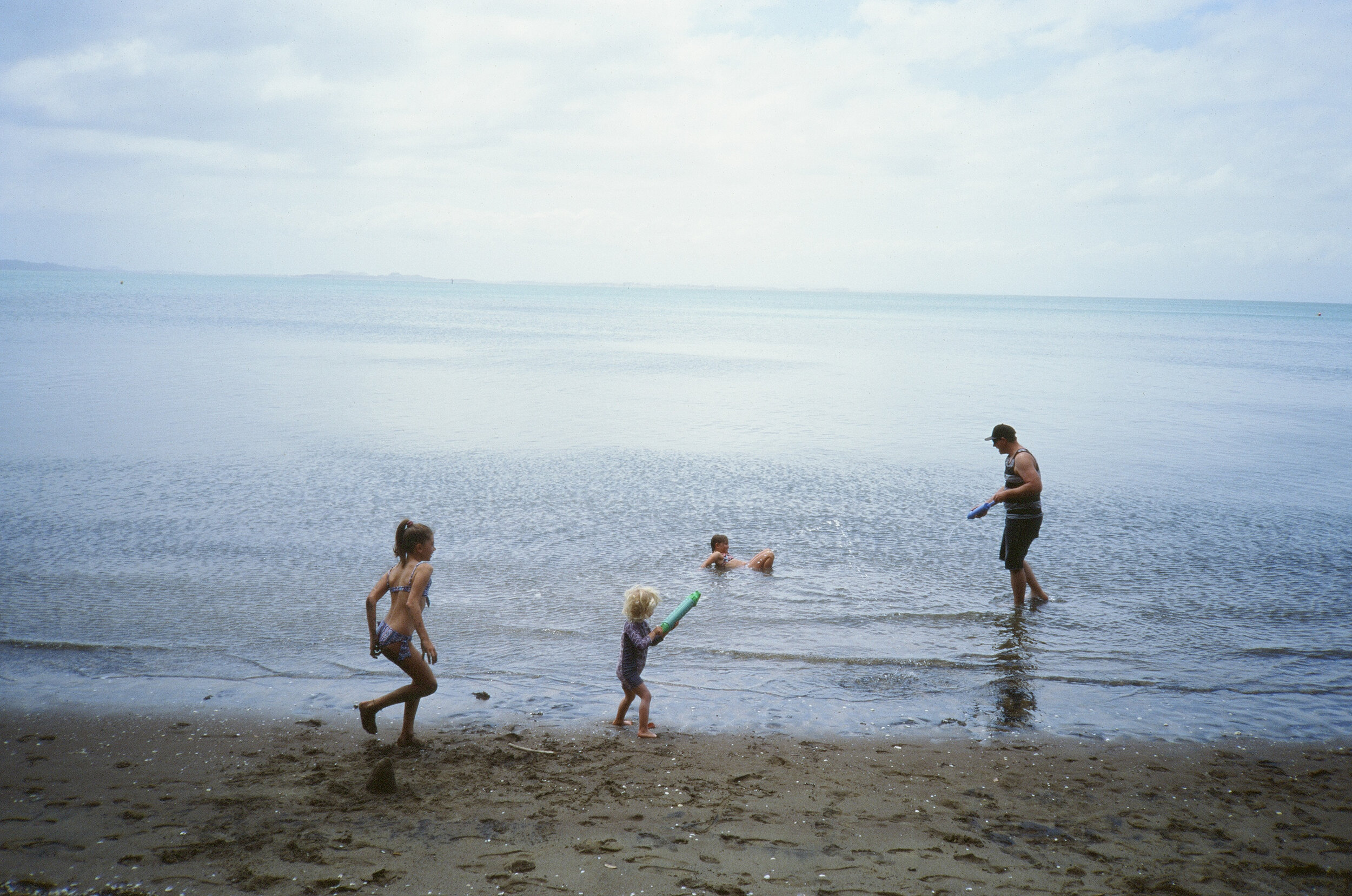
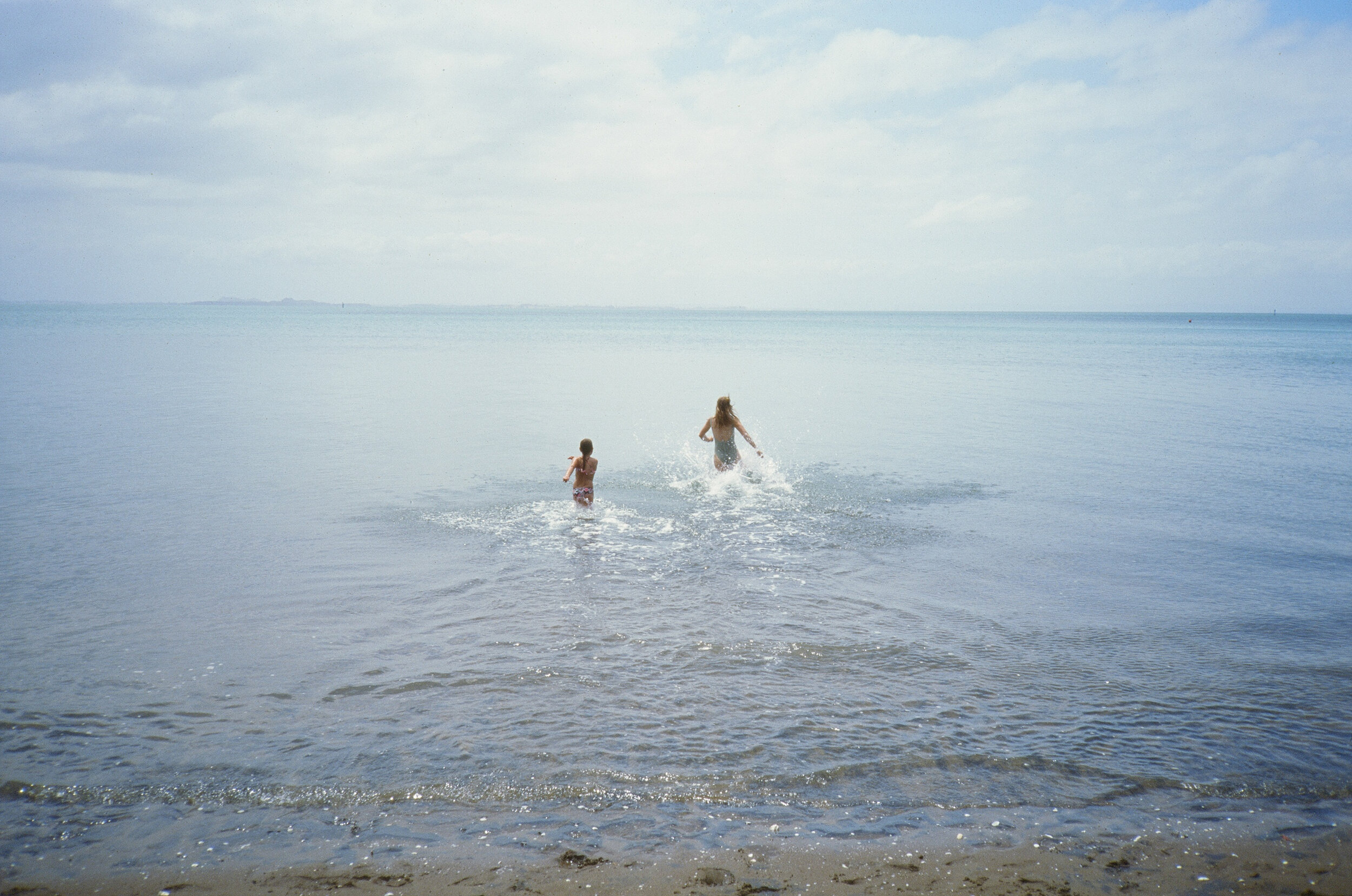
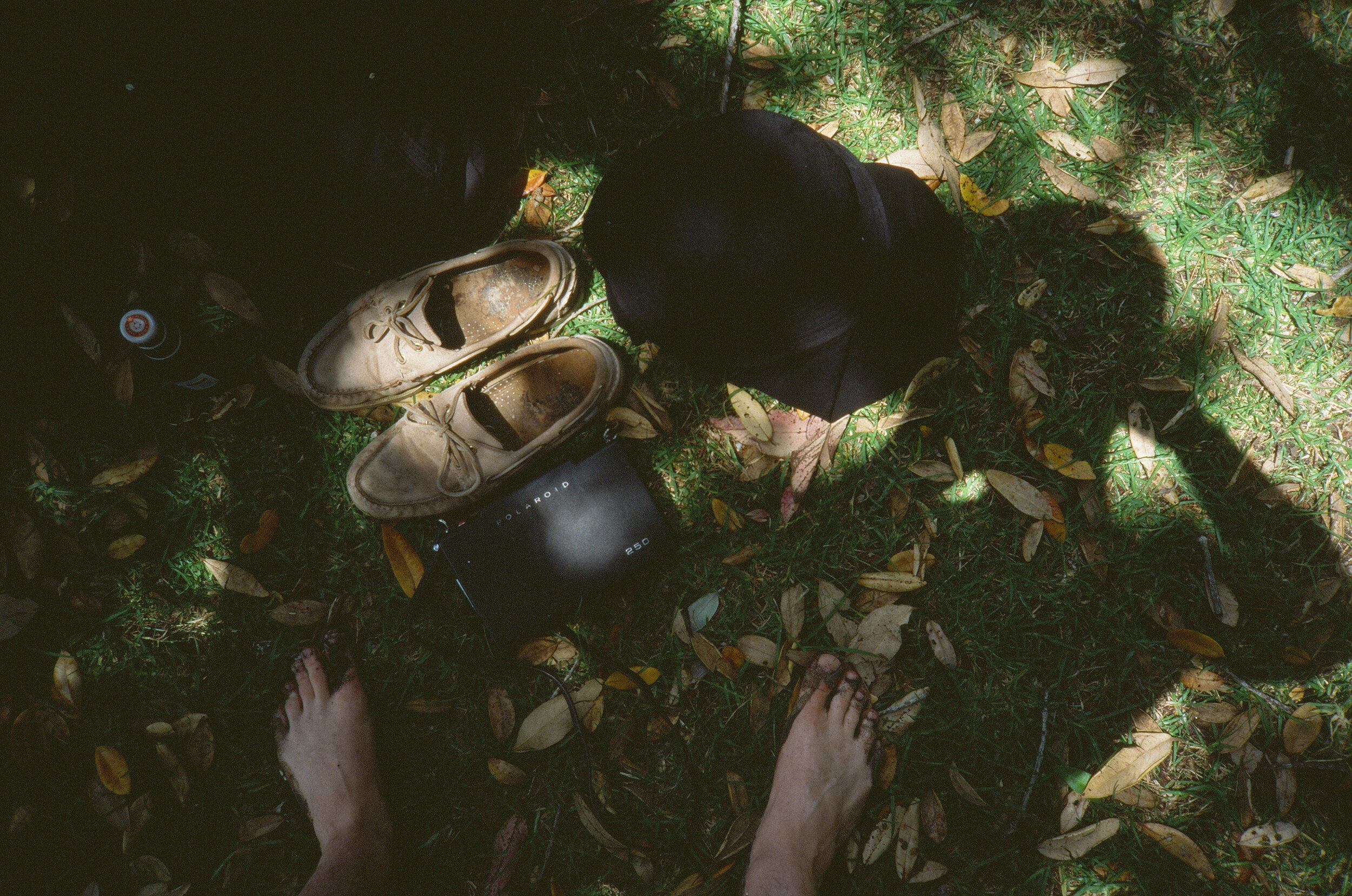
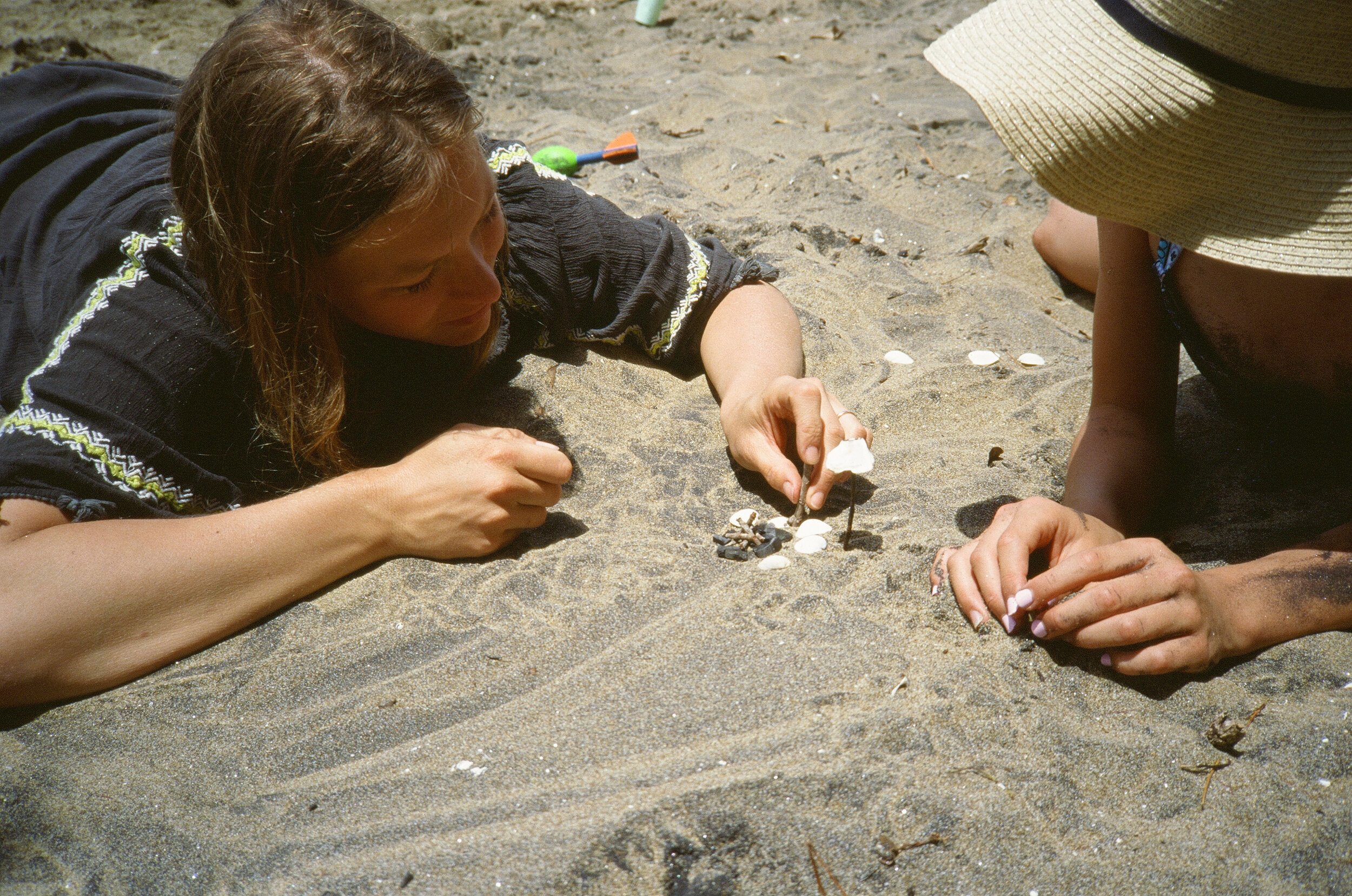

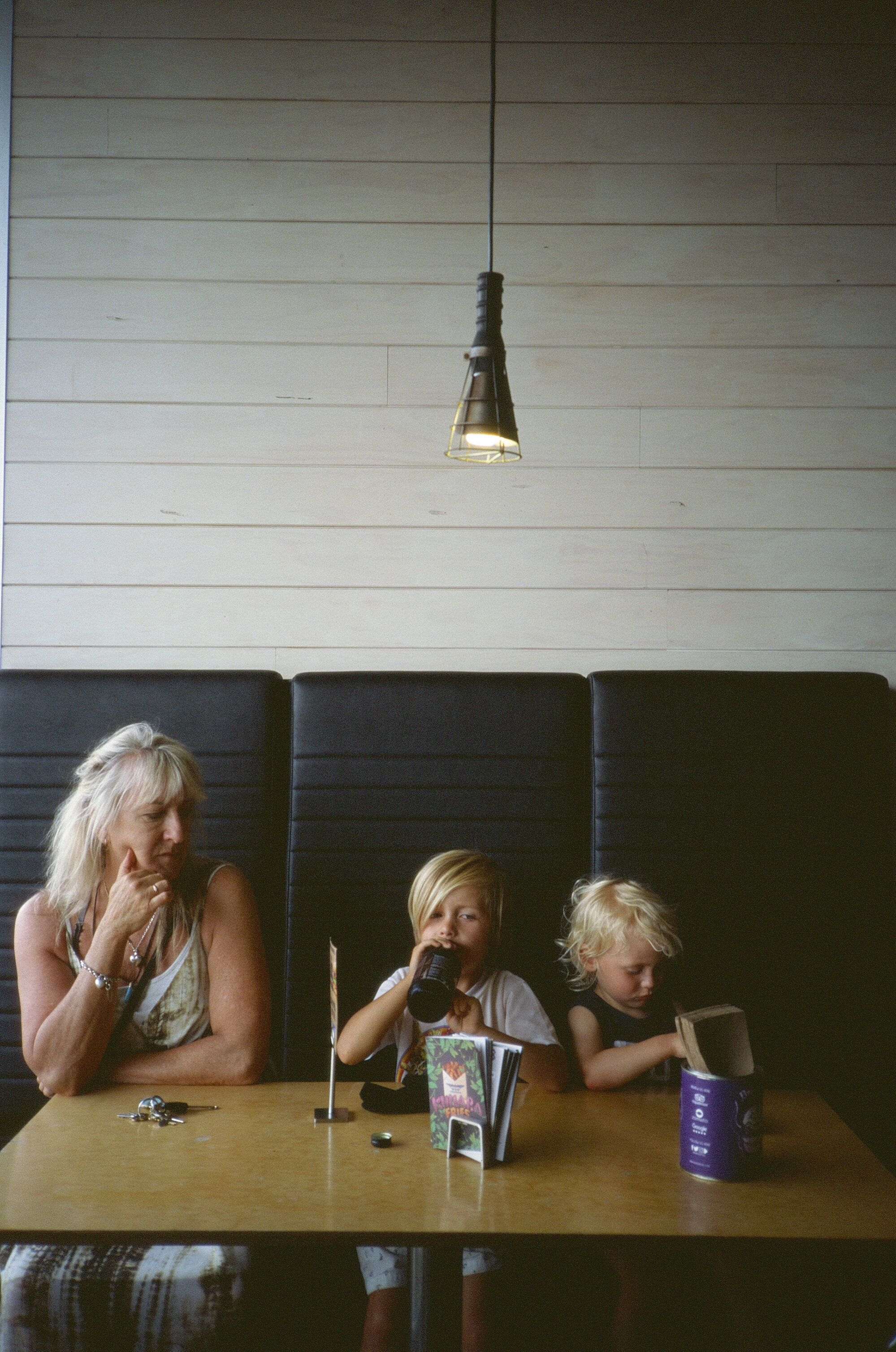
I really like this film.
I was not expecting to like it this much but I’m really glad I gave myself a second chance to meter for this film properly. It’s ability to give very realistic colours, combined with a nice amount of saturation and very fine grain have definitely won me over. The skin tones also came out very natural and the beauty of the developed film itself is an added bonus. Might have to get some mounts so we can view it in the slide projector!
At 100 ISO this is probably not a film I will use for every day shooting, thought I don’t think it was designed for that. We’ve got plenty of other film for this - Portra 400, Ilford HP5, T-Max P3200, to name a few. I’ll stick to those for my every day carry, for their ability to be shot almost anywhere. But when I want that glorious natural colour, extra sharpness, and the light is good, I’ll be reaching for E100.
Thanks as always to The Black and White Box for supplying the film and the top notch dev+scans.
-Sam
Pou Unveiling - Cameron Cres
I have the honour of being involved with Te Pātukituki o Wairarapa who are doing inspiring and important work in our community, which encompasses a lot and is hard to sum up.
I have the honour of being involved with Te Pātukituki o Wairarapa who are doing inspiring and important work in our community, which encompasses a lot and is hard to sum up. Part of what drew me to the organisation was the way they are helping to restore Māori culture in the region and helping us to move through our post-colonial culture into something new, and operating with such openness and love. Probably something for another blog post. You can read a bit about the organisation below amongst the photos and check out our Facebook page for more.
I was stoked to be able to document the unveiling of these beautiful pou (pillars) in Cameron Cres, carved by Te Pātukituku members Wayne Pitau, Francis McNally-Te Maari, and Trevor Simmonds. They form the entrance to a park area which backs on to the new Colombo Road netball courts and this spot is being slowly transformed into a space for reflection for the community to enjoy. This project is the result of a partnership between the Council and Eastside Community Group, with many community members (as well as Te Pātukituku) having a hand in seeing it come to fruition.
It was a beautiful still morning, and there was a peace in the air as people stepped forward to touch and “take” in the pou. These moments were very moving and I tried my best to capture these in the black and white photos below.
Te Patukituki o Wairarapa is a gallery workshop that promotes and invigorates Toi Maori as a local practice. We provide a cultural heartbeat that contributes to the regional narrative of community wellbeing, telling our own local purakau-stories. We provide a gallery and workshop in the Arts Quarter-Masterton, community and school workshops, transitional education, professional development and consultancy. Our local experts specialise in Rongoa, Kowhaiwhai, Raranga, Tikanga Maori and Whakaiiro.
All users of Te Pa have the option to enjoy the benefits of membership to the society. A platform that supports trade for local Toi Māori artists and for visitors to experience an authentic Māori experience. We operate from local funding, energy exchanges like koha, community volunteers, resident artists, events, workshops, commisioned work, and contracts for the programs we run.
Our community keep in touch with what’s on via our Te Patukituki Facebook page, where you can find and register for our events and workshops.
Nau mai haere mai hai whitiwhiti kōrero!
Above: Hasselblad 500cm / Kodak Portra 400 / dev+scan by The Black and White Box
Below: Minolta XE-1 / Kodak Tri-X 400 / developed at home + scans by The Black and White Box
Click on photos to expand.
Ihumātao: Privilege and Responsibility
It’s been over 3 weeks since I visited Ihumātao and my stomach is still churning every day, my mind trying to hold steady as the waves of love, pride, grief, and anger crash into each other and threaten to tip me off balance - as I sit in my office chair and attempt to write emails and answer phone calls.
It’s been over 3 weeks since I visited Ihumātao and my stomach is still churning every day, my mind trying to hold steady as the waves of love, pride, grief, and anger crash into each other and threaten to tip me off balance - as I sit in my office chair and attempt to write emails and answer phone calls. I feel the burning need to write something about my experience and what I’m learning. So here’s a letter to all my fellow people of white privilege (especially people who identify as christian) - we need to talk about Ihumātao.
I’m not an expert on these topics and I will be making generalisations so I’m sorry for that in advance, but I’d rather talk about this imperfectly than not at all. I know I don’t have all the answers but I feel the need to be straight about this. I’ll share some of my photos from Ihumātao here too, but because I’d rather focus on this important conversation in this blog post, the stories that go with the photos will be in the captions on instagram as I slowly share them over there.
I shot a couple of rolls of colour on the Hasselblad 500CM, but mostly Tri-X 400 black and white 35mm film as I wanted to draw some parallels to Bastion Point. I struggled with feeling disingenuous while taking photos since I was only going to be there for two days - this is the kind of thing that requires a long-term commitment (like what Jos Wheeler is doing), and I didn’t want to be seen as going there to take photos for my own gain, but my gut feel was that I needed to go anyway. I was made to feel so welcome and I’m so glad I went. It was worth it just to be there to show my support, and to learn and be transformed by the experience. The photos are just an added bonus that I hope will give you an idea of what I felt at Ihumātao.
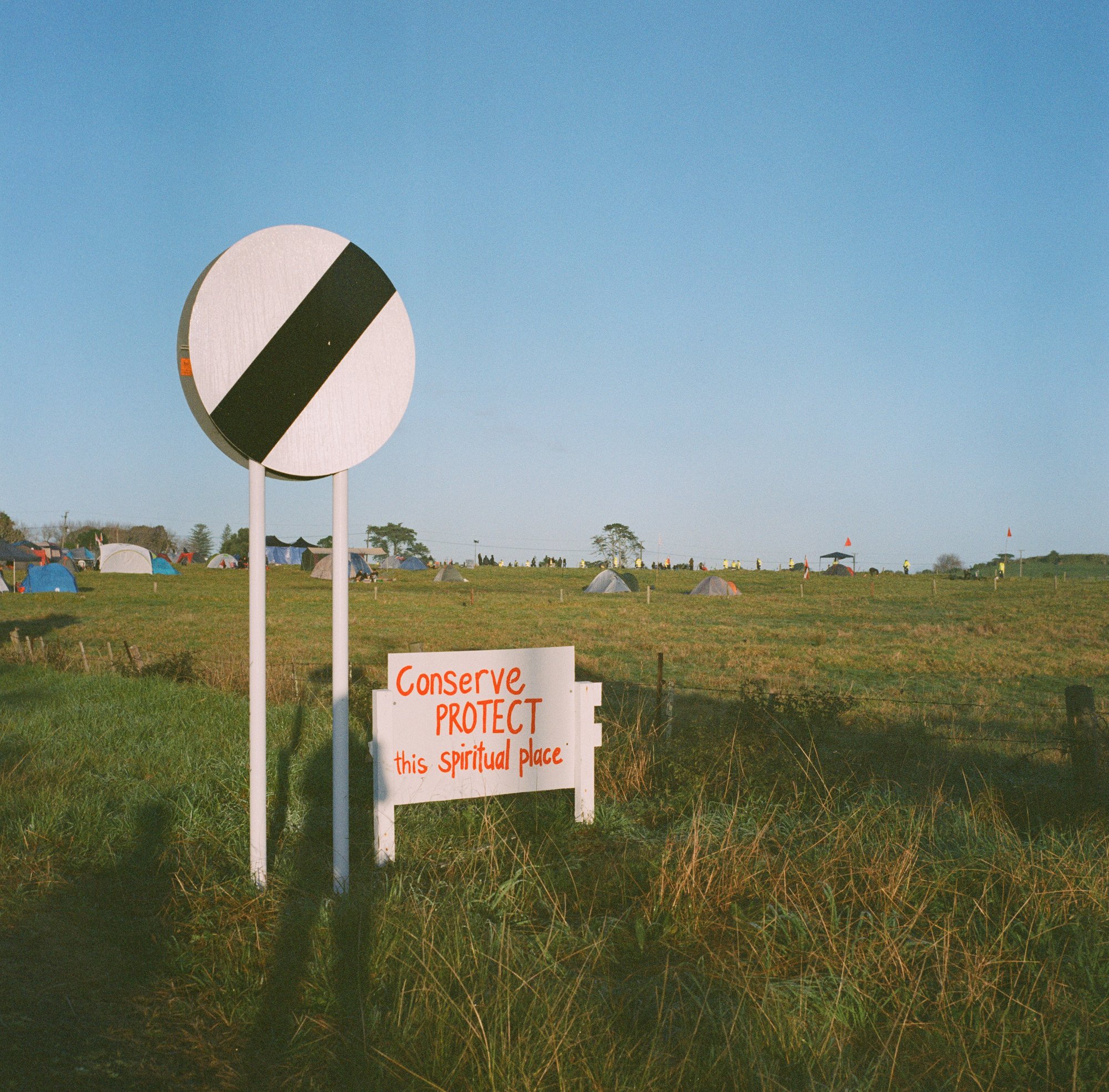
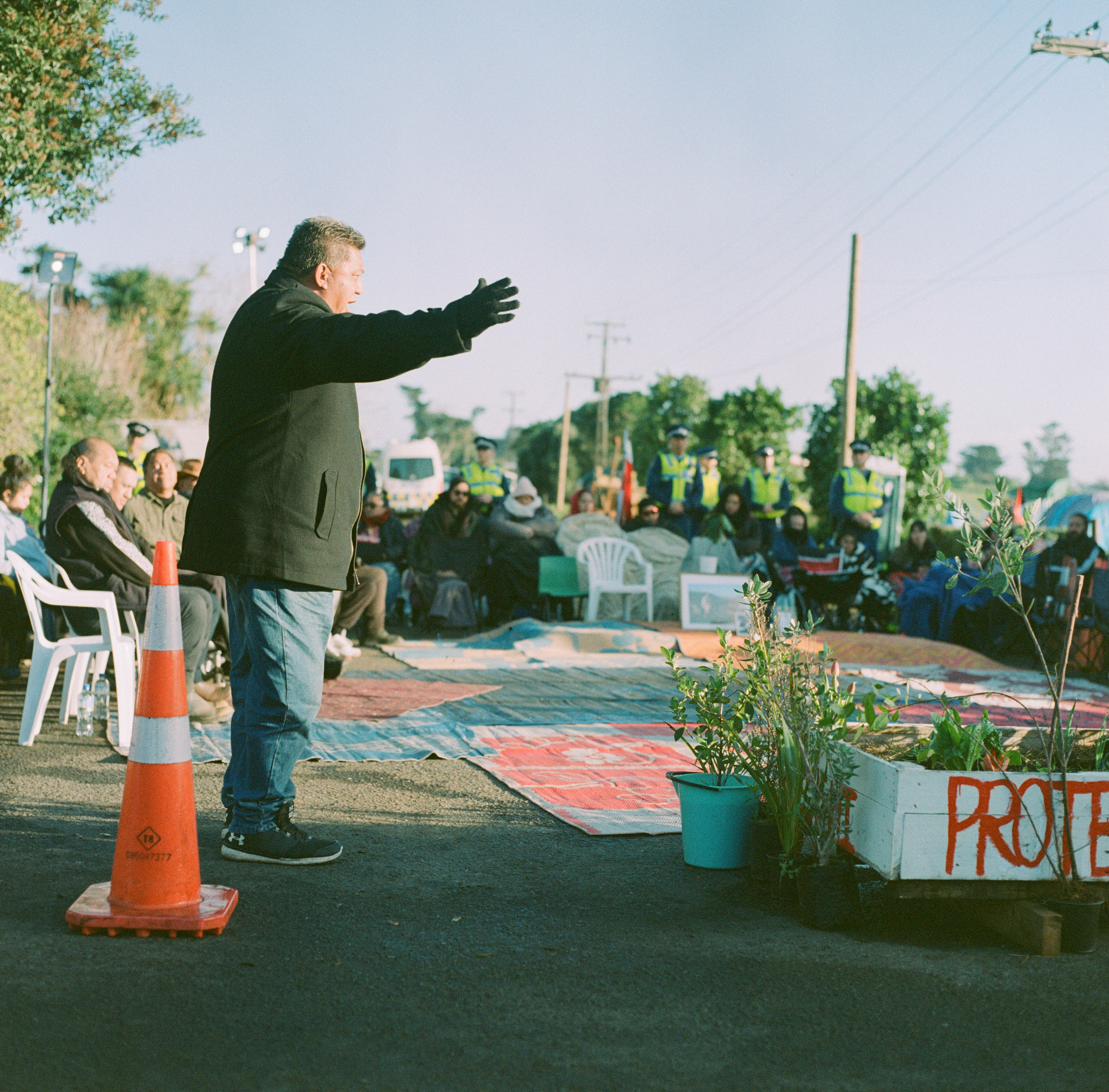
Sources of information.
Firstly, a word about information. Don’t believe everything you see in the traditional media, and don’t take snippets of coverage as a complete picture of what is going on. The movement at Ihumātao is the most beautiful, peaceful, and heartbreaking movement I have experienced, and brief slots in the news will never do it justice. It’s really difficult to try and explain the effect my visit has had on me. I could just feel everything so intensely - the peacefulness, aroha, and resilience from the protectors and leaders, the strength and importance of the land, and the shared grief in the air, like the morning fog - rising from the ground and lingering among us. Honestly, I’m still processing it all and I think it’s going to take a while.
Check out the links below, and see my instagram posts for more about my experience there.
Best of all, visit Ihumātao if you can - I promise you will find the people super welcoming. The day I was there, people were being welcomed on to the whenua all day, a never-ending supply of food was passed around, people were made to feel welcome and you could just feel the aroha.
Cultural worldview.
We need to recognise that we all have a lens through which we view the world, and one major factor that shapes this lens/worldview is the culture we are surrounded by. I am not Māori and I didn’t grow up with much exposure to the culture other than the odd song, performance, or pōwhiri. The way we Pākehā view and experience the world is going to be very different to a person that has grown up immersed in Māori culture. For example (again, I’m generalising here) - the western worldview says that land is an asset to be owned, traded, worked for profit or enjoyment, as the owner sees fit. Māori worldview says that we all belong to the land, the land is our mother, she provides for us and is to be respected and protected. It is hard to understand the depths of the second concept if you can’t momentarily attempt to put aside that european lens we’re looking through! But how much more rich, Christ-like, and important is that concept? And side note for christians - we need to identify the western european worldview that has filtered the message of Jesus into the faith tradition we have today, and try to hear his teachings like his original audience did. Remember, Jesus was an indigenous and political revolutionary in a land under occupation of an empire.
It is super important to acknowledge the limitations and bias of our worldviews, because our lens effects the way we see everything.
Privilege.
I’ve been on a journey of waking up to the ways that white privilege, racism, and the effects of colonisation still exist in Aotearoa today. Once you see, you can see it’s subtle and not-so-subtle effects everywhere. I’m not going to make the argument here so I’ll link a great write-up that talks about this: Racism and White Defensiveness in Aotearoa: A Pākehā Perspective. Read with an open mind (looking outside of your experience and open to the experience of others)!
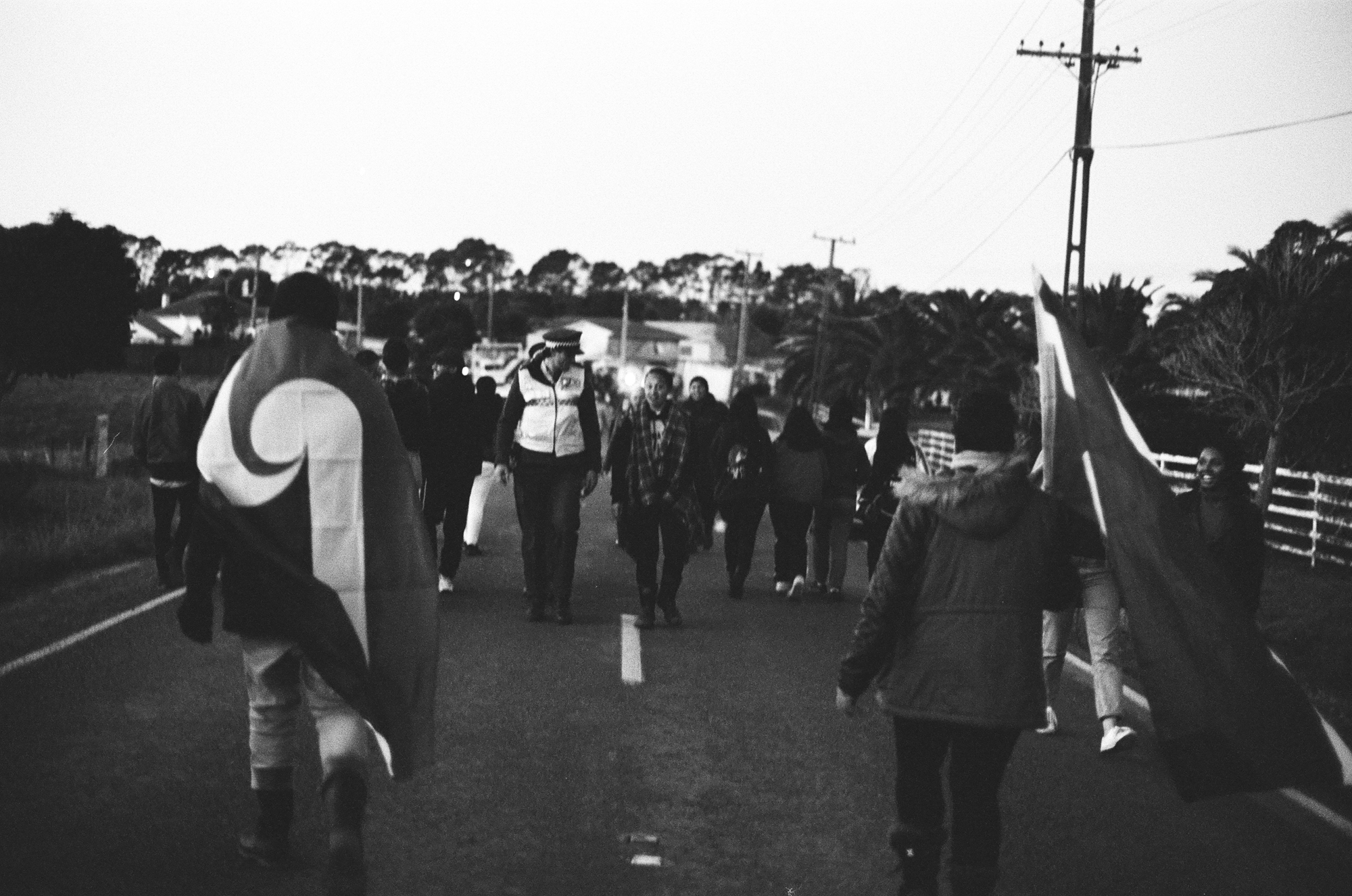
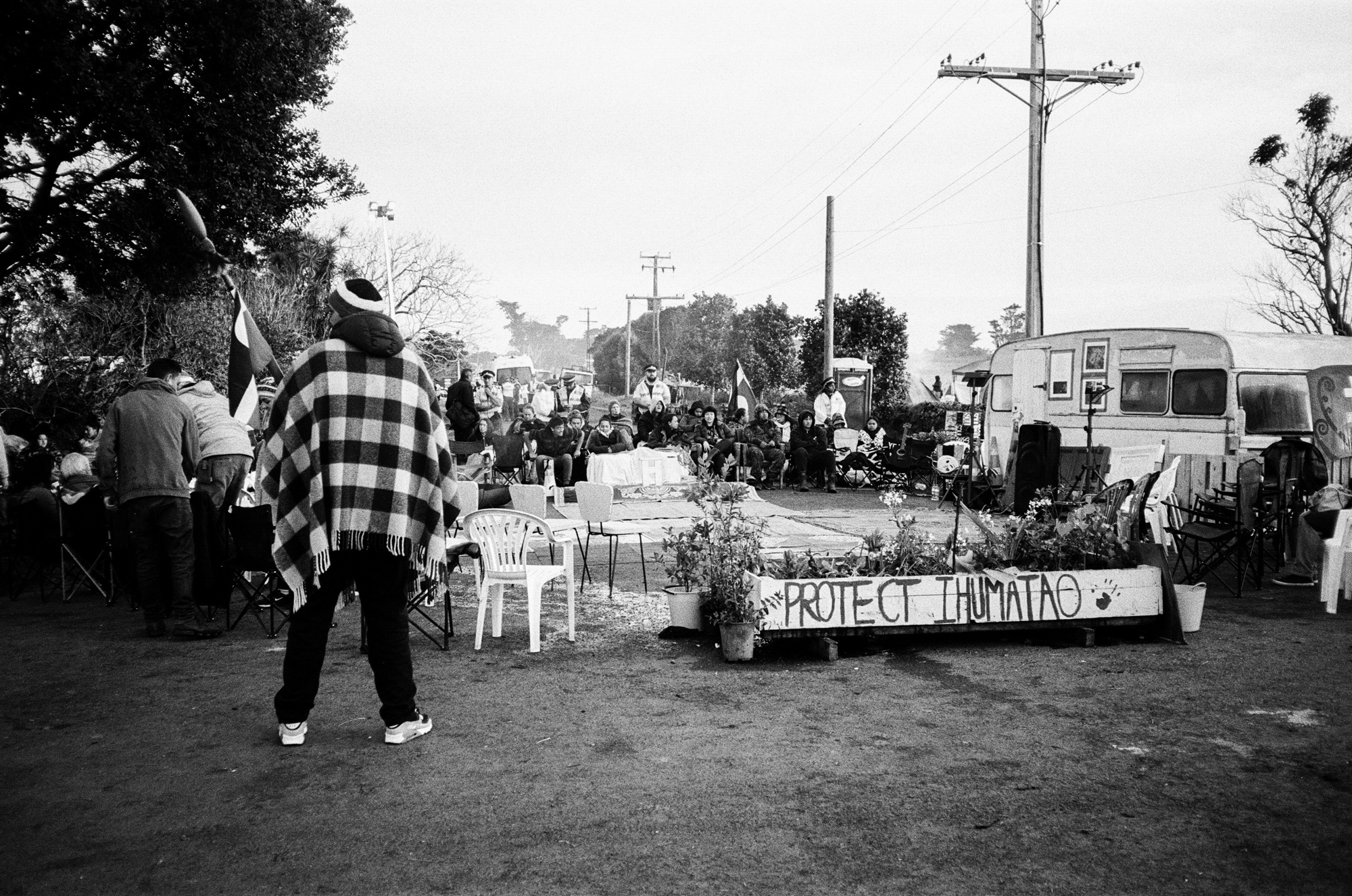
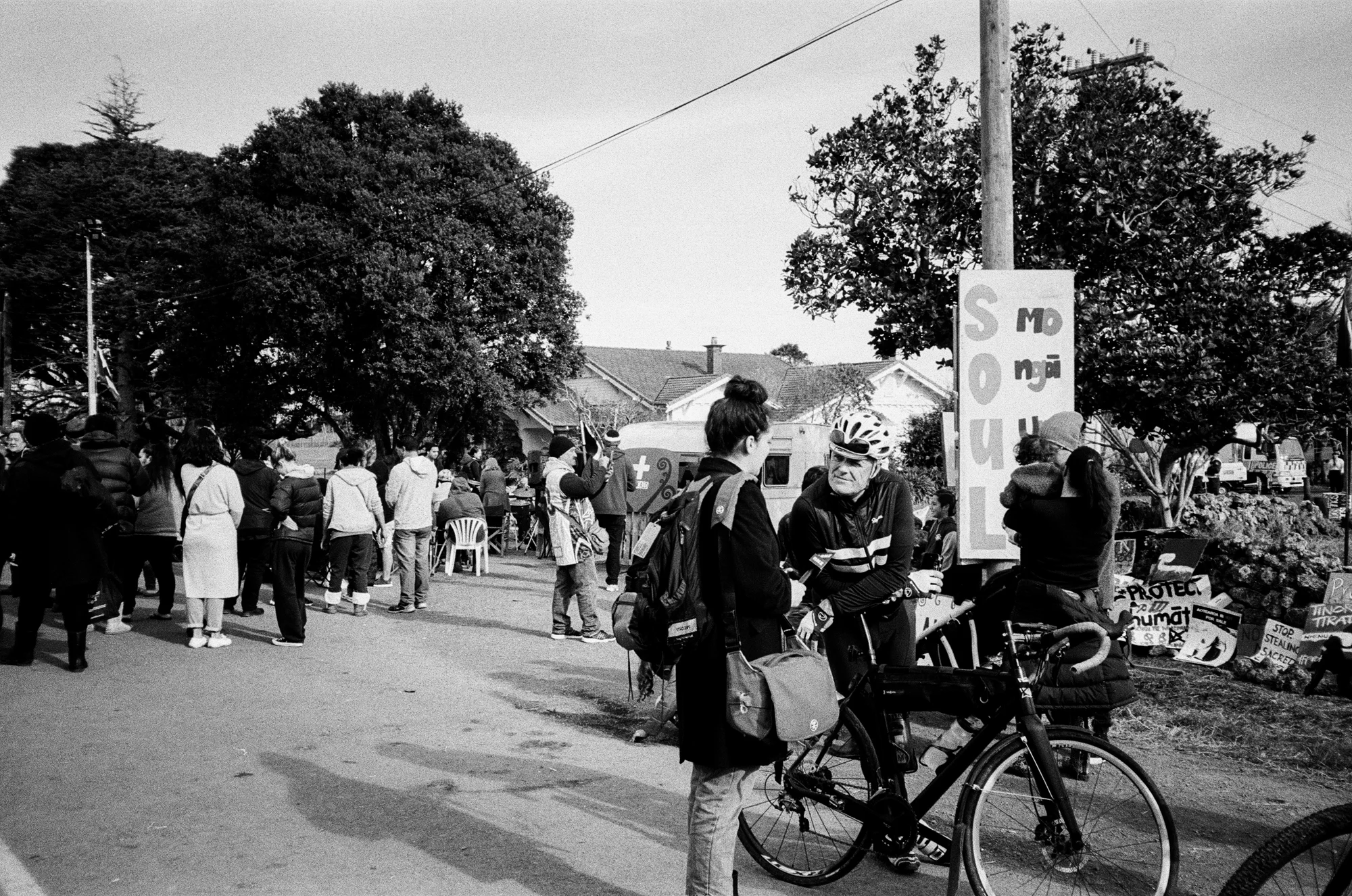
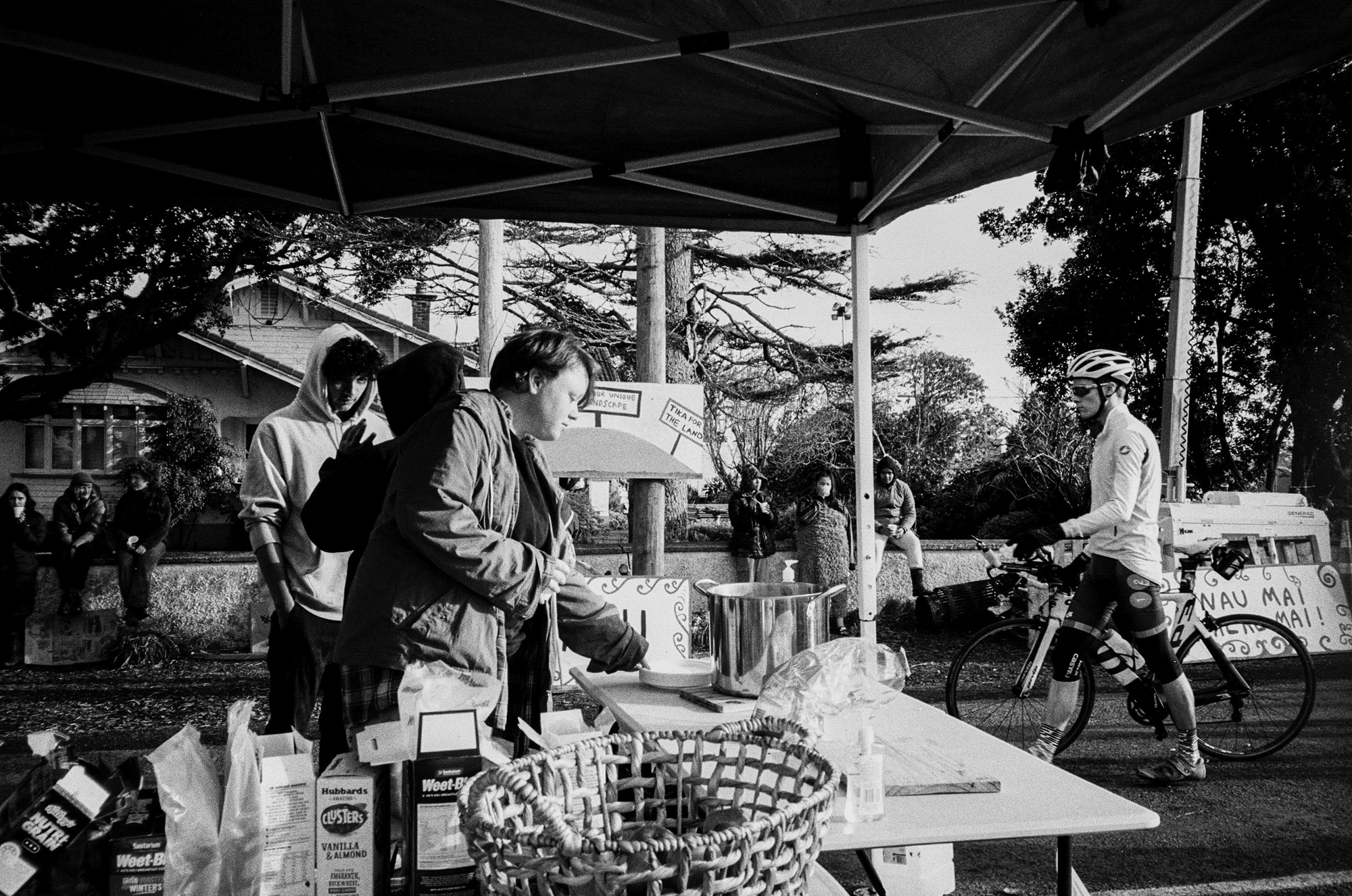
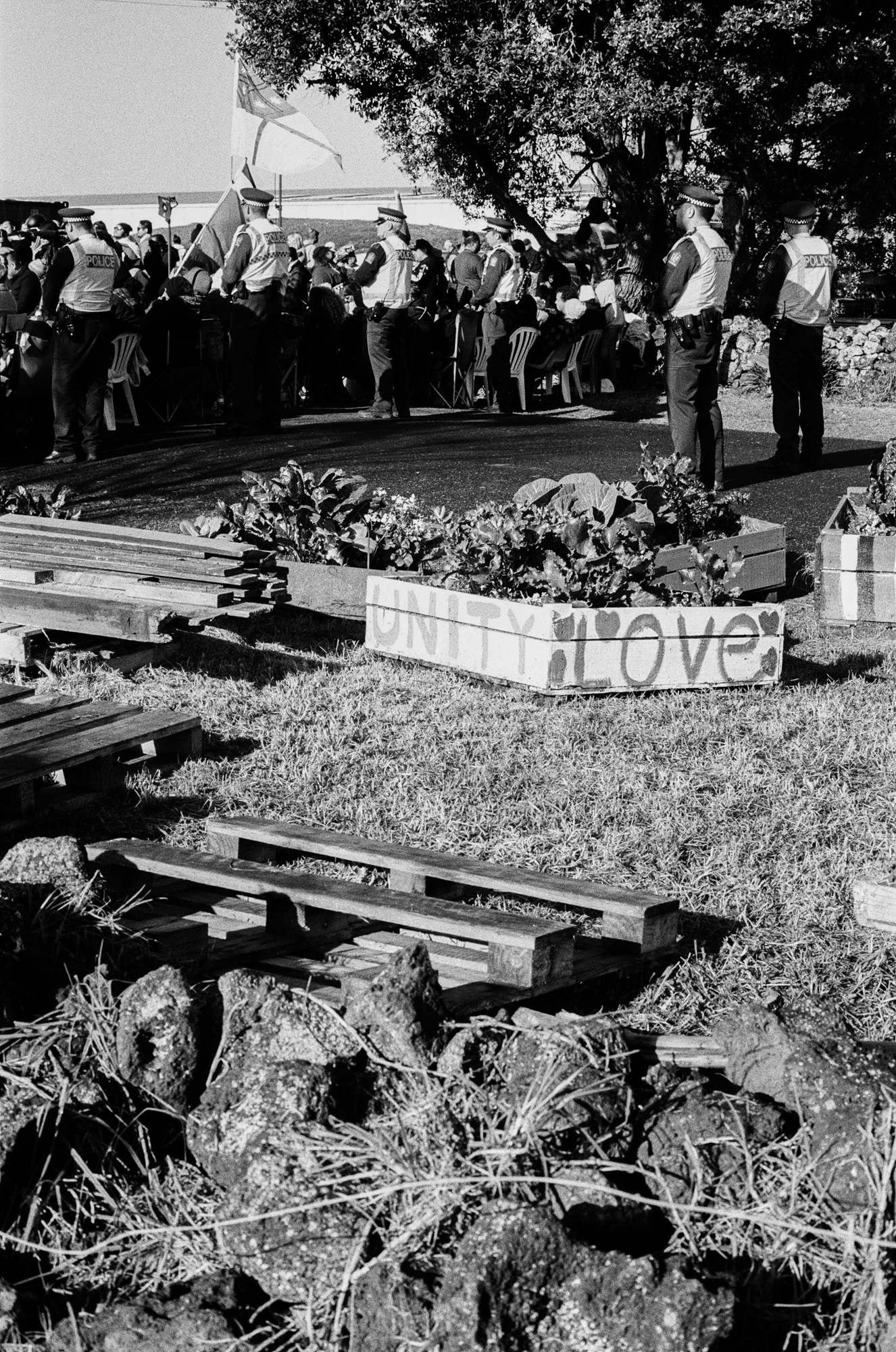
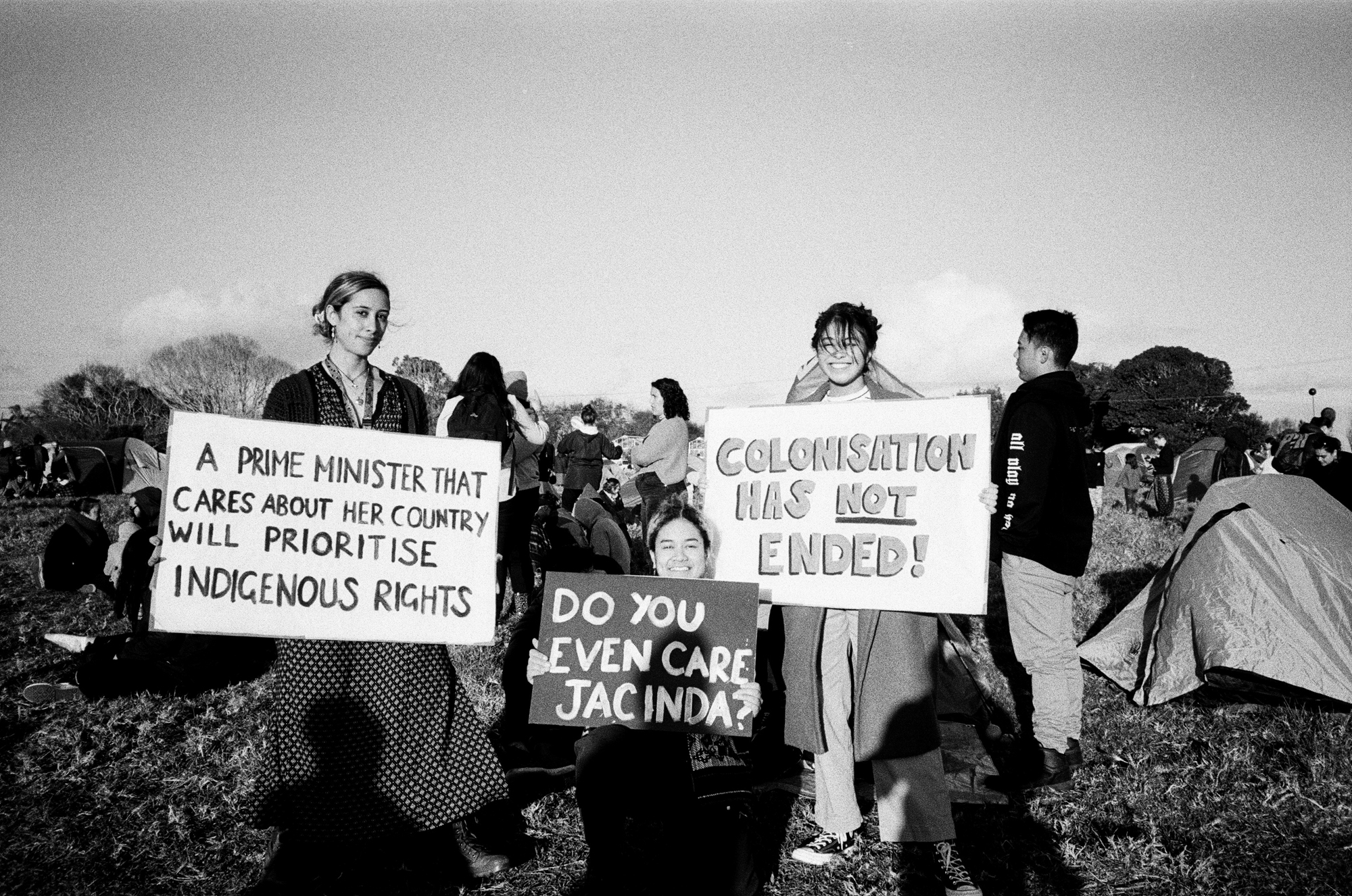
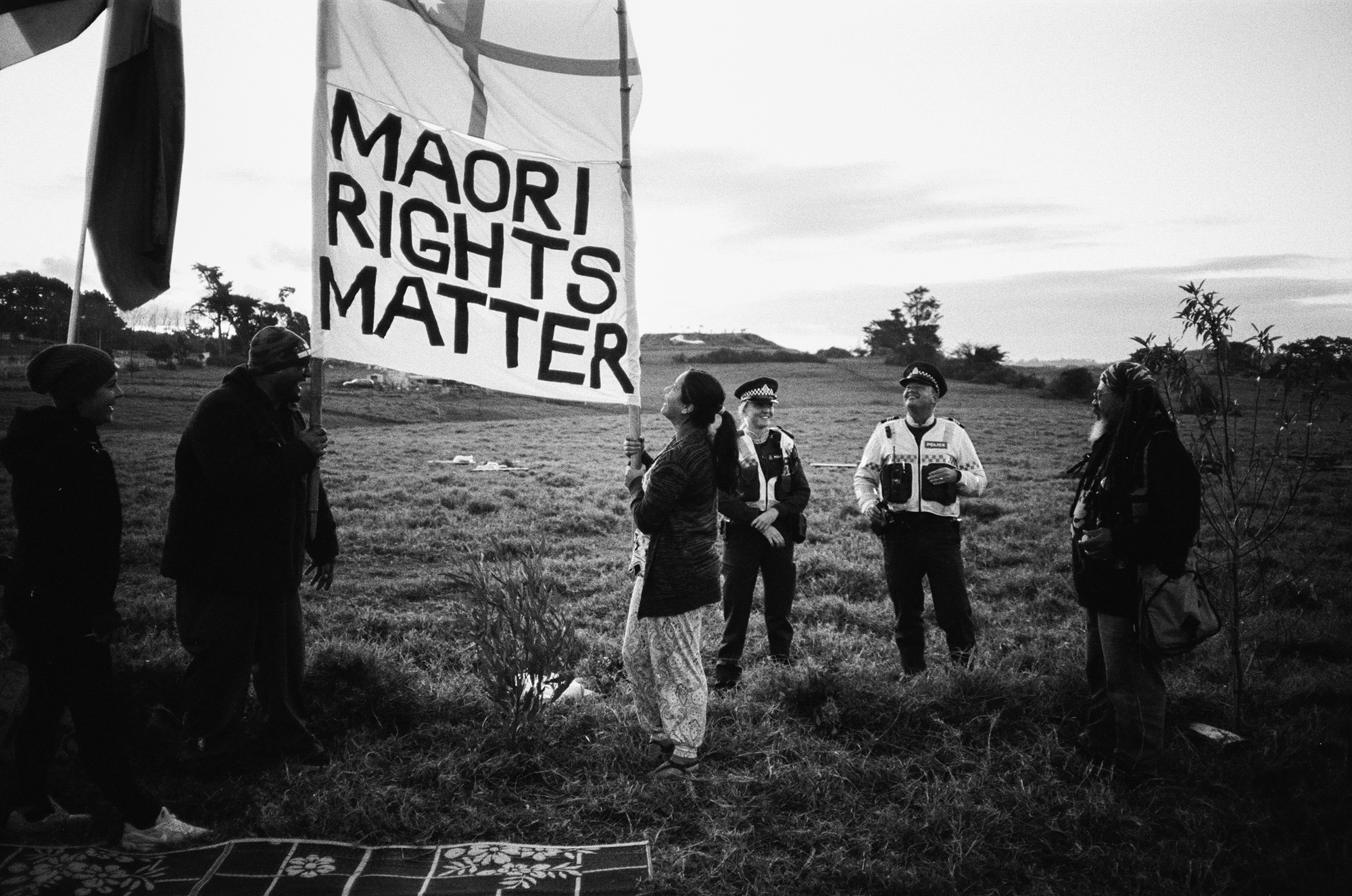
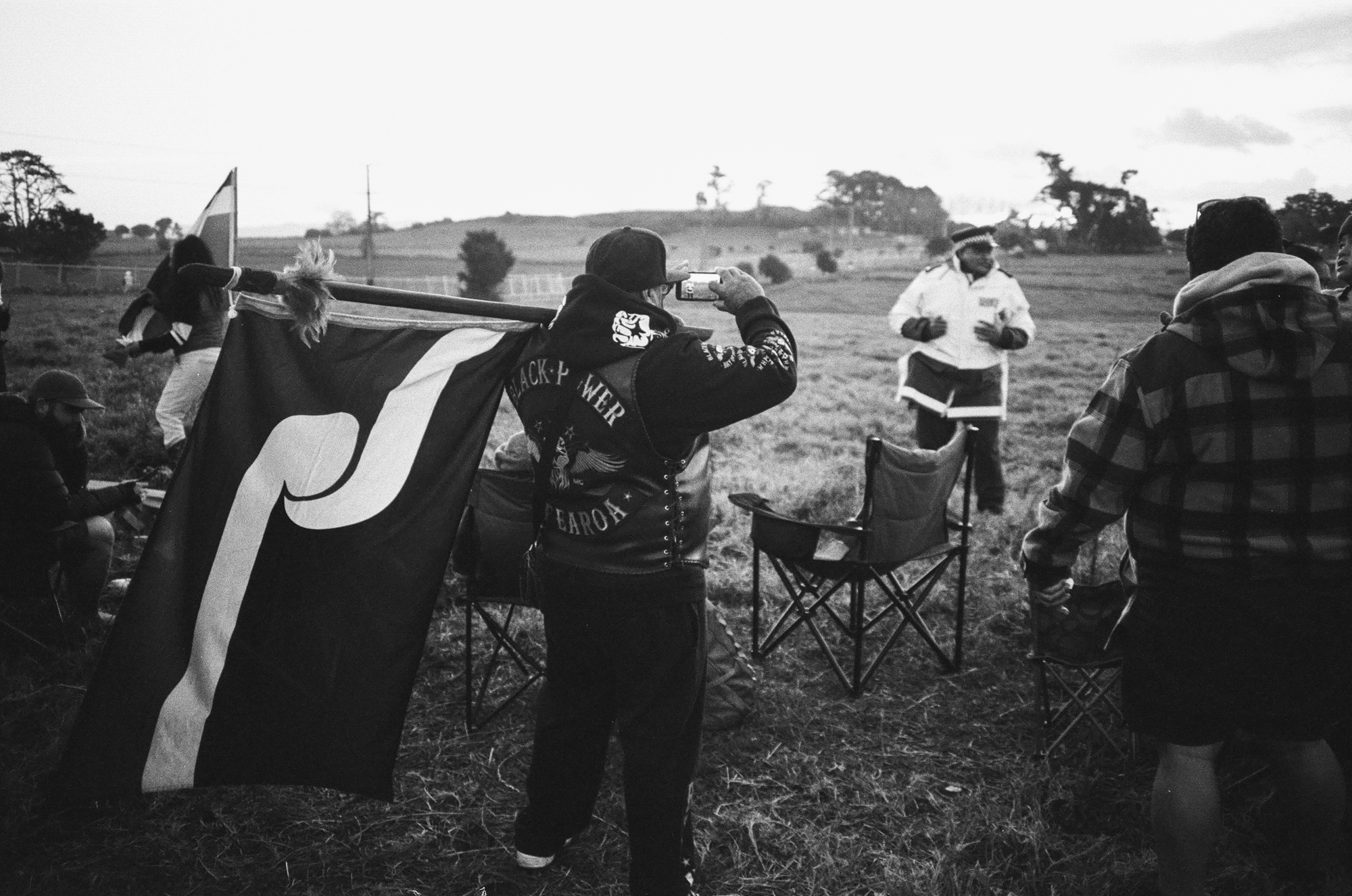
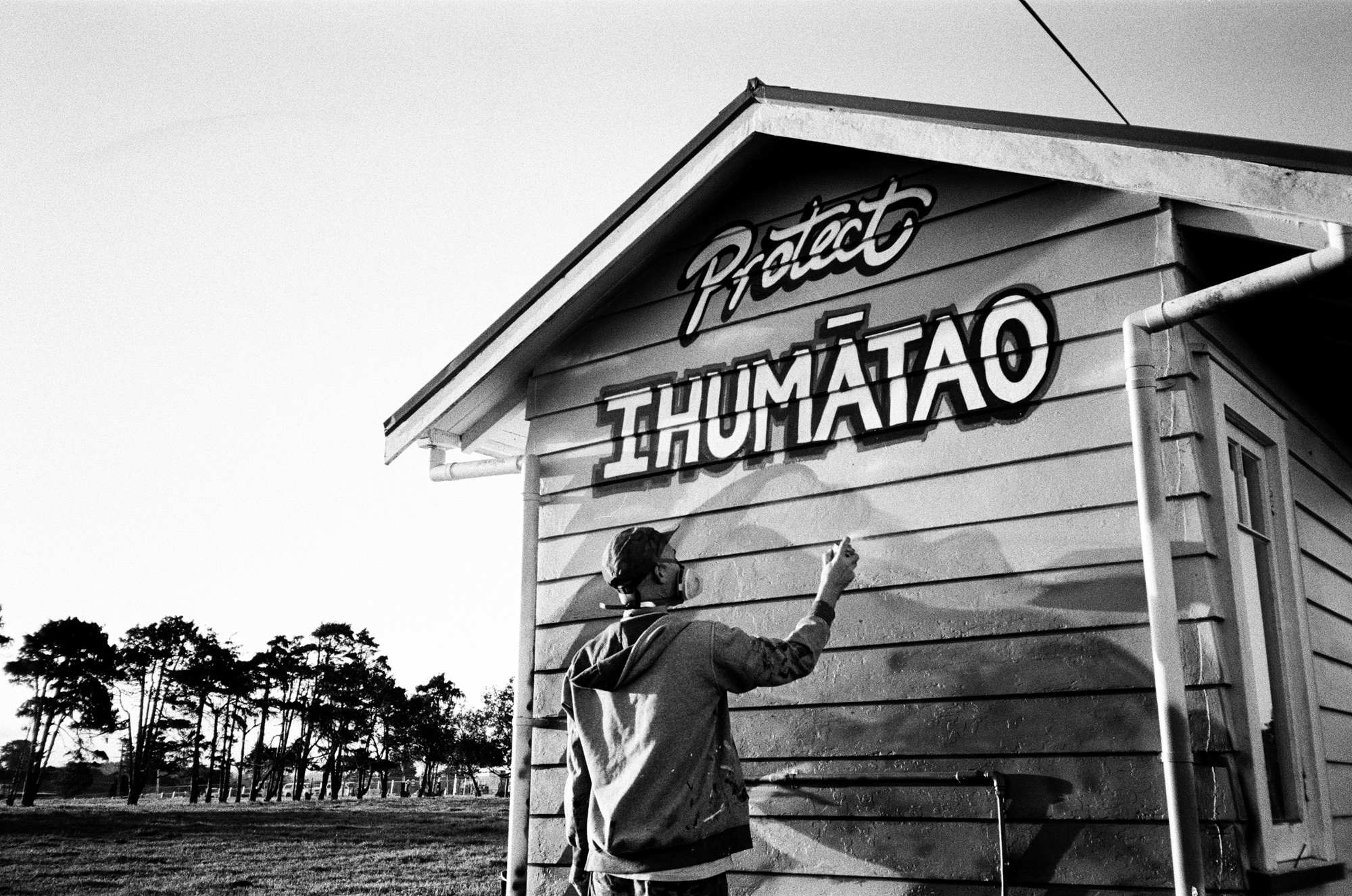
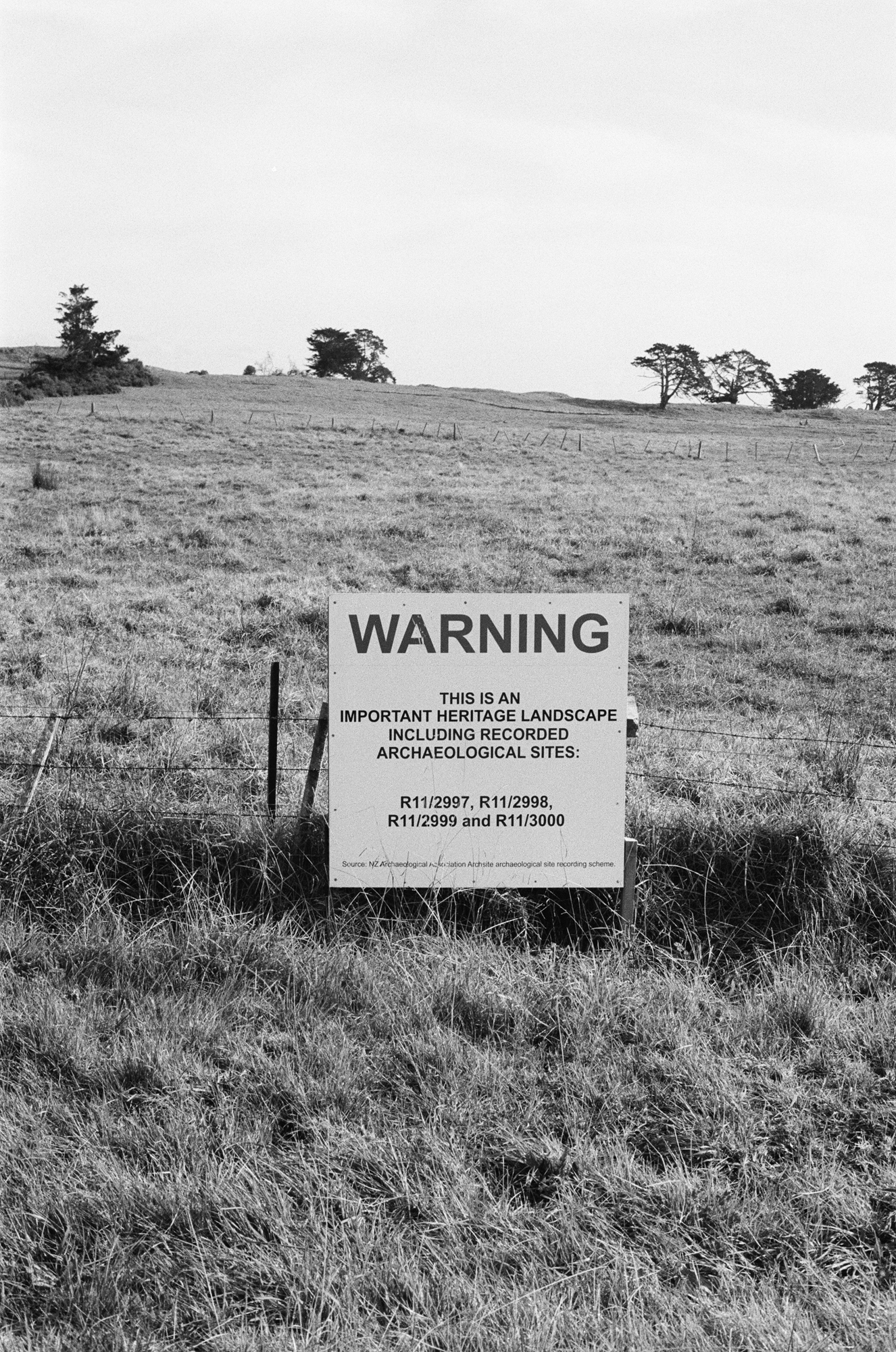
Responsibility - to understand and undo.
I’ve realised that privilege comes with a responsibility. If I’m privileged to gain enough money to put a deposit on a house, should I just clap my hands, buy my house and carry on living? Or as someone benefiting from the housing system do I now have a responsibility to help others who are being negatively affected by the housing system? As someone benefiting from privilege at the expense of those on the other side, should I just be grateful that I’m not the one on the other side, or should I be using my privilege to help with the work of balancing the scales? And what does it look like to “balance the scales”? I know I keep sending you off to read things but Murray Rae makes some great points about justice and scale-balancing in relation to Ihumātao here: Notions of achieving justice tested.
Let me be clear about what I believe - if you (like me) benefit from this lopsided system, then you have a responsibility here. You have to step outside that cosy worldview and confront yourself with the reality that others are living with. You need to make steps to begin understanding what it feels like to be on the other side of racism and colonisation. What it feels like to live with the generational wounds from the horrific acts in the history of “New Zealand”. You have a responsibility to try to understand what this movement wants and why, and how we can seek justice together.
We also need to understand how vital the deep well of tradition and knowledge found in Māori culture is to our country - there is so much we can learn from if we can be open and trusting. I really believe that Māori culture holds keys that can help us all to heal. This is so much bigger than a land dispute. We’re looking at the generational effects of colonisation, a flawed system, profits vs people, the sacred feminine, the environment, religion, justice, and an empowering of people who have had enough. Ihumātao feels like a glimpse of what this country could look like if Māori were truly respected as kaitiaki (guardians) of Aotearoa.
I believe understanding is the first step. Please try to listen and understand before you form and verbalise your opinion. Once we start understanding the Māori experience in Aotearoa, the importance of this movement will start to become clear and the undo-ing (decolonisation) will gain more traction.
I’m sorry for the amount of generalising I’ve had to do here, but I hope you can see where I’m coming from. If there is healing to happen in this country, we all have a part to play.
With privilege comes responsibility.
-Sam
Artist Interview with The Black & White Box
My photo lab, The Black & White Box, have started a great little series on their blog called “Artist Interviews”. I was surprised and honoured to be asked a few questions for it recently.
My photo lab, The Black & White Box, have started a great little series on their blog called “Artist Interviews”. I was surprised and honoured to be asked a few questions for it recently. It was actually really nice to sit down and put my thoughts about shooting into writing.
You can see the original post on their website (and more) here: The Black & White Box - Blog
A super dad and husband, as well as an awesome photographer, we’ve been long-time fans of Sam. And because we think he’s the best, we wanted to ask him a few of our burning questions about his practice, and he gladly obliged…
Tell us a little bit about yourself!
I’m 27, I live and work in Masterton for an innovative local tech company, I’m a husband, a dad, a songwriter/musician, and I’m a 4 on the enneagram. I’m deeply interested in art, theology/philosophy (from a post-evangelical perspective), and how they inform and impact our lives and the world. I love brewing single origin coffee in my V60, heading on family adventures, and connecting with people.
How did your love of photography come about?
I started with a hand-me-down iPhone 3 and VSCo filters, so I could post our newly-married adventures online. I guess that my initial desire to take photos came from being of the social media generation – wanting to document what we were up to and share that with friends, especially with things like recording music, playing shows etc.
One weekend my good friend Tom (hollow.co.nz) documented our band practice and the surrounding antics on his family’s old film camera. I wanted a taste of the film action myself, so I bought the cheapest 35mm camera and film I could find online – Holga 135BC and Superia 400, and I took that combo with me everywhere that summer.
My boss caught me with it one day, next day he turns up with his old (mint) Minolta XE-1 and 50mm f/1.4 lens he had tucked away in the garage and said I could have it! I was so excited that I took it on a trip to Nepal as my only camera, before I had even put a test roll through it. It was getting those scans back that solidified my love for photography – I was hit with waves of emotions as I scrolled through the photos. I think that moment showed me the power of photography, I just knew that I wanted to keep taking photos. From there I started to see photos as expression and communication, rather than just pure documentation.
And I still use that Minolta regularly!
Why have you decided to document your family and life on film as opposed to other mediums?
Partially, it’s the resulting image I get without having to sit at a computer working in Lightroom, but it’s also the way it forces me to shoot. Shooting with a limited number of frames helps me to think more about the photo – framing, light, timing, what should/shouldn’t be in the frame etc. Shooting without immediate feedback on a screen also means that I’m more engaged with what’s happening in the moment – I’m shooting someone and as I lower the camera I’m looking back at them straight away, rather than down at a screen. It’s quite a peaceful experience shooting this way with old cameras, especially after spending my work week in front of a computer. It’s also a nice feeling to know that in the future, my photos aren’t going to be lost when a hard drive fails or becomes obsolete!
I guess you could summarise it as: having a camera on me helps me to keep my eyes open to the beauty of moments I may have missed otherwise – like the way the light falls somewhere, or a small gesture between people – and shooting on film helps me to stay engaged with that moment and know when to put down the camera.
How do you find motivation to continue to go out and pursue your creative endeavours?
That’s a tough one. With both my main creative endeavours – music and photography – motivation comes and goes in waves. I always feel a need to express myself from within what’s going on in my life, so I can never just sit back and not create, but I do allow myself to have breaks. After I finish a roll of film I just won’t load anything up again until inspiration strikes and I want to shoot again. Sometimes that can be a couple of weeks. In the meantime I usually read up on the masters of photography and look at their photos for inspiration. I’ll often reflect on my photography and make notes of things I want to work on or shoot more.
There’s a quote I heard Rob Bell say, “you’re a human being, not a human doing”. This one stuck with me – I try to focus on being, being present to myself and the moment, and allowing the art to come out of that naturally.
What advice would you give to your younger self given your experience in life so far?
“Follow your gut”. I’m only learning this now and it’s still so hard!
“Be true to who you are. Try not to compare yourself or your work to anyone else.”
What is your current camera setup and favourite film?
Hasselblad 500CM (80mm lens and waist level finder) with Portra 400/800 – hand in hand with the Olympus XA with HP5+ or Tri-X, pushed to 1600.
That being said, I have a few other inherited cameras I still use for fun and a bunch of old expired film to work through!
Are there artists you look up to or admire?
I just love looking up all the masters of photography, some of those who have had significant impact on me are: W. Eugene Smith, Josef Koudelka, Henri Cartier-Bresson, Vivian Maier, Gordon Parks, Sebastião Salgado, and William Eggleston.
I’m also a fan of (the slightly more contemporary) Andre Wagner and Alec Soth.
What importance do you think film could have for future generations?
I think everyone learning photography should learn about film – the process of shooting, developing, and darkroom printing. It is just so magical, and so fun. Working with actual light and materials instead of sensors and settings and menus is so refreshing for me, and I can see that being the case for even more people in the future too. For certain types of commercial and personal work, film can be a really good fit too. I try encourage anyone I can to shoot a roll!
Where do you see yourself in 5 – 10 years time with your photography work?
I’d like to organise family shots into some really nice albums, but also I’d like to get out in the community with my camera more and maybe work on a photobook. I’m always thinking about what photographic project I could take on, going over my photos for reoccuring themes to run with a bit more. But for now I’m just following my gut and my curiousity and seeing what comes of it! The outward goal for me is to record what I see in the world in a way that will make people feel what I feel when I’m in the moment. The world moves so fast so if I can learn how to stop and feel, and share that others, I’ll be happy.
Where can we view more and keep up to date with your photography?
Check out my website where I’ve been blogging a bit – www.samtanner.nz
Or come say hi on Instagram @samtannernz! I’ve made a handful of awesome photographer friends on there!
Overexposing Portra 800
Being in a small town means a lot of what I learn about film photography comes either from trial-and-error or the internet, so I end up trying different films and various experiments to see how I like the results for myself.
Being in a small town means a lot of what I learn about film photography comes either from trial-and-error or the internet, so I end up trying different films and various experiments to see how I like the results for myself. I’d read online that Portra 800 is able to be overexposed a lot, increasing saturation but maintaining great skin tones, so I set out to try it. I snagged a box of the stuff in 120 from The Black and White Box to take on our summer camping holiday in Kaiteriteri, and here are the results!
Technical Notes
I metered at 200 ISO (rather than the film’s “box speed” of 800 ISO) for the shadows with my handheld Sekonic incident light meter - i.e. if there was harsh sun I would shade my meter, so no sun was falling directly on it, and take my reading there.
I really like how they all came out and I will definitely be doing this again in the future, especially when I have plenty of light available to allow me to overexpose.
Click/tap a photo to open the slideshow.
-Sam
Hasselblad 500cm // Portra 800 // dev+scan by The Black and White Box
Expired Films: Ektacolor Pro 1000 & T-Max 100
Recently I’ve stumbled into buying or receiving a handful of expired rolls of film, mostly expired in the 90s, and I’ve enjoyed shooting them a lot more than I thought! I have come to a place with my photography that I know what film types I like to shoot - I know how they will respond to changes in exposure, I know how to get the colours I want, I know how to work around changing or less-than-ideal lighting scenarios. It’s a good work flow. I know what to expect.
But maybe that’s not the point, for personal photography, to “know what to expect”. Shooting these old rolls (especially the Ektacolor which I couldn’t find much about on the internet) has brought back some of that excitement of when I first started shooting film. It’s kind of exciting not knowing what the colours will look like or if I gave it enough exposure.
I metered for these shots by adding one stop of exposure per decade since the film’s expiry. For example, the TMax was ISO 100 and expired by 20 years, so I set the meter to ISO 25. Ektacolor was ISO 1000 and expired by 20 years, so I set the meter to ISO 250. You’ll see some of these Ektacolor shots are still underexposed (hello grainy/faded shadows/VSCo look), but they still look cool and I had a blast shooting it and waiting for my scans!
Click/tap a photo to open the full size version.
-Sam
Kodak Ektacolor Pro 1000
Shot on Hasselblad 500cm // 80mm f2.8 // dev+scan by The Black and White Box
Kodak TMax 100
Shot on Hasselblad 500cm // 80mm f2.8 // dev+scan by The Black and White Box
Expired Film: Agfa Vista 100
Recently I found a bunch of Agfa Vista 100 for sale locally, and at a bargain price, so I snapped it up! After selling a few rolls and throwing some to Mr. Waru (check out our “Cam & Sam” film adventures on youtube), I loaded up my Olympus XA with a roll to give it a jam myself!
I’d previously shot AgfaPhoto Vista Plus 400, so I was expecting that same over-saturated, consumer film look. I didn’t like that film when I shot it so I wasn’t expecting much of this roll. For you film photographers - it’s worth noting though that the more modern 400 speed Vista is not even produced by the same company that these expired Vista 100 rolls were. Without significant research I gather that Agfa at some point became AgfaPhoto, and people claim that the modern Vista 400 is just rebranded Fujifilm stock (it is suspicious that both Fujicolor C200 and AgfaPhoto Vista 200 were discontinued around the same time).
Ramblings aside, these expired rolls were made a long time ago and expired in 2008. I applied the usual rule of 1 stop of extra exposure per decade of expiry, plus the Olympus XA shoots in aperture-priority so I added another stop when I was shooting in the day, to make sure I didn’t underexpose the film. That means I was shooting at ISO 25! Unlike digital, overexposing is better than underexposing, which should be avoided unless you like faded grainy shadows.
I was pleasantly surprised to find the film didn’t have over-saturated colours and the skin tones came out great! I’m glad I saved a few more rolls to shoot myself. I have a few other various types of expired film thanks to Cam, so I’ll be sharing those results soon too!
-Sam
Dev+scan by The Black and White Box
Pushing Portra 400 to 1600
Portra 400 - everybody’s favourite colour film (me included). I’m sure we’ve all read and seen online the rave reviews, the under/over exposure camparisons, and seen the gorgeous tones it renders. What I found out recently though that I hadn’t heard about, was it’s ability to be pushed to 1600 or even 3200 (see Jonathan Canlas)!
I stumbled upon a blog post that claimed Portra 400 pushed one stop (to 800) gives more satisfying results than Portra 800 shot at box speed (800)! What?! Check out that blog post here. Obviously “better” all depends on what look you are after, so I set out to see for myself. Full disclosure: this isn’t a comparison as I haven’t tried pushing Portra 800 - just a test to see what Portra 400 looks like pushed.
My Setup/What is “pushing”?
I loaded up a roll in my Olympus XA. Normally if I’m pushing Tri-X or HP5+ to 1600 I set my meter to 800, so I did the same here. The XA shoots in aperture-priority (meaning you can basically forget about metering) with manual rangefinder focus for the sharp little 35mm f/2.8 lens. It’s nice being able to just focus, frame and shoot. Another benefit of the rangefinder camera is you can shoot slower shutter speeds than you would on an SLR (no mirror = no mirror slap/camera shake)!
So what is “pushing” film? The Darkroom Lab have a very clear guide to this on their blog, if you’re interested in pushing film you should go give it a read here, then come back! It would be a waste of time to repeat it all here but basically, you underexpose the film when you shoot it and you develop longer to compensate for that. When you push film, make sure that you tell your lab how many stops to push it in processing, and that it is marked super clearly on the roll/s! In this case it’s a 400 ISO film pushing to 1600 ISO which is 2 stops, marked as “+2”.
Results
When pushing film you will see added grain and contrast. I really like the way the colours came out! You still have gorgeous Portra tones but with more contrast (a side affect of the push processing) - really nice blacks with little/no weird colours in the shadows. Being able to shoot with smaller aperture or higher shutter speed indoors or in low light is really handy, so I may just have to do this again!
Click an image below to scroll through the gallery and see the results for yourself. Leave me a comment if you have any questions.
-Sam
Dev+scan by The Black and White Box










Ahiaruhe House
I’ve driven/ridden past this house so many times over the years, but never taken the time to get up close. I did take one photo recently while on a motorbike ride with my Dad. This is without a doubt the most photographed house in the Wairarapa - wanting to avoid a cliche shot I got down in the grass:
Shot on Ilford HP5+ pushed two stops / Minolta XE-7 / 50mm 1.4
Some friends (and fellow film shooters) came to the Wairarapa and were keen to check the place out, so we headed out one overcast morning. I was shooting two rolls of film I’d never shot before:
35mm Delta 400 in my Minolta XE-1
120 Ilford FP4 (expired) in my Hasselblad
Shout out to Zach and Xin for the good company! You can check them out on Instagram: @zachetc / @___xin.__ . They just completed a big roadtrip of the North Island and are currently sharing some of their images.
Shooting Thoughts
I don’t often shoot one subject with two cameras (I’m usually carrying one camera with me for the day) but this was a chance to finish off both of these rolls I had loaded so I took both cameras along. My lenses were 50mm on the Minolta and 80mm on the Hasselblad, both ‘normal’ focal lengths for their negative size, so it was relatively easy to switch between the two.
One thing I’ve been struggling with lately is the 50mm lens, especially after using my inherited Olympus XA with it’s nifty 35mm lens. The 50mm lens was a great lens to learn on, lending itself to simpler compositions and subject isolation. I still love it for portraits (and I’ve taken heaps of my favourite photos with it) but I find that over the last year or so I’ve been increasingly looking for a wider field of view - for portraits that capture more of the environment, more dynamic lines/angles that a wider lens can capture. That would have been especially handy in this situation i.e. inside the house. The missing staircase had some interesting light coming in from upstairs and broken stairs in the foreground, however due to the positioning of the walls I just couldn’t get it all in.
Interestingly I don’t have the same feeling with the 80mm lens on the Hasselblad - perhaps this is because the square format lends itself to different compositions, so I’m not looking for the same dynamics in a shot as I would be when shooting on 35mm film with a 2:3 aspect ratio. Any photographers relate?
It was also nice to shoot a still subject - usually I’m trying to capture kids playing or people interacting so this was a nice change of pace. I really “got in the zone” of shooting as I was able to take as much time as I liked to think about/frame a shot. Maybe I’ll find some time to do more landscape-type photography.
Take a look through the photos and let me know what you think!
-Sam
Dev+scan by The Black and White Box.















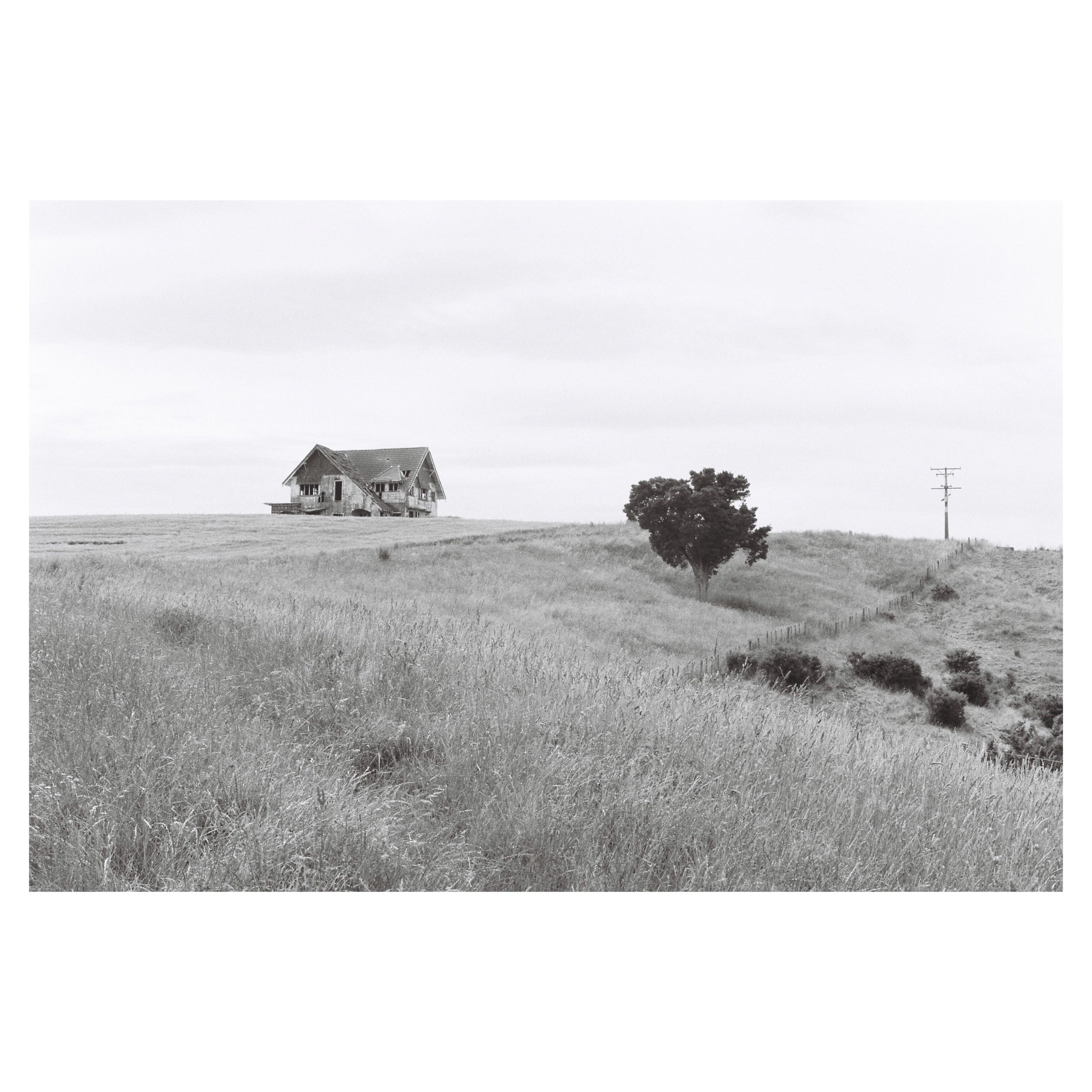

Waharoa Unveiling
Recently I was invited along to an unveiling of the new waharoa (gateway) to Masterton Intermediate School, and I decided to take my camera along, just in case. I pre-loaded it with Tri-X400 black and white film and decided I would only start shooting if it felt appropriate at the time. I made my way in and found a seat, but as soon as the covers started to come off I had to get up start shooting. Karakia (prayers) were chanted/spoken over the waharoa while the covers were removed, verbal expression of the community’s intention for this waharoa. This was a moving moment that made my hair stand on end - not only because the carving and karakia were beautiful but also because it was awesome to see a symbol of Maori culture positioned proudly in front of the school. We heard from one of the master carvers, Carl Rongonui, about what the various parts of the carving represented, followed by a haka from the school and a symbolic ‘first walk’ through the waharoa (and of course, a mean breakfast).
I’m not able to do the meaning of this justice, but I can say that the two figures on the vertical pillars represent our two local iwi (tribes), also featured are kaitiaki (guardians), and students reading and painting. The waharoa acts not just as a beautiful entry point to the school but also as a representation of the stewardship of the children and learning that takes place on the school grounds.
Our Maori culture is something all Kiwis should be proud of. To see the school putting it literally front and centre was really special to witness, especially after having recently had my eyes opened to some of the extent of our country’s tainted history (see Huia Come Home).
See my photos from that beautiful morning below, and if you get down a bit further you’ll find some photos I shot at the workshop where this was carved, as well as some colour photos of the waharoa itself.
B&W photos shot on Minolta XE // 50mm f/1.4 MC lens // Kodak Tri-X 400 pushed to 800
dev+scan by The Black and White Box
te Patukituki o Wairarapa
Centre for Maori culture in the Wairarapa, and workshop of master carvers Wayne Pitau & Carl Rongonui.
Ma Tatou Ka Ora Ai Tatou
Our Togetherness Keeps Us Well
Shot on Hasselblad 500C/M // Kodak Portra 400
First Rolls: Hasselblad 500CM
I recently sold my Mamiya RB67 and purchased a Hasselblad 500CM from a fellow NZ film shooter, Michael Neale (you should go check out his awesome work). I’m only a few rolls into it but I thought I’d share some of my photos and experience so far.
Kodak Portra 400 // dev+scan by The Black and White Box
Roll #1
On this roll I was shooting down to a shutter speed of 1/60 as I had been doing the same on my RB67, so I didn’t think much of it. Once getting the scans back I realised many of the shots either had motion blur or I had missed the focus! I’ve been using split screen viewfinders until now, so the Hasselblad focusing screen is taking a bit of getting used to. There were still a few I was pretty happy with though - I’ve included some below. You can click on a photo to view the full res version. The one of the ship is a good example of motion blur, as I was stopping down the aperture for as much depth of field as possible.
Roll #2
With this roll I only shot down to a shutter speed of 1/125 and took more care with focusing. I was much happier with the results across the roll. The photo of Judah and Ash on the swing was kindly featured on KEH Camera’s instagram feed.
Roll #3
Roll #4
thoughts (Camera Geekery)
Out of all the medium format cameras I’ve owned this is definitely the most portable - on the strap it hangs nicely against the body when not in use and isn’t too heavy. As expected of the legendary Carl Zeiss glass, the lens performs amazingly. Even at the widest aperture of 2.8 there is no noticeable vignetting, distortion, or loss of sharpness at the edges of the frame. The fact it is all-mechanical appeals to me and means I never have to worry about batteries. Despite the minimum focus distance being a slight limitation for close-ups, I get the feeling this is going to be a a great camera for portraits and landscapes, which is what I find myself gravitating towards when using the camera. There are only 12 shots on each roll, and to make the most of this larger negative size you need to really nail the focus and make sure you don’t get any camera shake from lower shutter speeds like I mentioned above.
The Hasselblad’s limitations inspire a more thoughtful, calculated approach and it rewards the extra work by producing stunning images. I don’t think medium format will ever replace 35mm for candid/documentary style photography for me but I find myself reaching for this camera more and more when I head out to shoot.
Hit me up with any questions in the comments below.
-Sam
"Flowercam" Photos and Video
I went to a stag do on Labour Weekend, and I really wanted to take a light camera that I could keep in my pocket all day and wouldn’t require too much thought. I was taking the stag himself over to Wellington via motorbike to kick the weekend off, and while I was prepping my backpack the night before, I was hit with a lightning bolt. Buried in the bottom of a stack of old suitcases was the perfect camera…
I picked up this little gem (flower) many months ago at an op shop, after fiddling with it enough to realise it appeared to actually work. A stag do and accompanying antics seemed like the perfect occasion to give it it’s first outing. I used one roll of Kodak Tri-X 400 over the course of the weekend, pushed to 1600 in processing as I had only rough guesses about what the fixed settings might be.
I had many doubts about the quality of the results and whether I would actually get any photos from it, though I’m glad to say I was pleasantly surprised! I found it a refreshing challenge having no settings to change and focusing purely on framing or even just whipping it out to snap something in a split second with no thought at all. The goal was to document the weekend and it did this perfectly!
My favourite shots are the ones I spent a little more time framing, like the wharf jump and my accomodation in the morning. The cheap construction of the lens is partially disguised by the added grain from pushing the film 2 stops, resulting in an overall softness that is not out of place. It goes to show that you don’t need expensive equipment to make good photos! All it took here was a bit of creative vision and an understanding of my limitations.
We made a video of the whole thing over at Cam & Sam - check the video and photos from the day below.
-Sam
Kodak Tri-X 400 // Dev+scan by The Black and White Box
South Island, Winter 2018
Our second annual winter holiday to visit the Waru's in Invercargill was just as cold as expected! We had a great time catching up, visiting the snow for a day/night in Queenstown, drinking good coffee, eating great food and just general antics.
in the bag:
Minolta XE-7 with 50mm f/1.4
Olympus 35 RD
Mamiya 645 Super
Sekonic light meter
Portra 400 (35mm and 120)
Japan Camera Hunter Streetpan 400
Expired Ilford FP4+
Beanies to protect both the cameras and my shaved head
Normally I would only pack one 35mm camera and one medium format camera but I had recently been given the Olympus, had it serviced and new light seals, and I wanted to see how comfortable I would be shooting a rangefinder. I had a great time shooting it for about half a roll - more on that later.
The trusty Minolta with 50mm lens is my constant companion which I shoot most of my work on, and as a medium format option the Mamiya 645 is just that much more portable and quicker to shoot with than the mighty RB67.
Here, at the amazing Bespoke Kitchen in Queenstown, ends this 35mm roll from my Minolta XE-7. I loaded the next roll into the Olympus 35 RD, unfortunately while shooting the roll it took a serious tumble when the strap broke, jammed up and put a massive light leak across the entire exposed part of the roll. In some cases these leaks made for cool shots! Excuse me for a minute while I wipe my tears for the Olympus.
After picking up the shattered pieces of my camera and emotions, I rewound the roll and chucked it the Minolta for the next leg of the journey - back to Wellington with the Waru's in tow.
